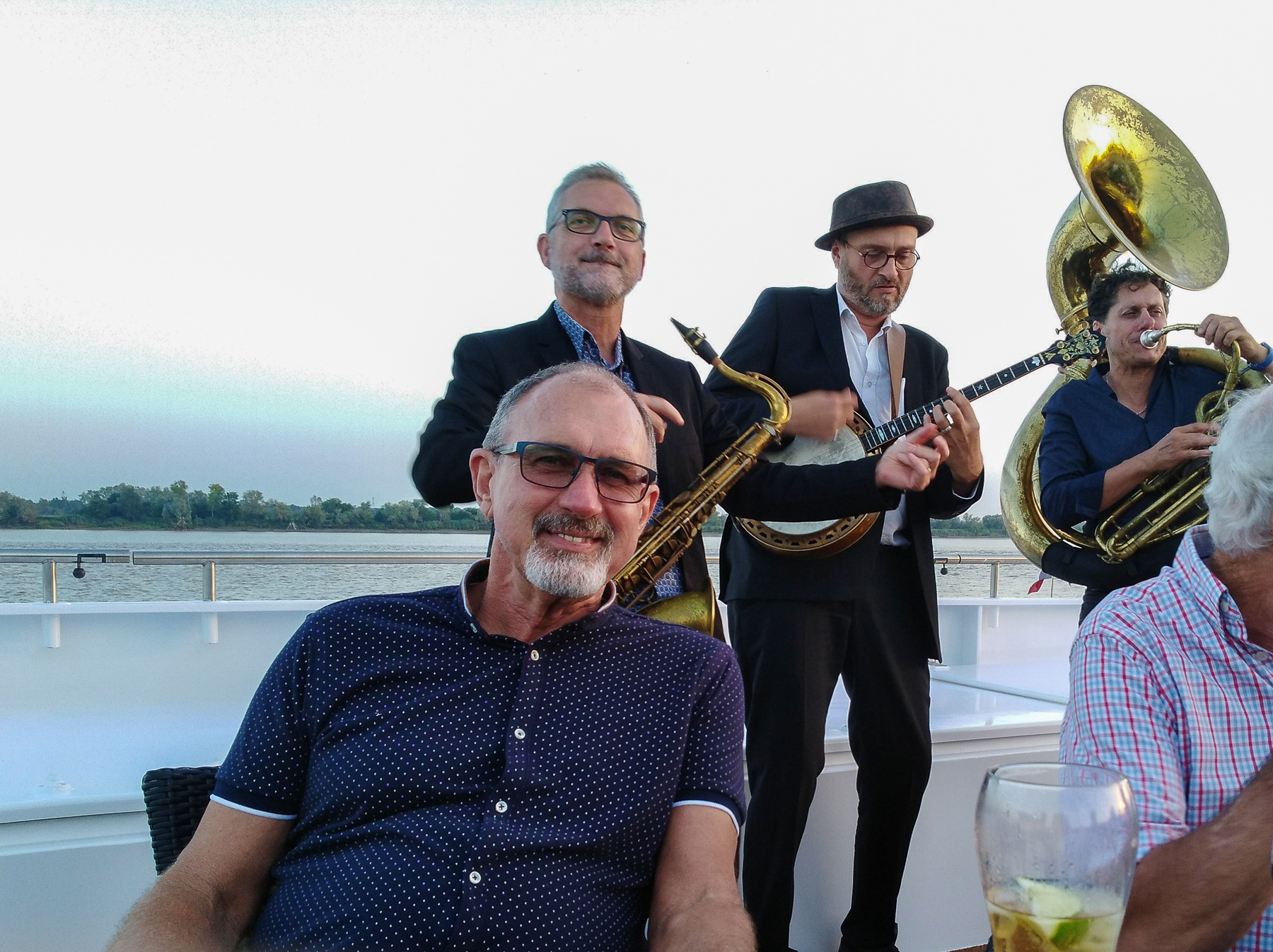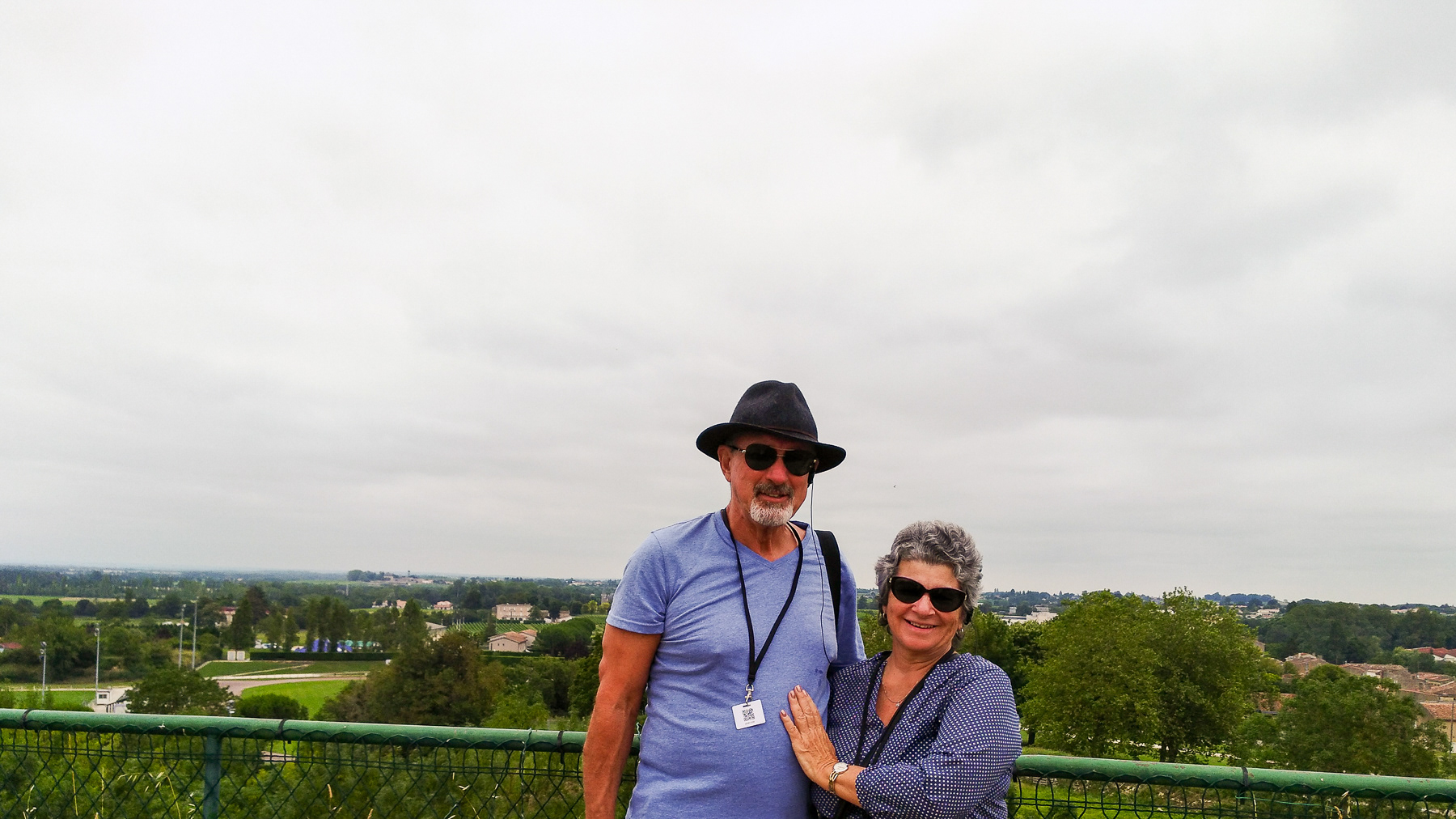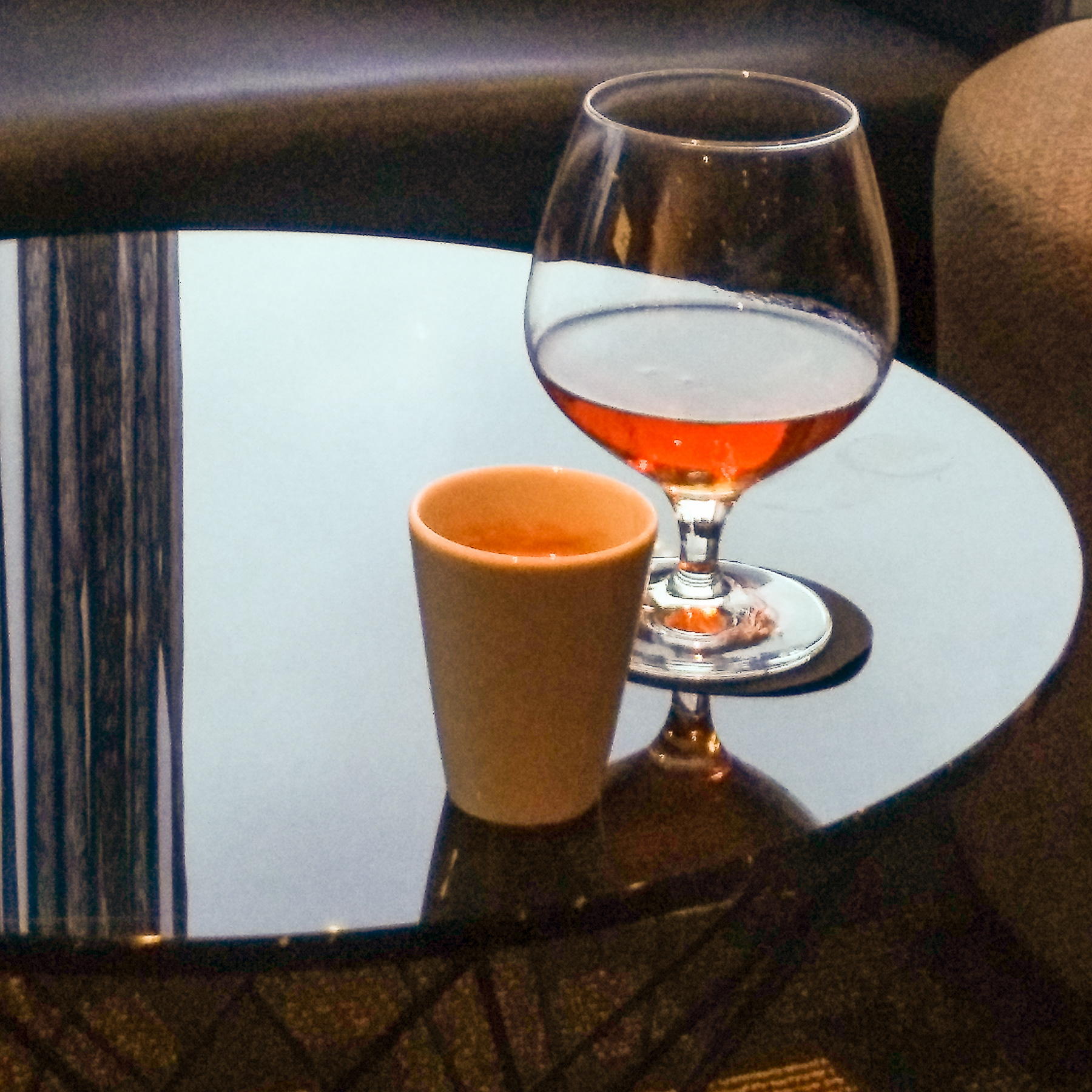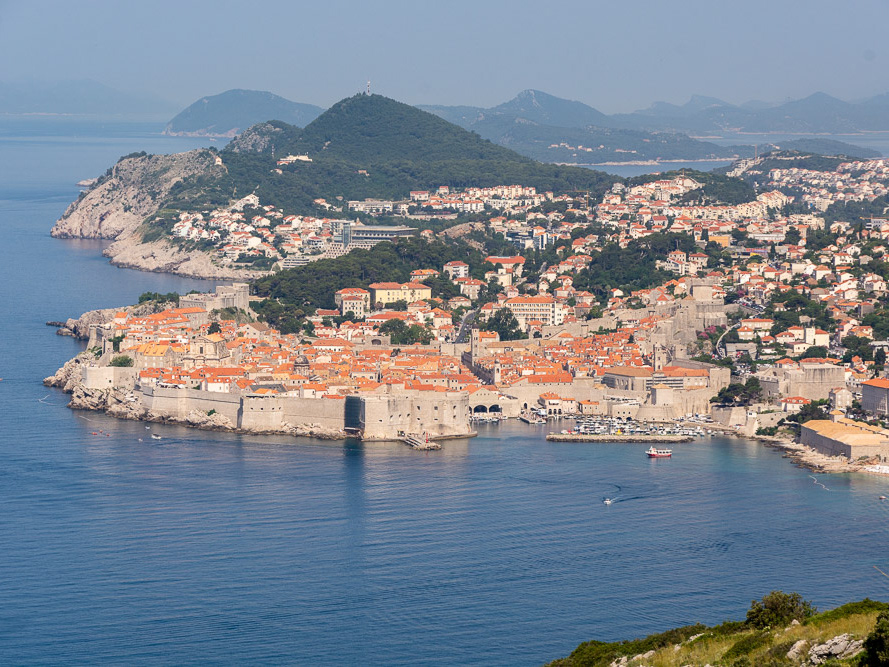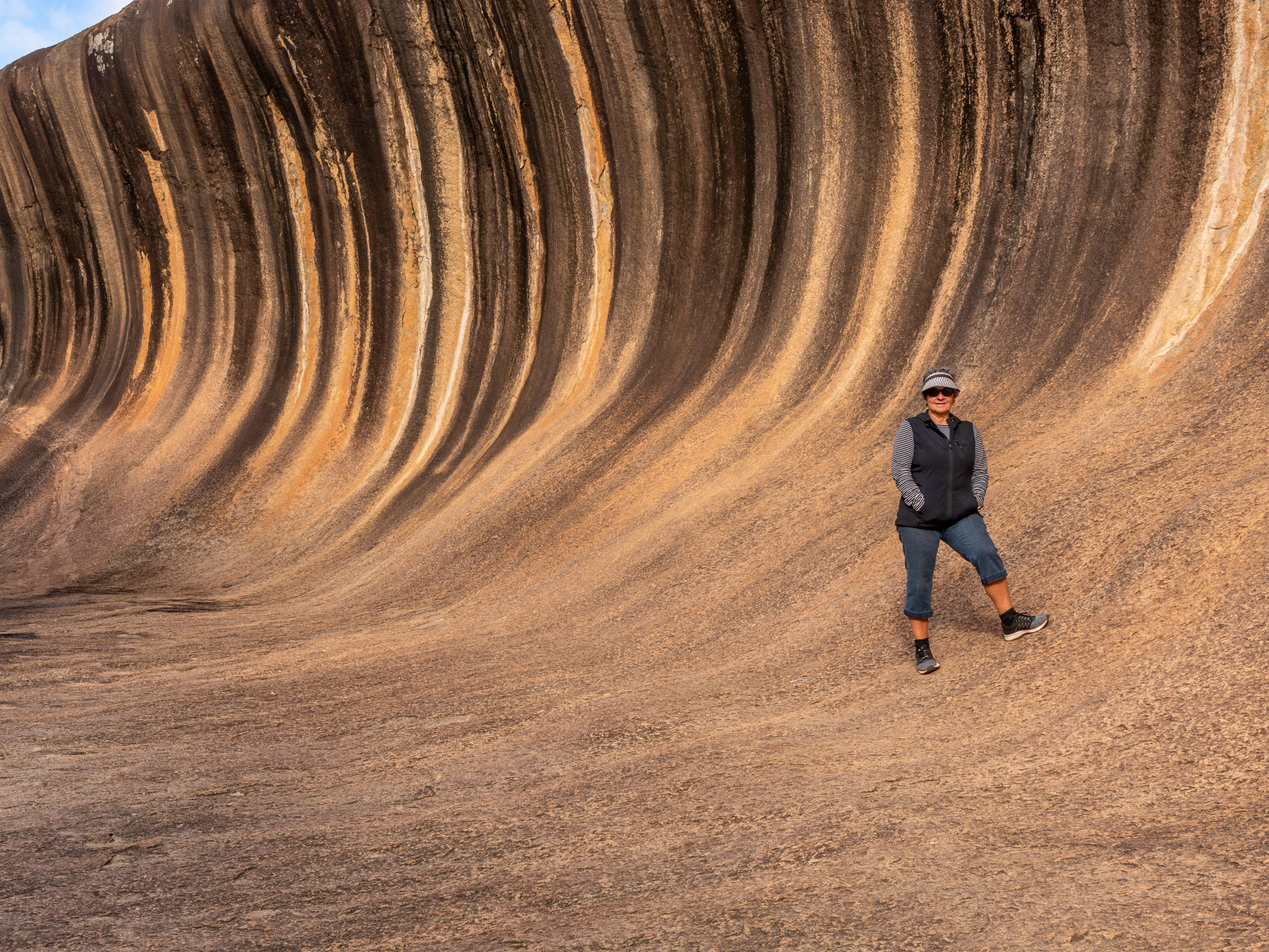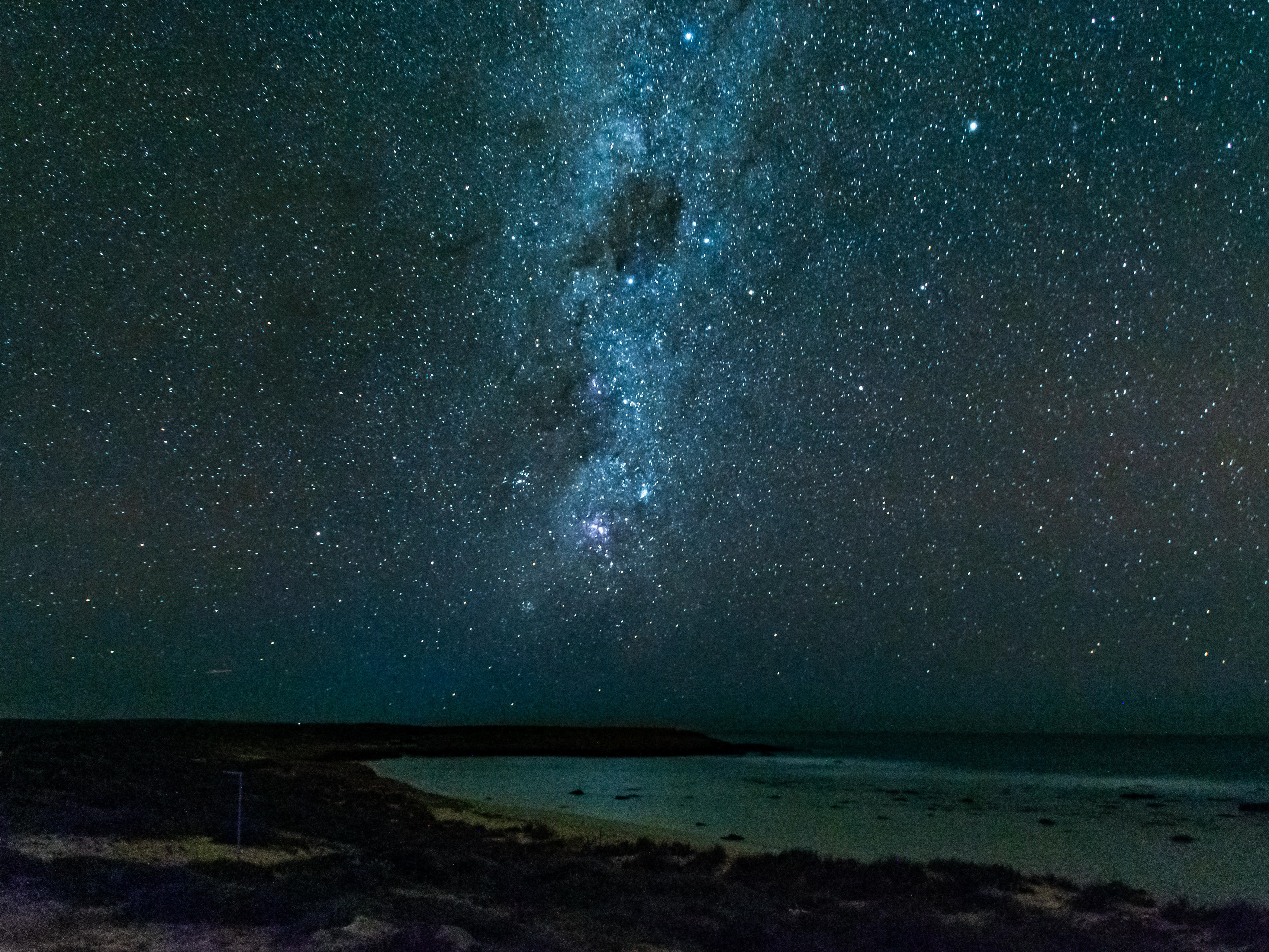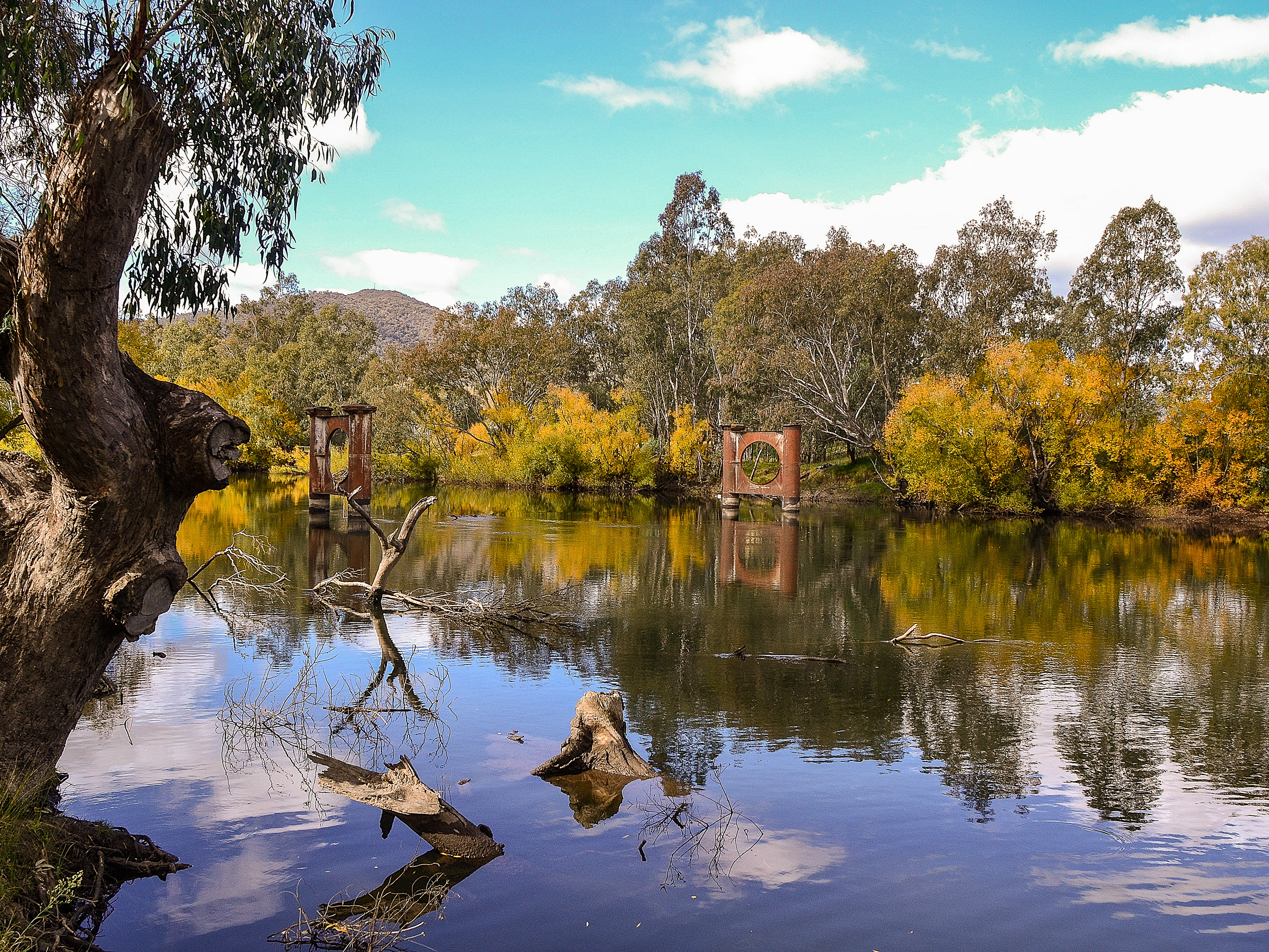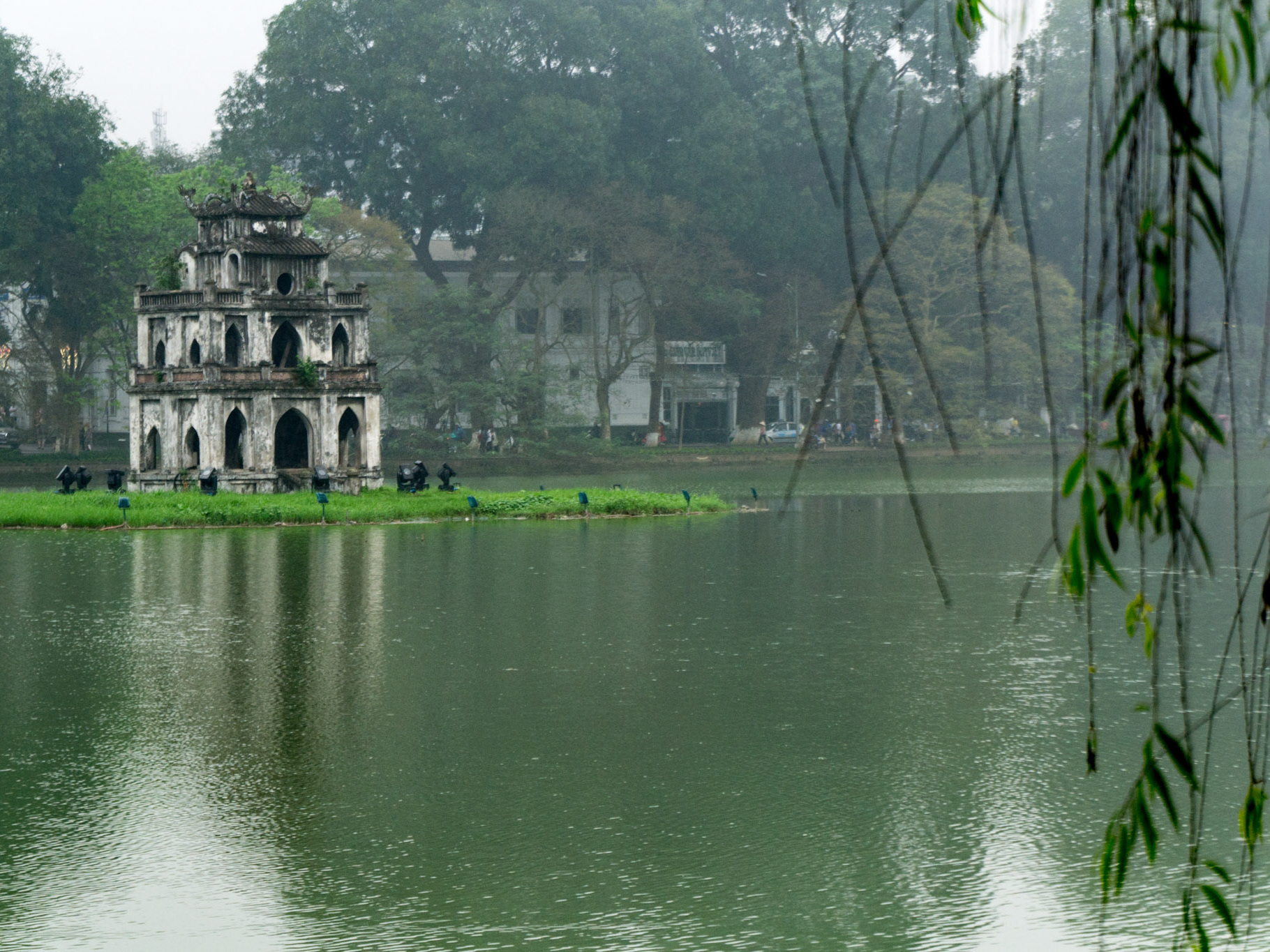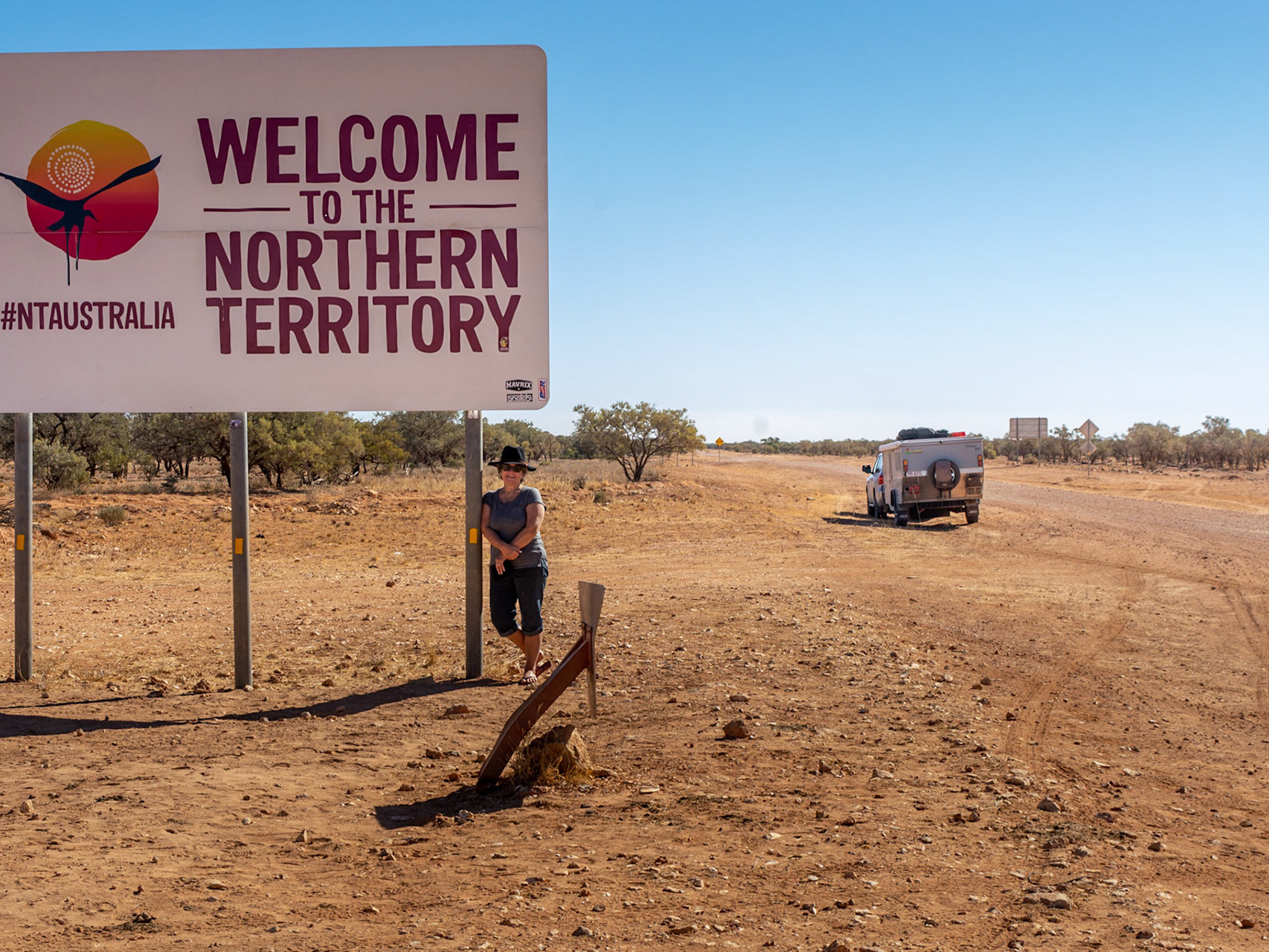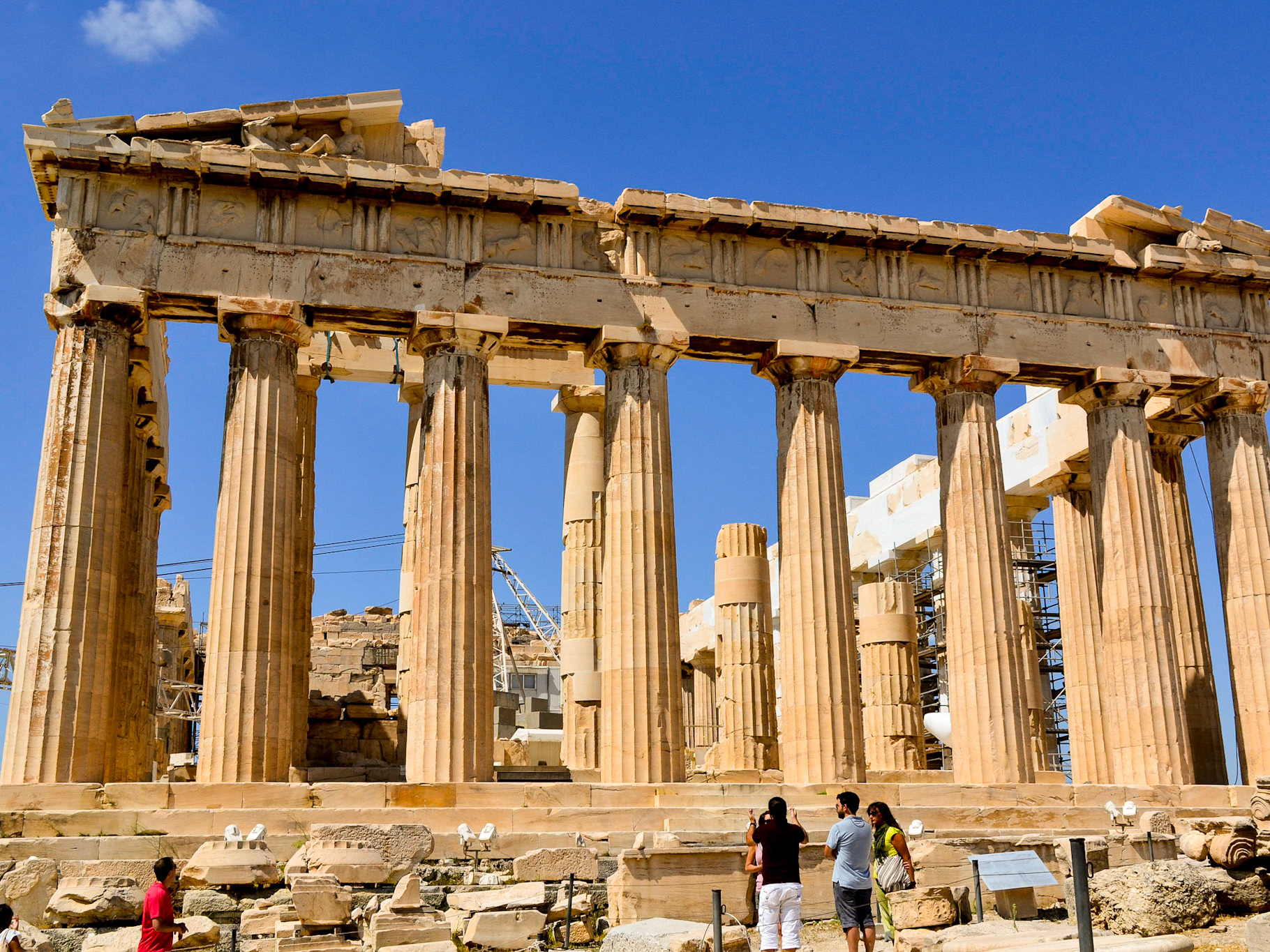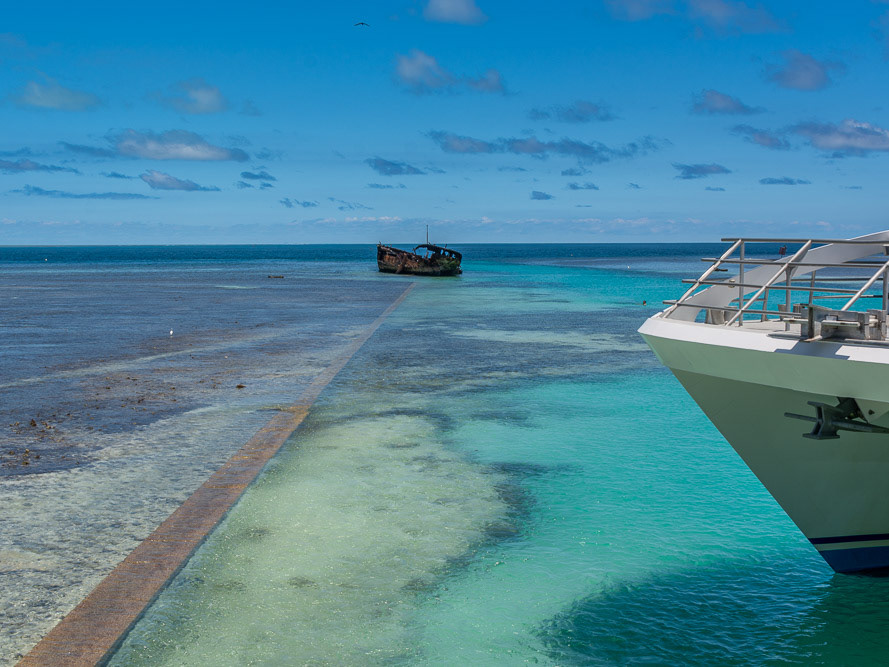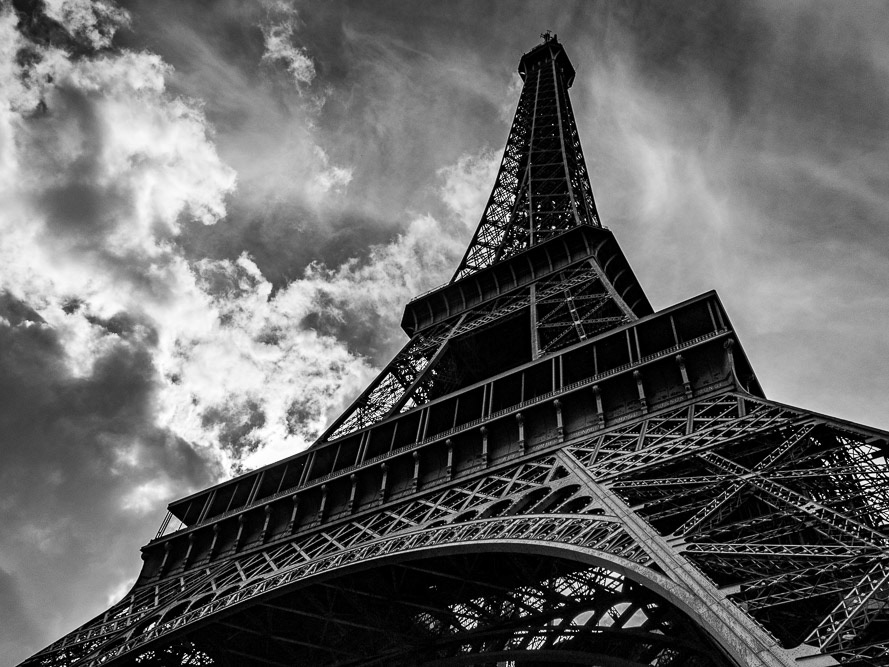Day 1 - Cruising the Dordogne River to Libourne where we disembark to visit Saint Emilion, a medieval city at the crossroads of Bordeaux, Saintonge and Périgord.

An imposing Chateau on the banks of the Dordogne River as we cruise towards Libourne.
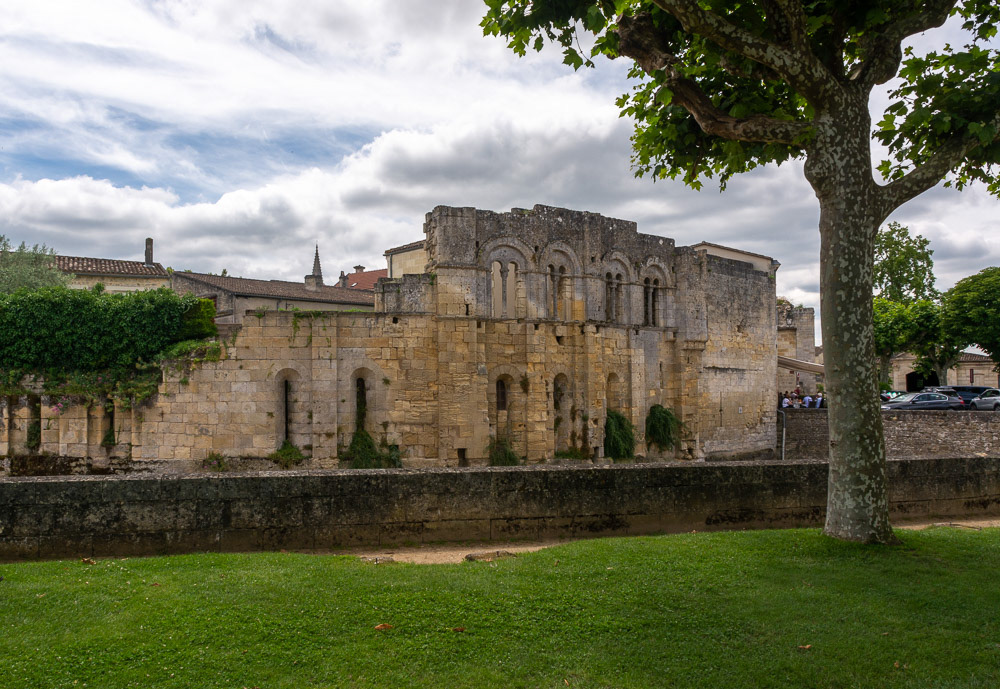
Fortified walls greet us as we arrive in Saint Emilion, a UNESCO World Heritage Site, with fascinating Romanesque churches and ruins stretching all along steep and narrow streets.
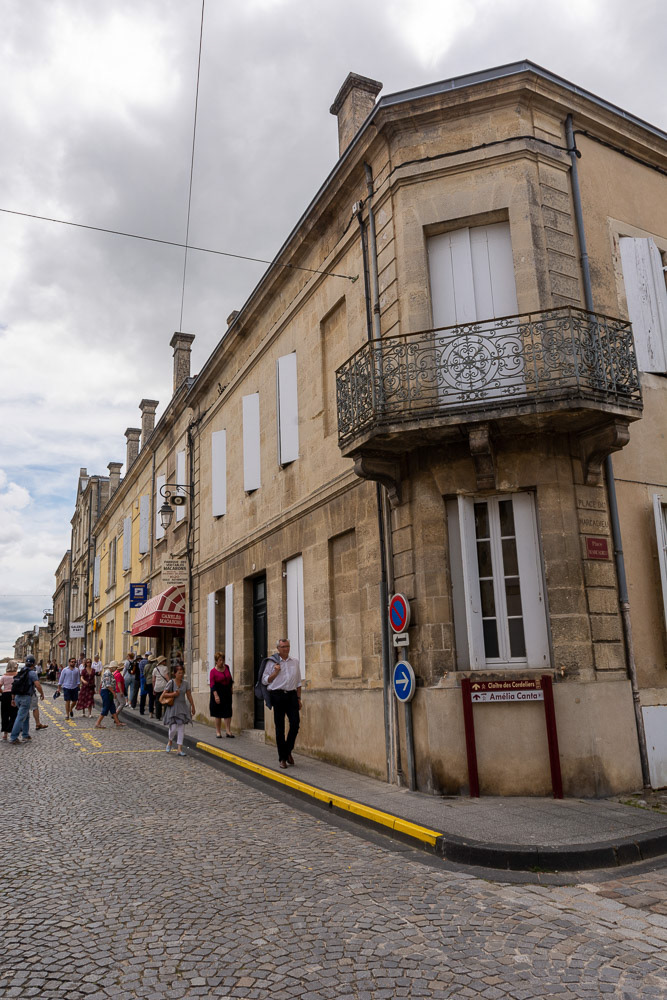
The main shopping precint attracts a crowd of tourists.
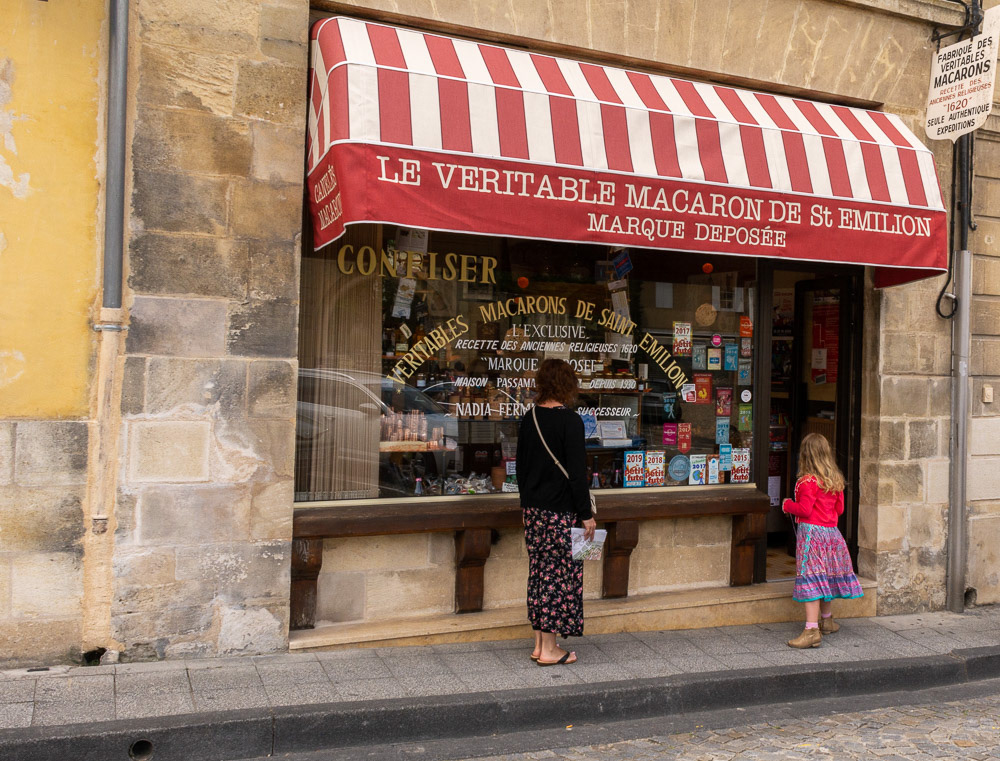
Macarons - a specialty of Saint-Émilion since the Urseline sisters developed the recipe in 1620.
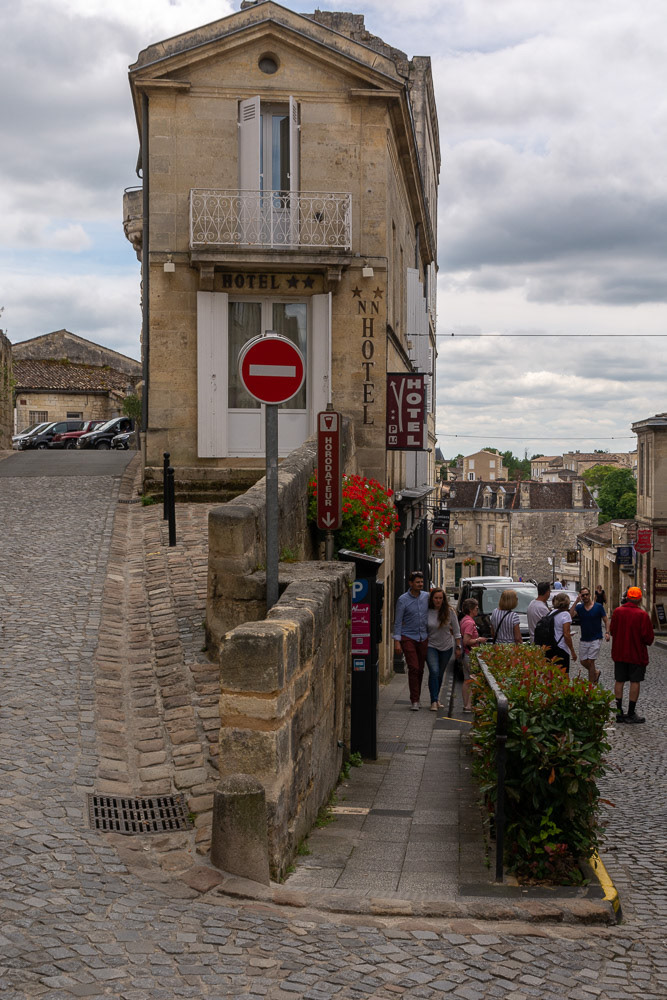
Two stars - gets you a one room width.
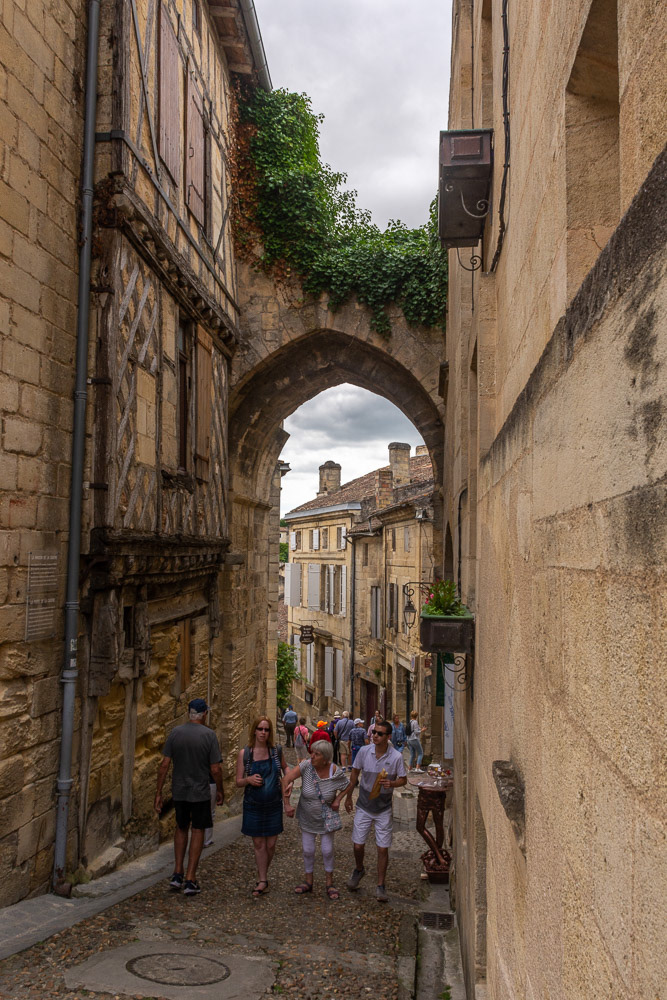
A wood-panelled house from the 16th century, the only remnant of medeival habitat in the city. The arched gate at the house of the cadene is the only internal gate of the city.
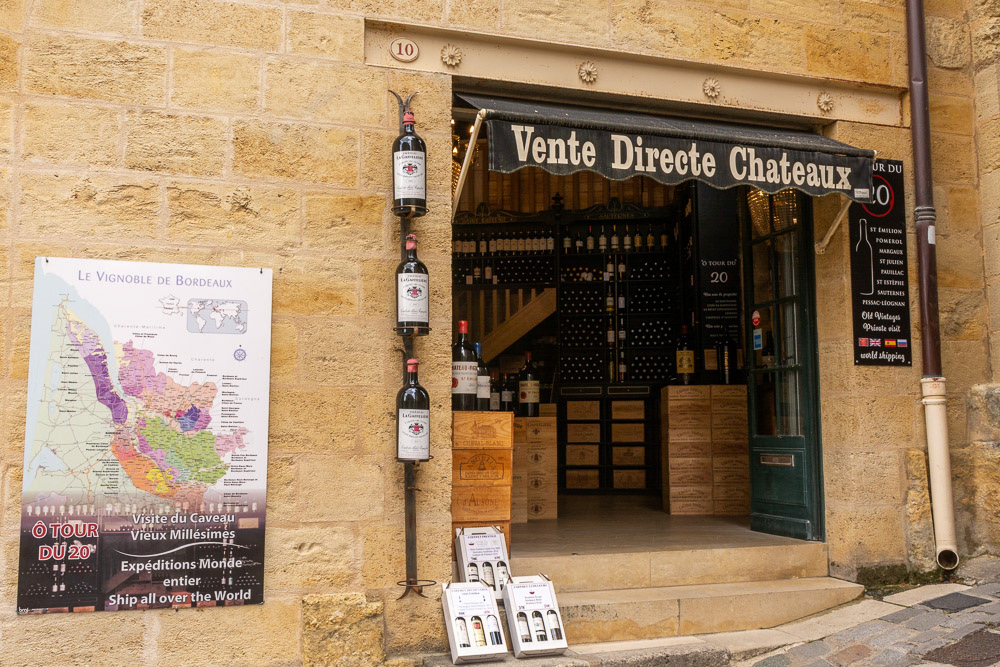
Saint-Émilion is one of the principal red wine areas of Bordeaux.... we pass a few wine cellars en-route to the town square.

Ancient timbers frame the roof of this buiding.....Les Halles du March.
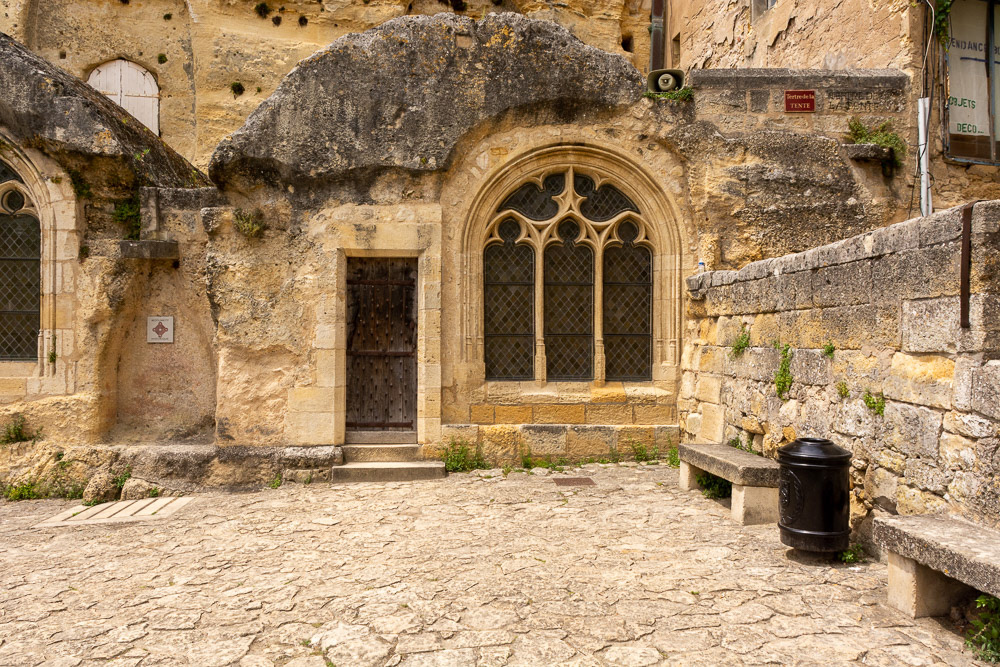
Monolithic church of Saint-Émilion hewn into the rock dates back to the 9th century.

A combination of rough hewn stone and fine masonry adorn the facade.
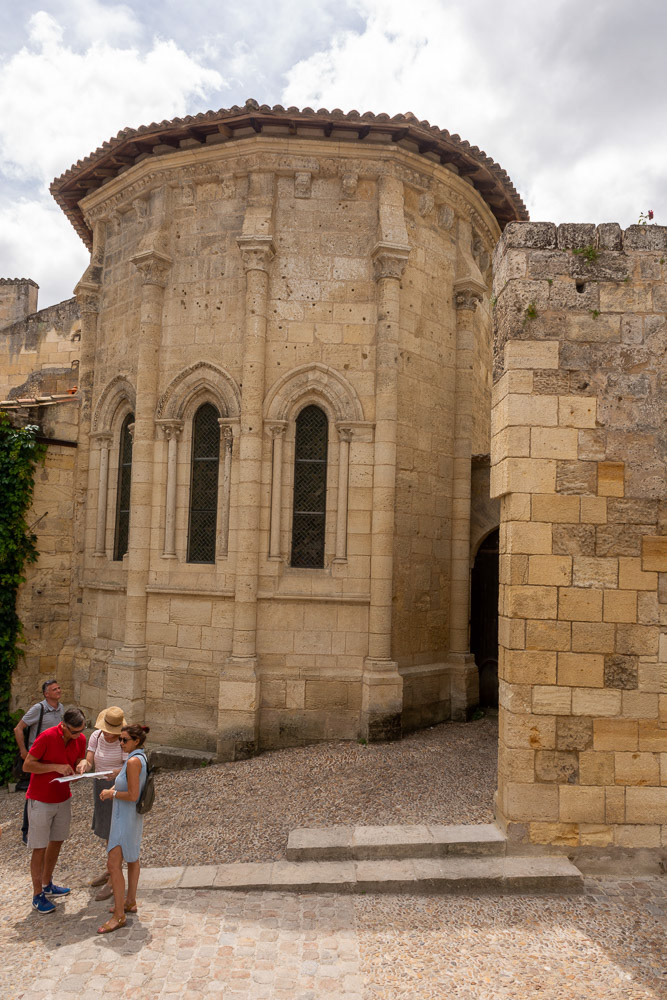
Trinity chapel, built in the 13th century and dedicated to Saint-Emilion.
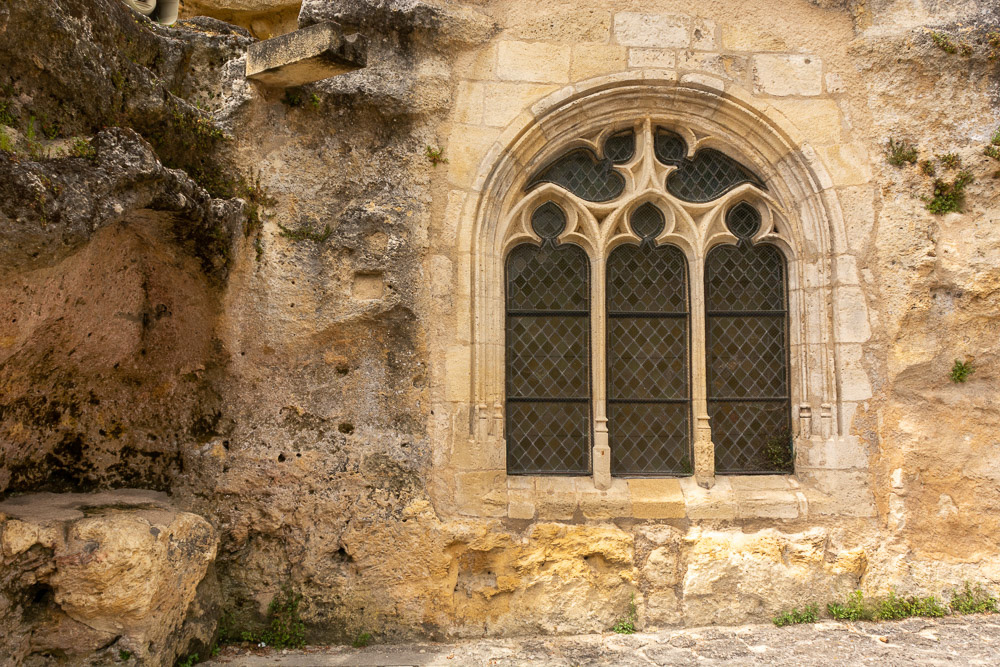
Exquisite masonry with leadlite windows seal natural openings and light the interior.
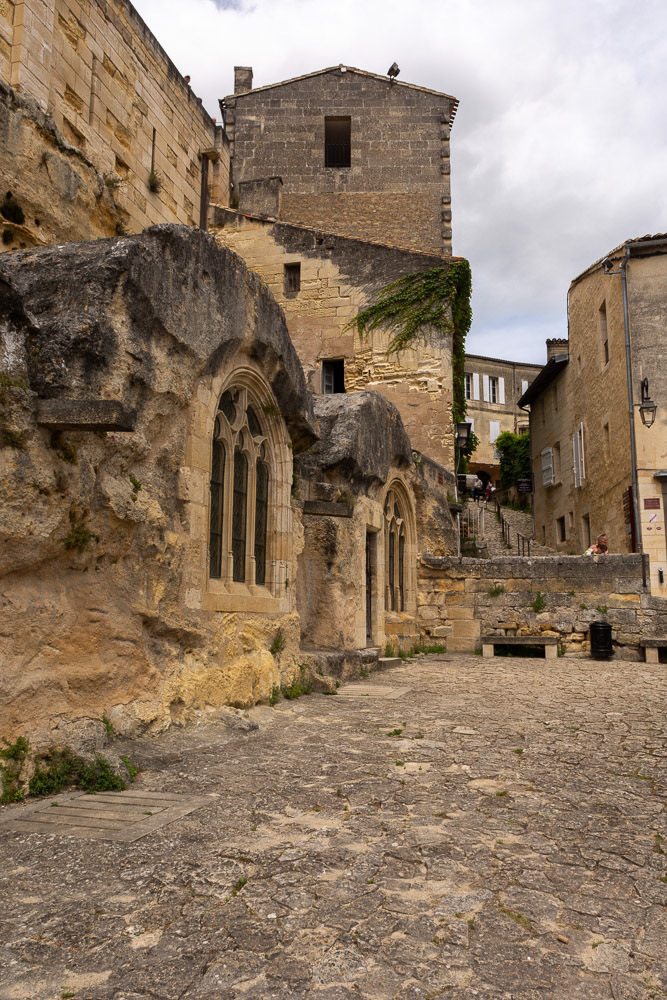
The monolithic church is carved into the hillside, above there is another level of streets and squares.
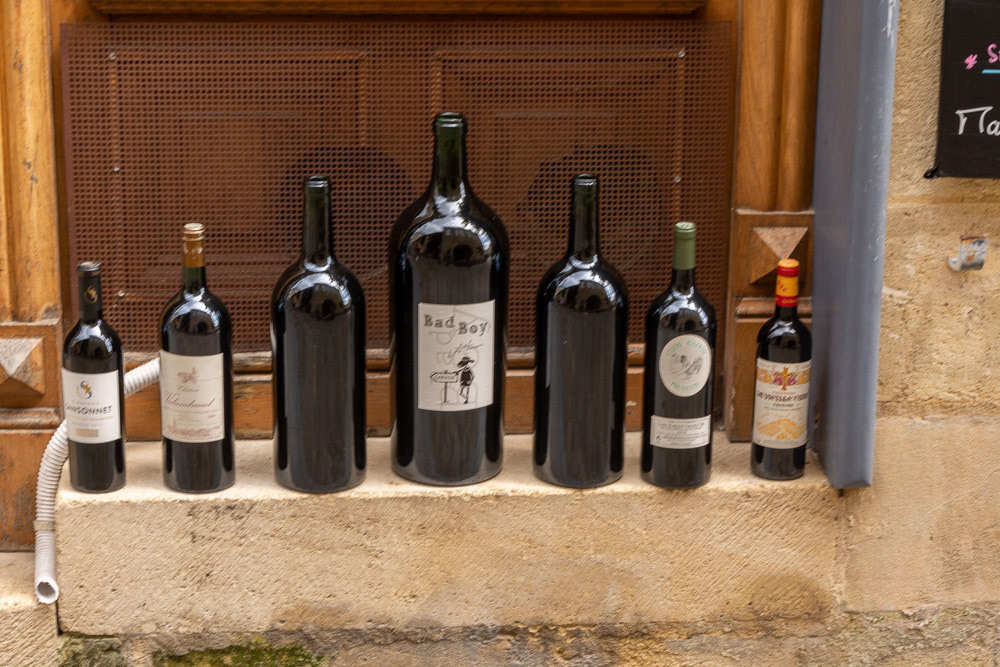
Saint Emilion is one of the four Bordeaux wine regions, and produces some of the very finest wine in the world. It is also has the world's number 1 vineyard dating back to Roman times.
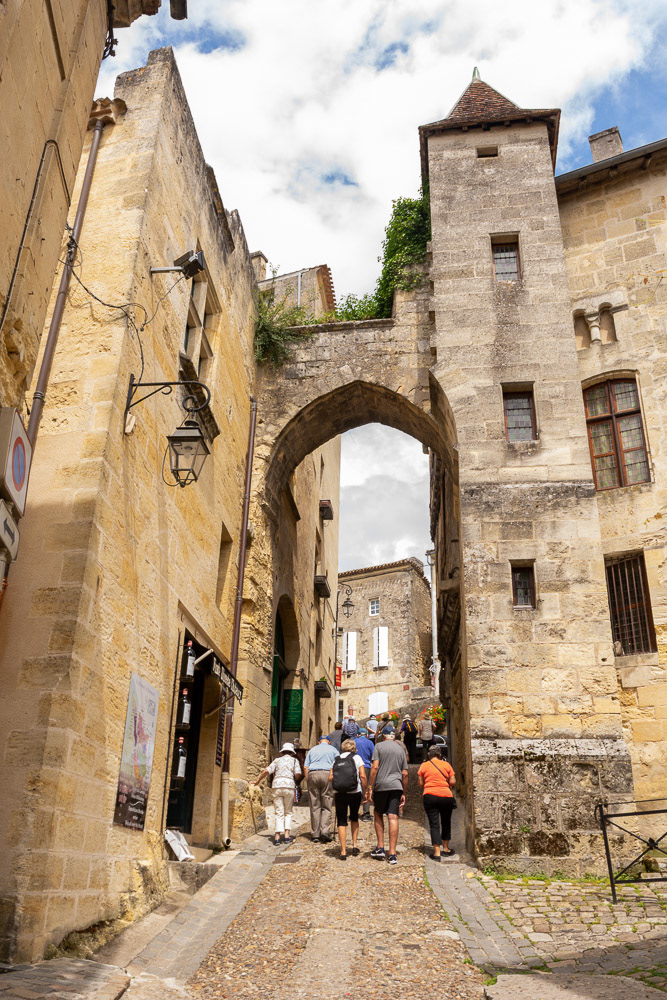
Our group passing through La Porte de la Cadene on the way to the square at the top of the Monolithic Church.
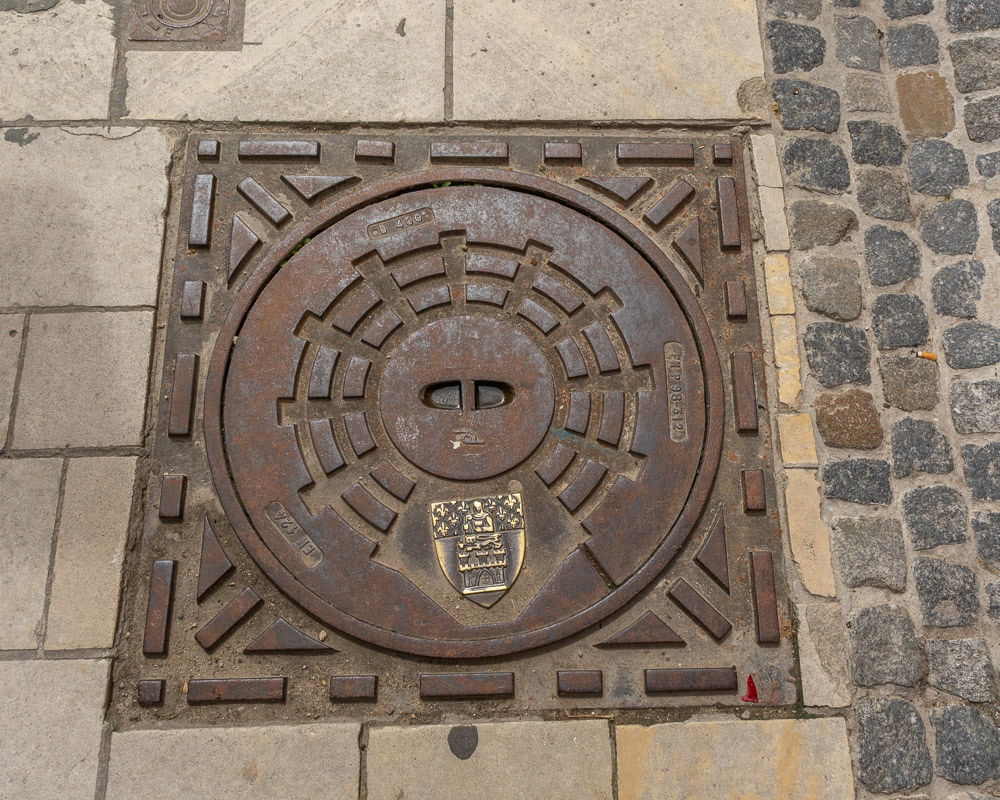
Manhole covers enbazoned with the City's Coat of Arms.
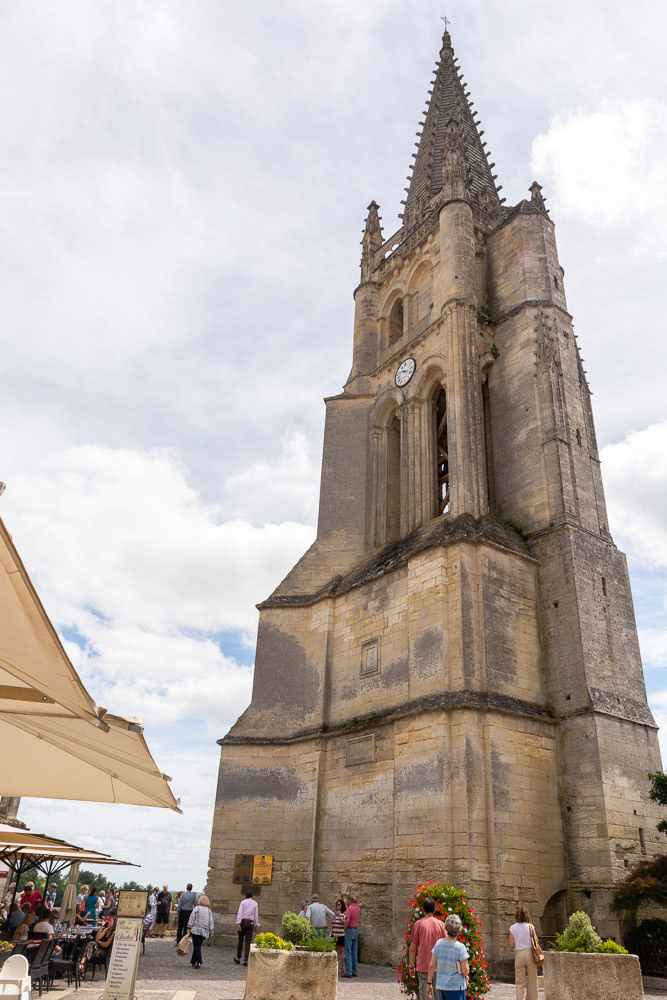
Place du Clocher - St Emilion Bell Tower Square.
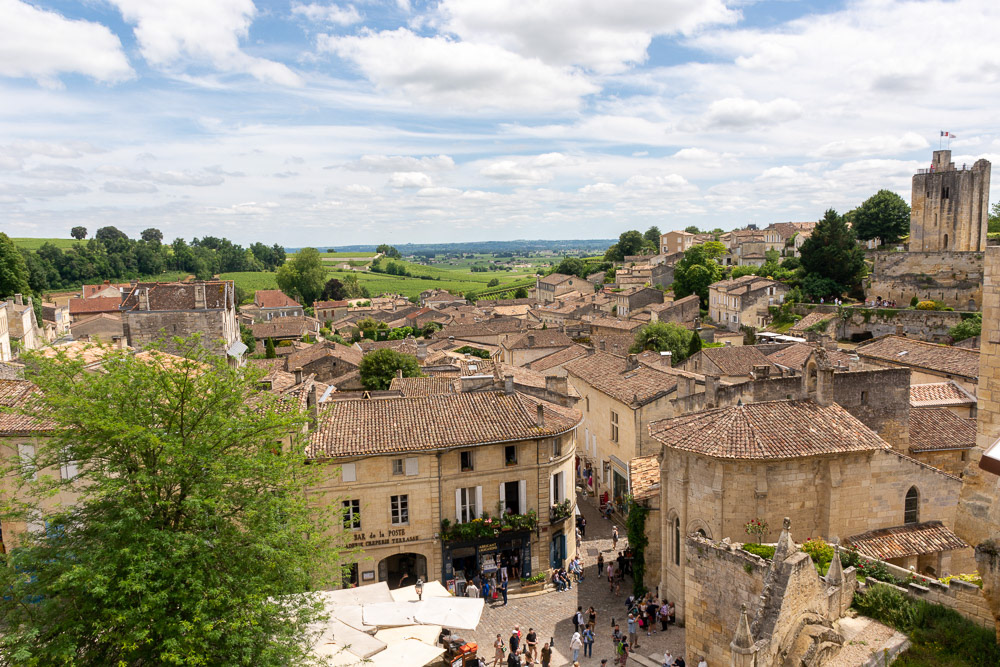
A spectacular view over Place de l'Eglise Monolithe and the countryside beyond Saint Emilion.
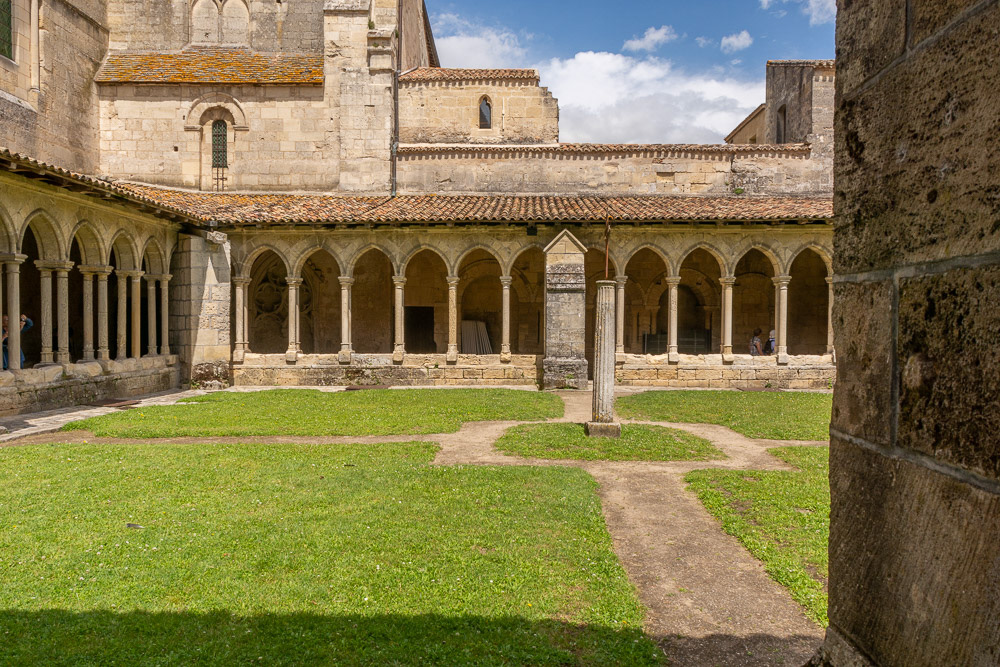
Eglise collegiale, a Romanesque church with a beautiful 14th century cloister.

Inside the cloister of Eglise collegiale.
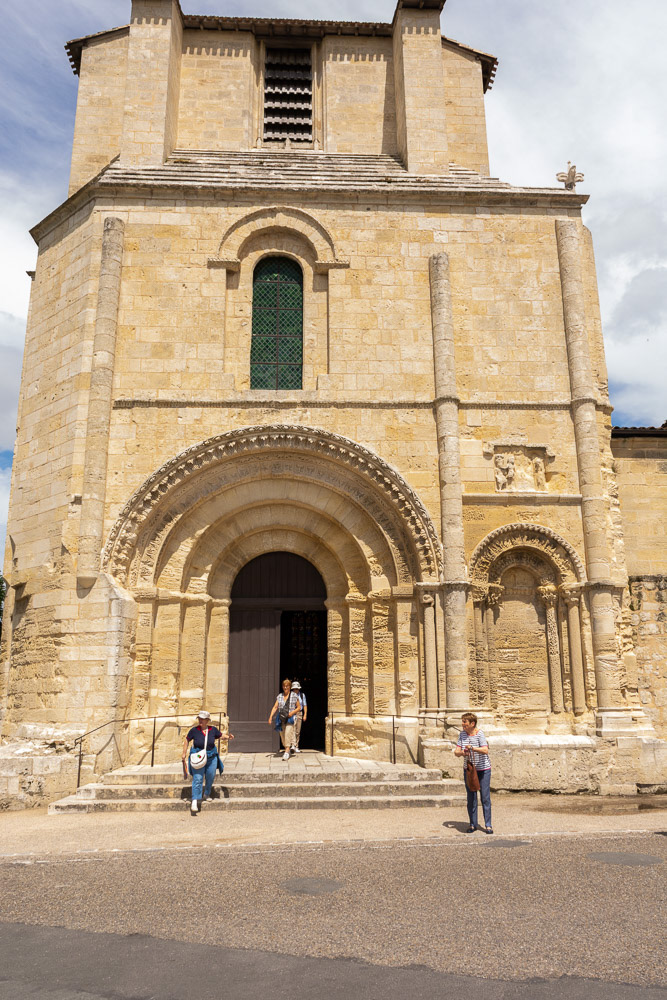
The main entrance to Eglise collegiale, 14th century Romanesque church.
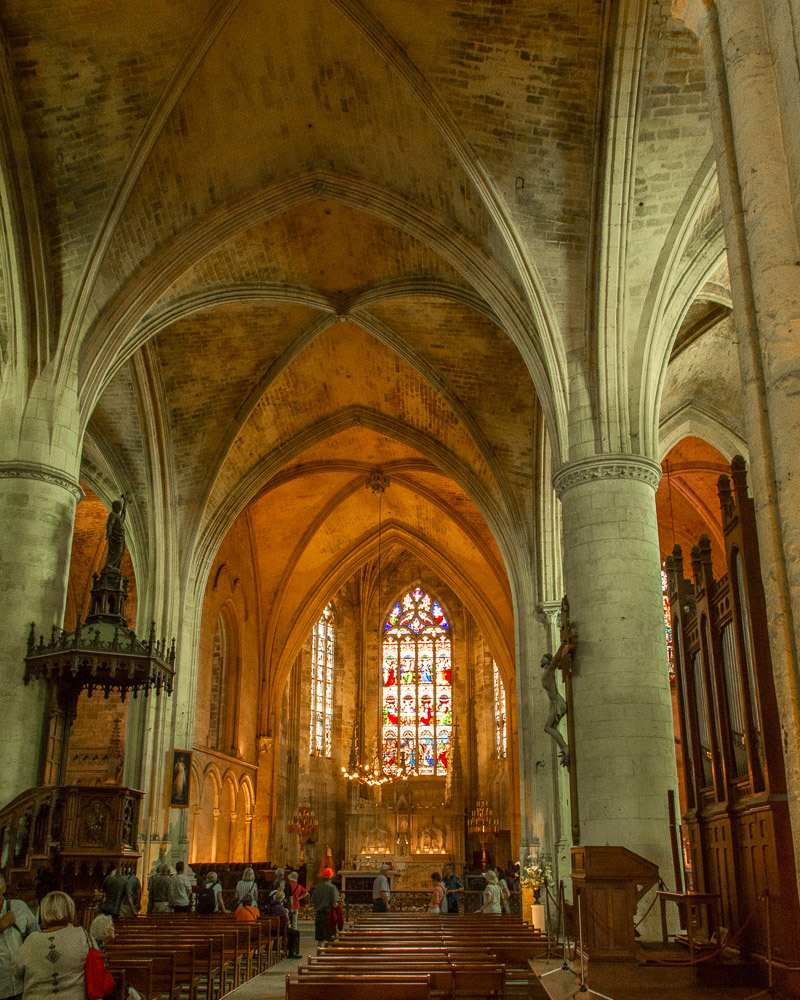
Inside Eglise collegiale.
Day 2 - Bergerac is a commune and a sub-prefecture of the Dordogne department in southwestern France. Bergerac is designated as a 'City of Art and History'

Eglise Notre-Dame in Ville de Bergerac.
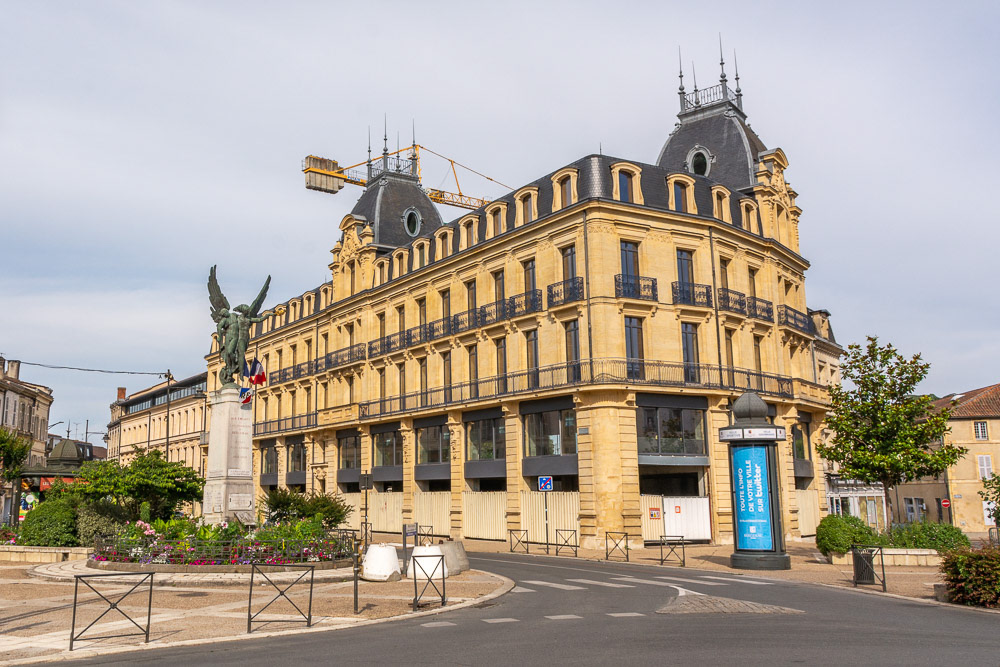
Bergerac has some interesting buildings in the French Provincial Architectural style.

Lovely medieval streets including Rue St Clar and Rue St James have half-timbered houses.

St James church with its unusual bell tower.
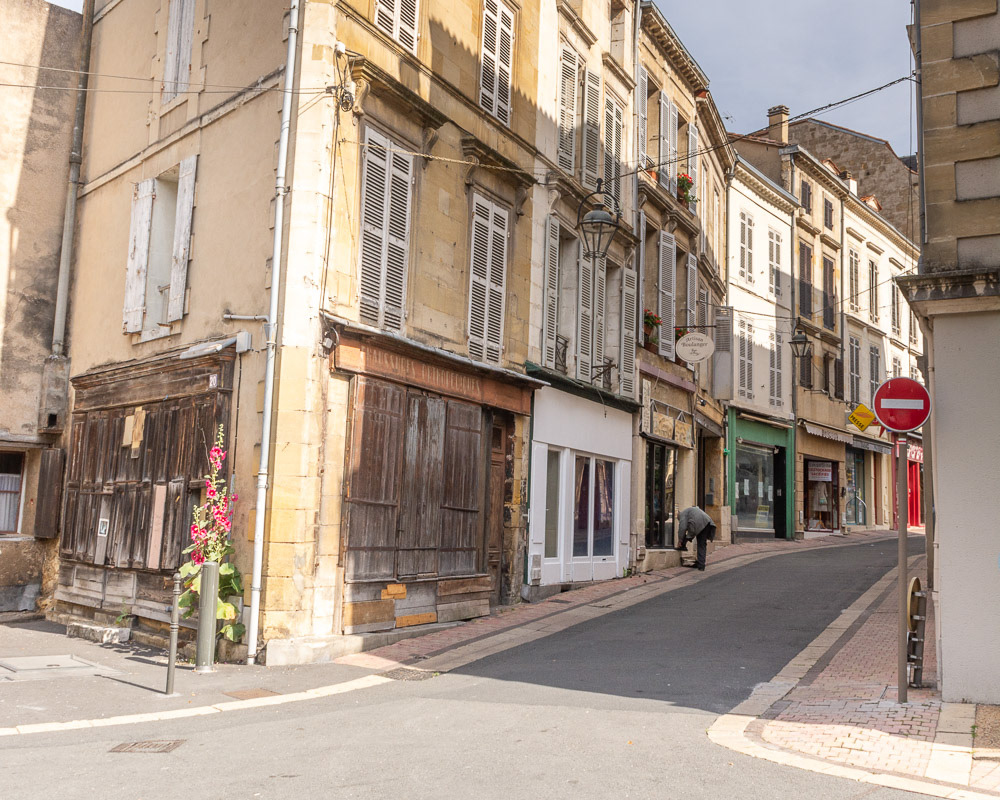
Around Place Pelissiere are a number of lovely medieval streets.
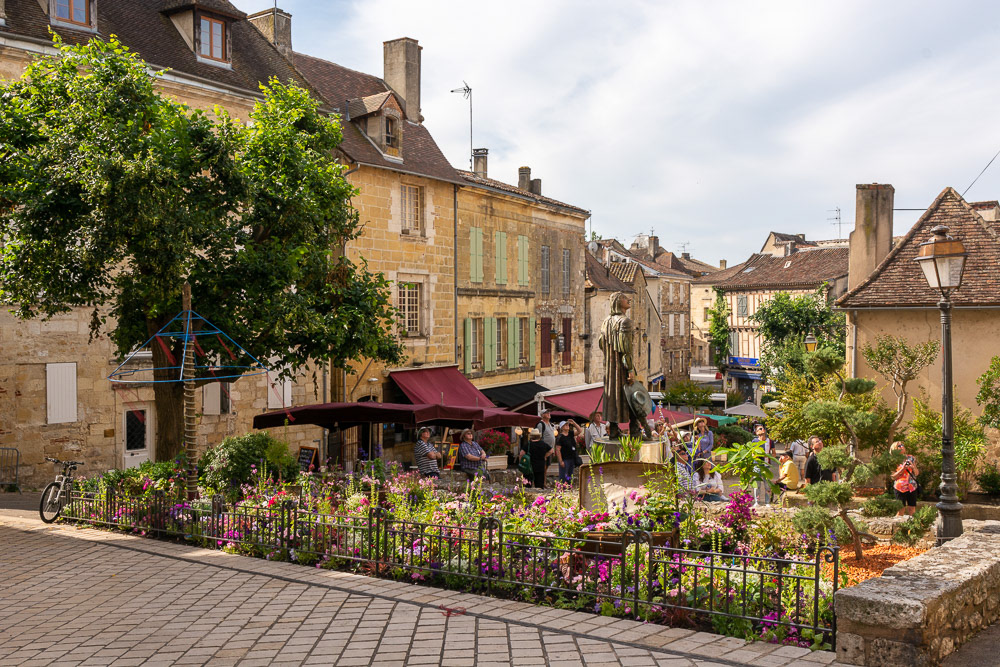
Place Pelissiere with the "new" statue of Cyrano de Bergerac at its centre. Interestingly it is alleged he never even visited the region.

A man's best friend pauses for a drink at the fountain in Place Pelissiere.
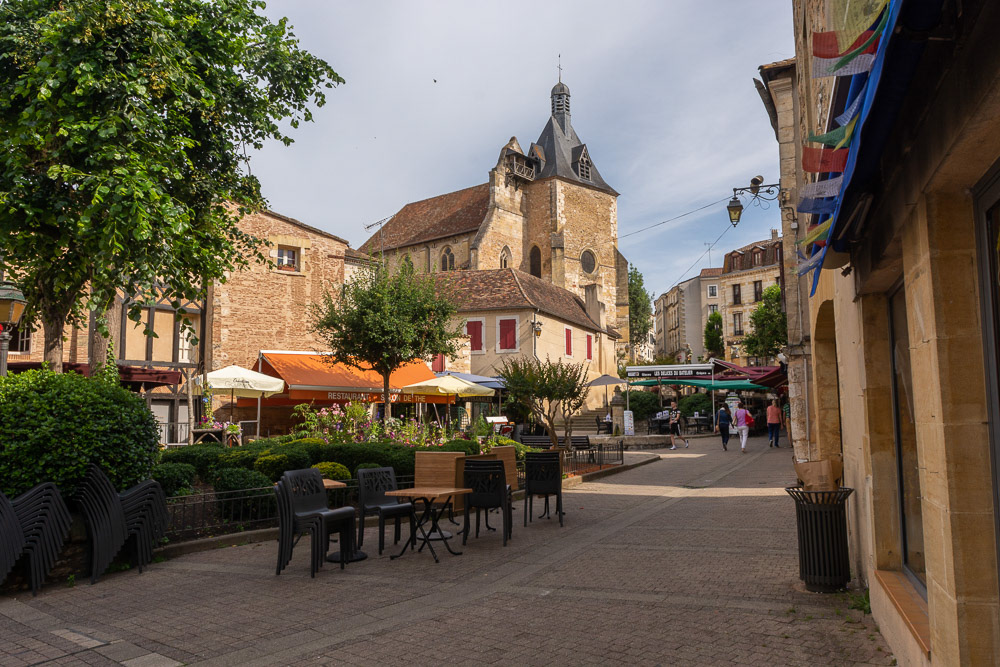
Place Pelissiere with St James church overlooking the square.
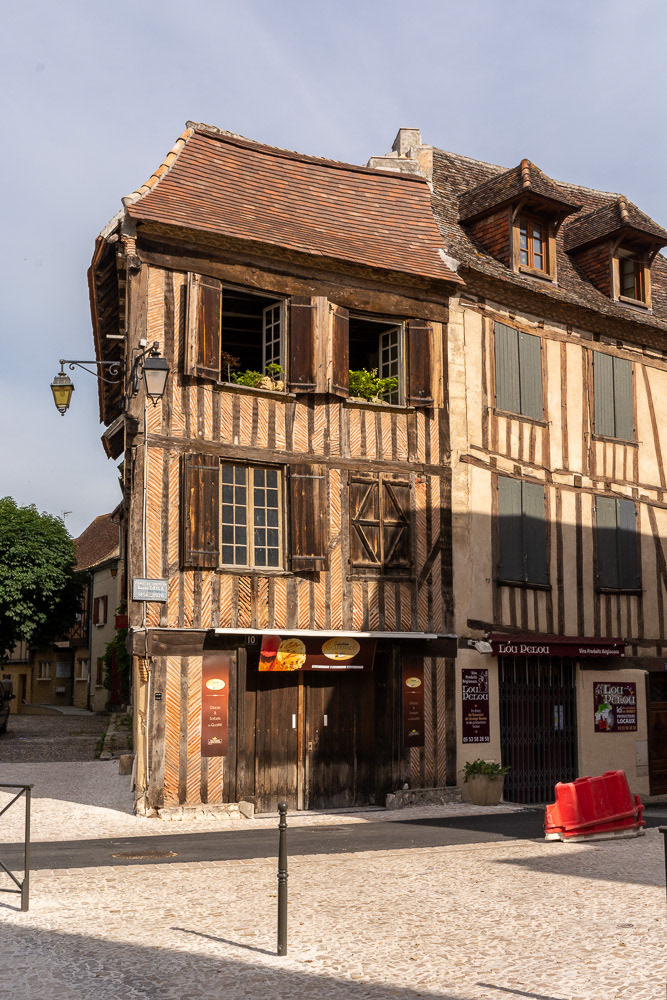
Another fine example of half-timber houses as we explore the Old Town.

Another statue paying homage to Cyrano De Bergerac.
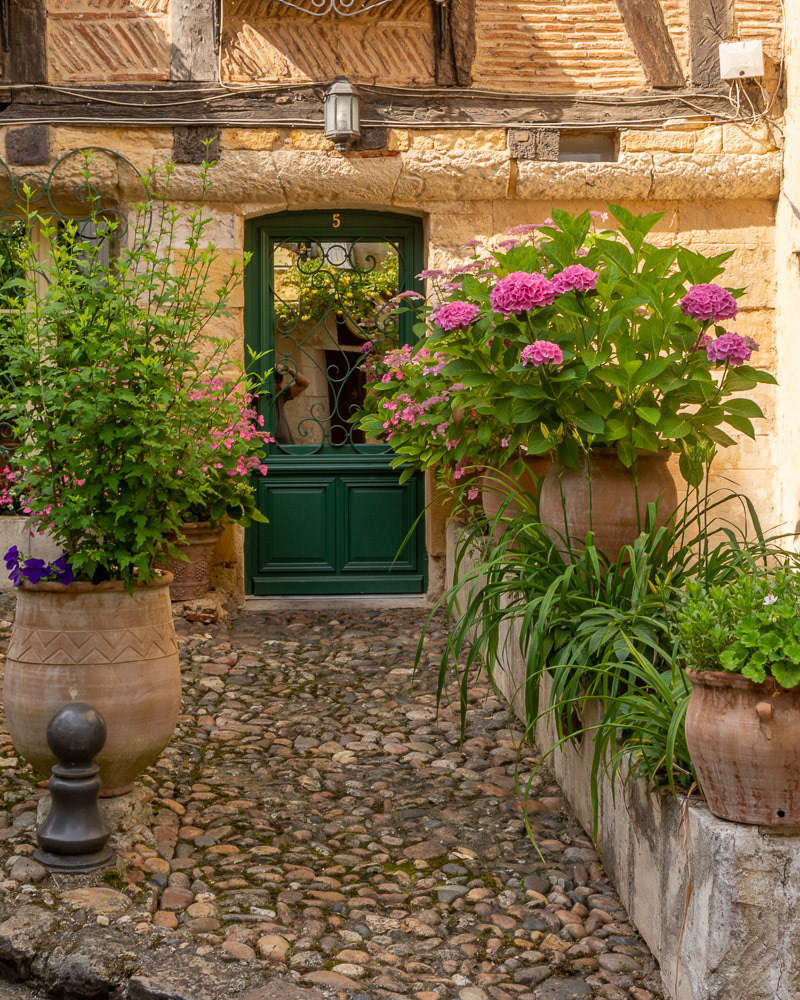
An elegant pebble entrance to one of the half-timber howuses of the old town.
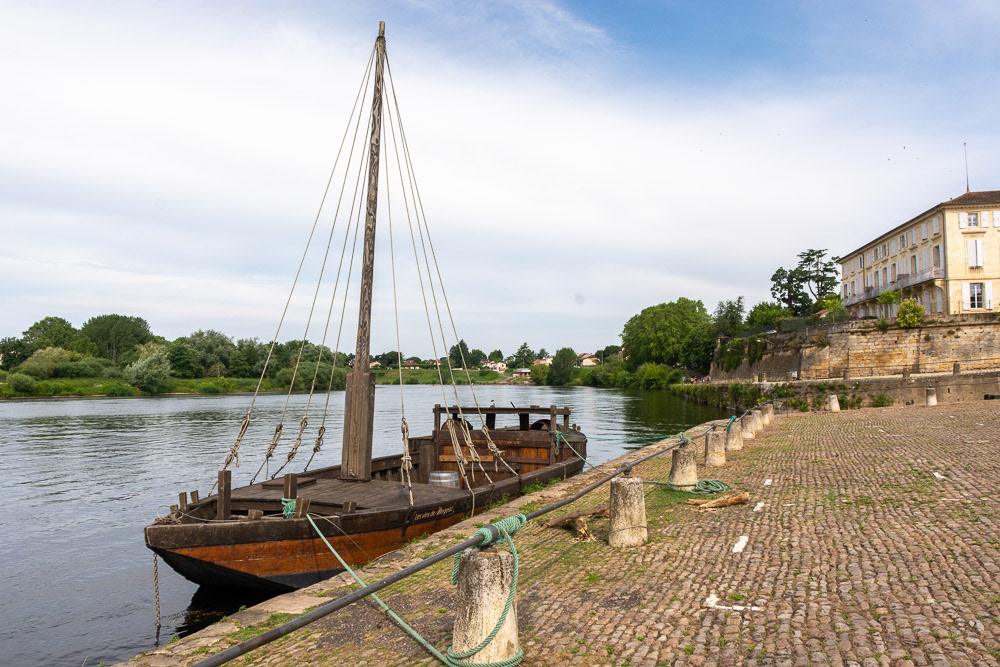
A traditional wooden barge used to transport wine of the Dordogne region.
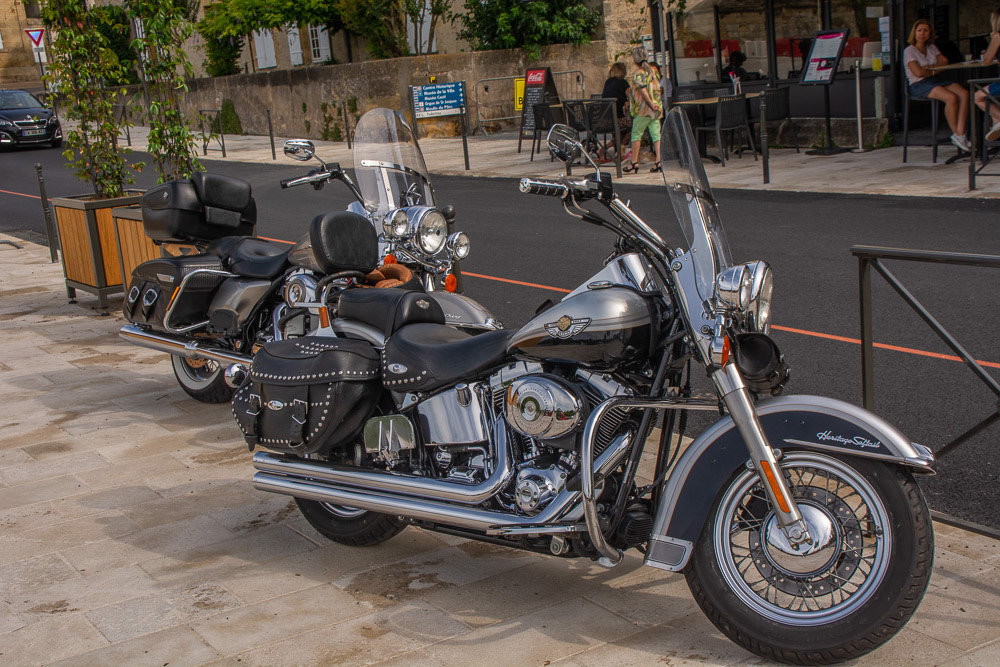
A modern ride in a medieval village.....
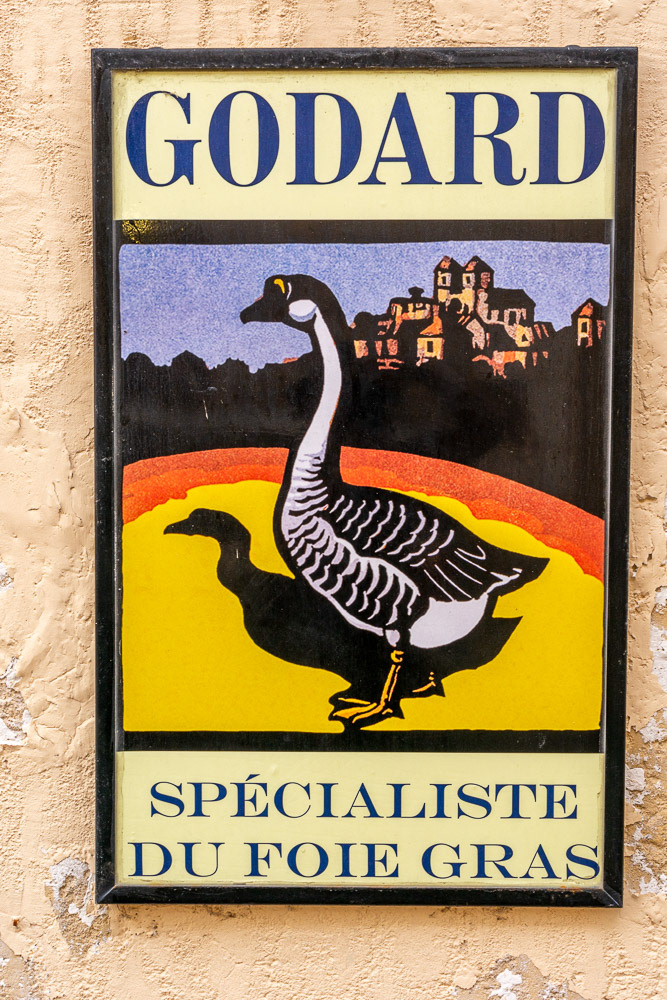
The specialty of the commune...
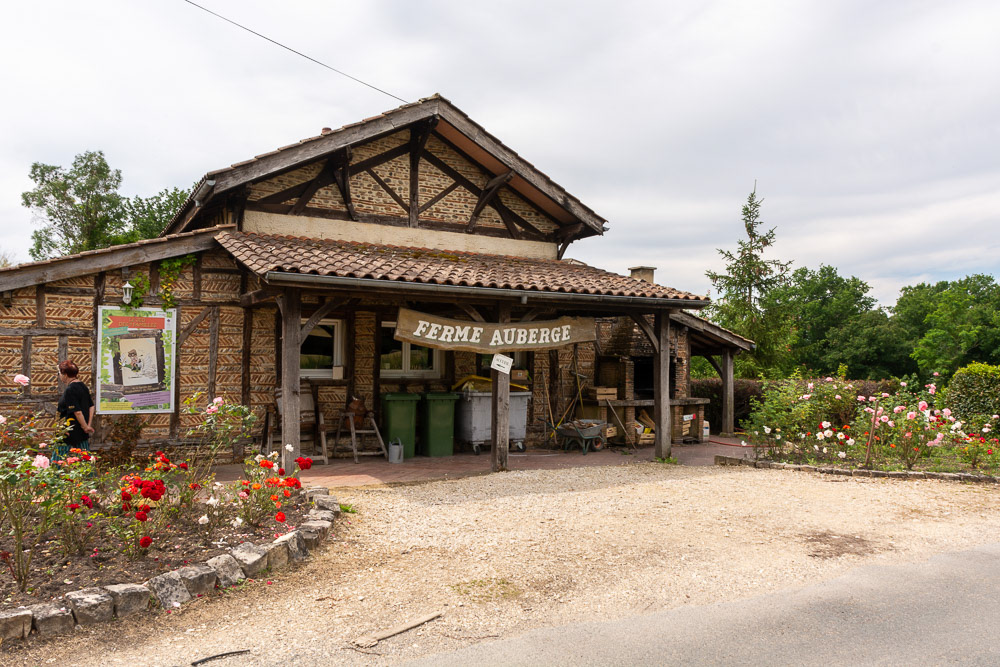
Auberge Farm - here we discover the ins and outs of a goose's (er ...... duck) bridle as we learn all about "du Foie Gras".
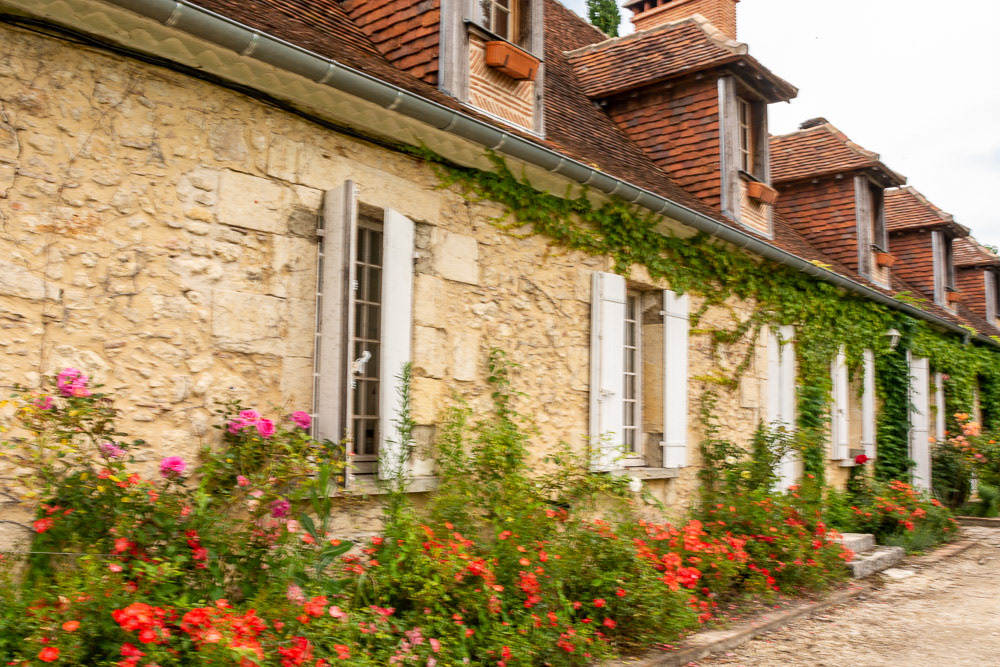
"Farmhouse accommodation de Auberge.
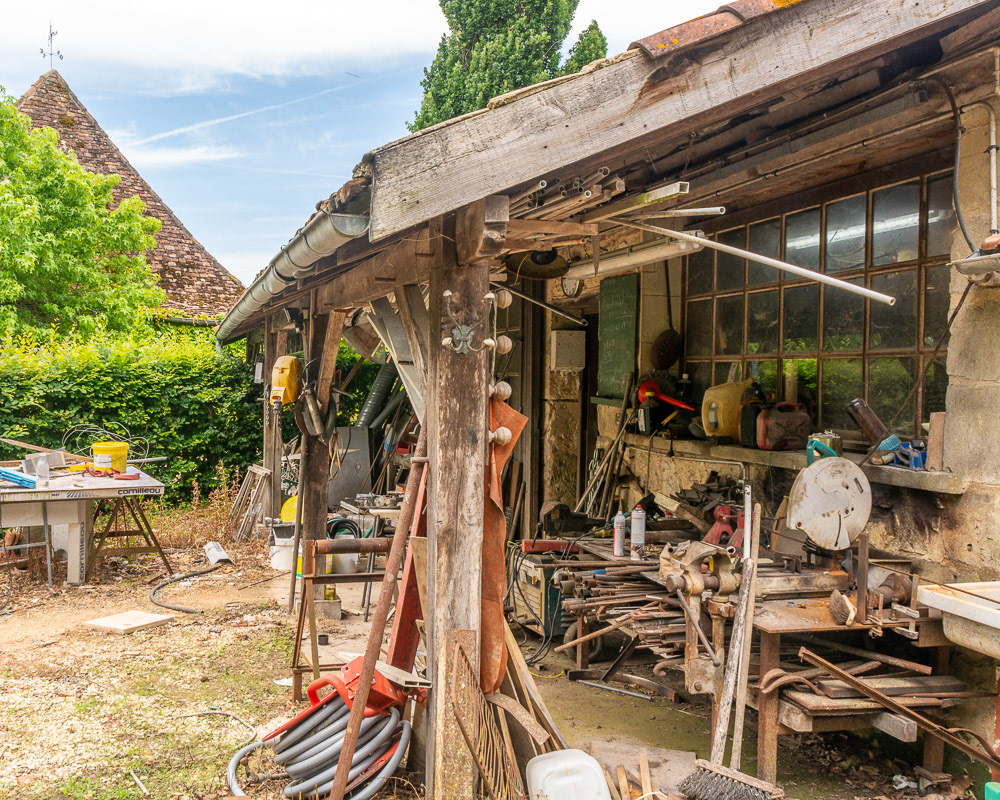
Farm workshop chaos..... it mabe of use one day.
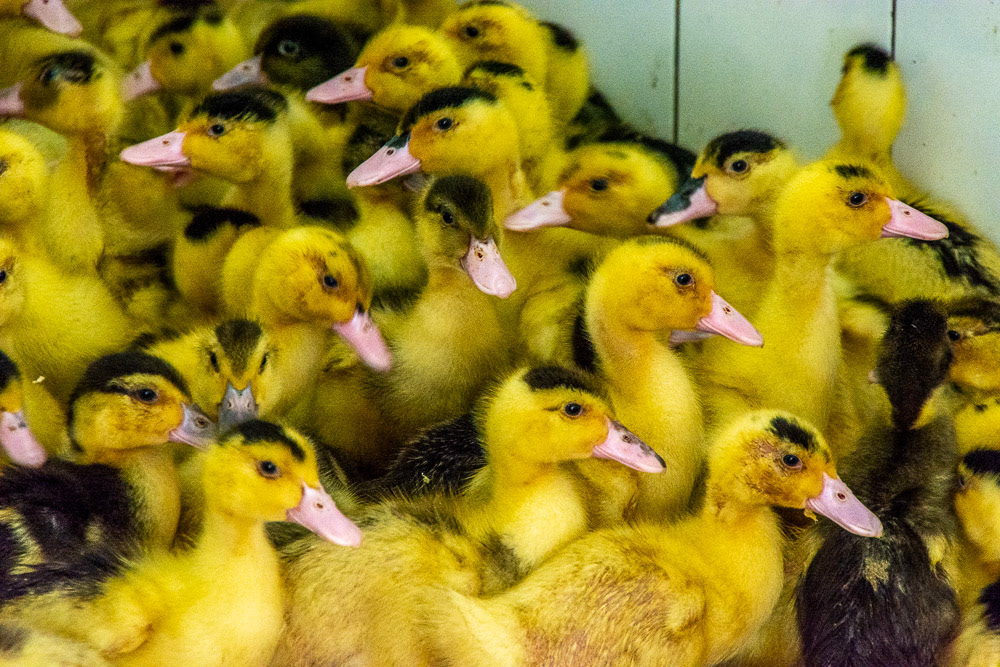
A new batch of Auberge ducklings.

Auberge teenage ducks with their guard geese and the farm's owner.
Day 3 - We tour the Medoc wine region and visit Le Chateau Gaurud-Larose and sample some wine.
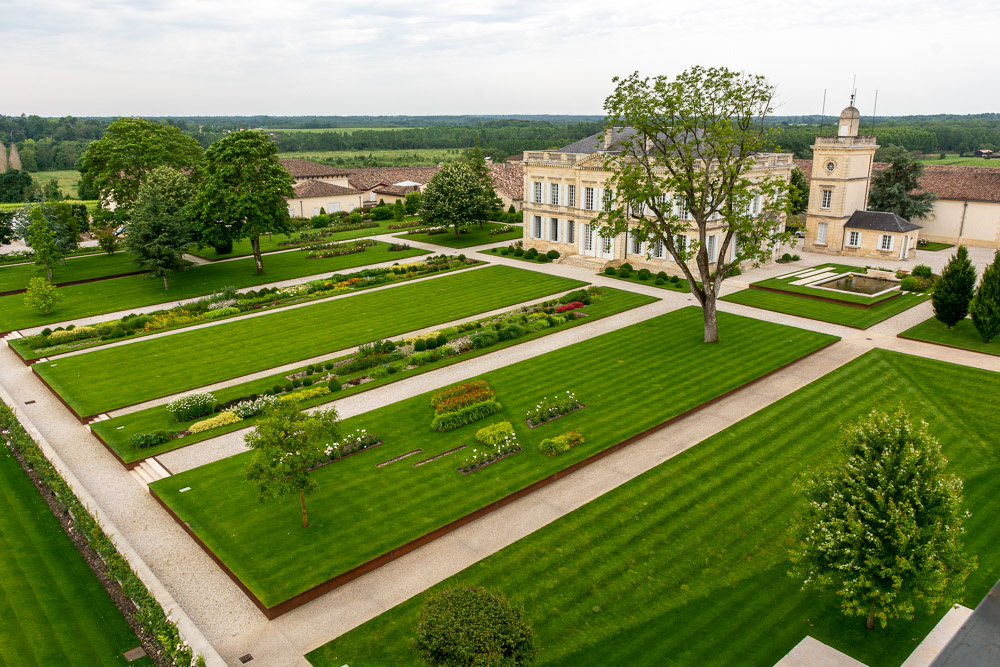
Le Chateau Gaurud-Larose mansion and manicured grounds from their observation tower.
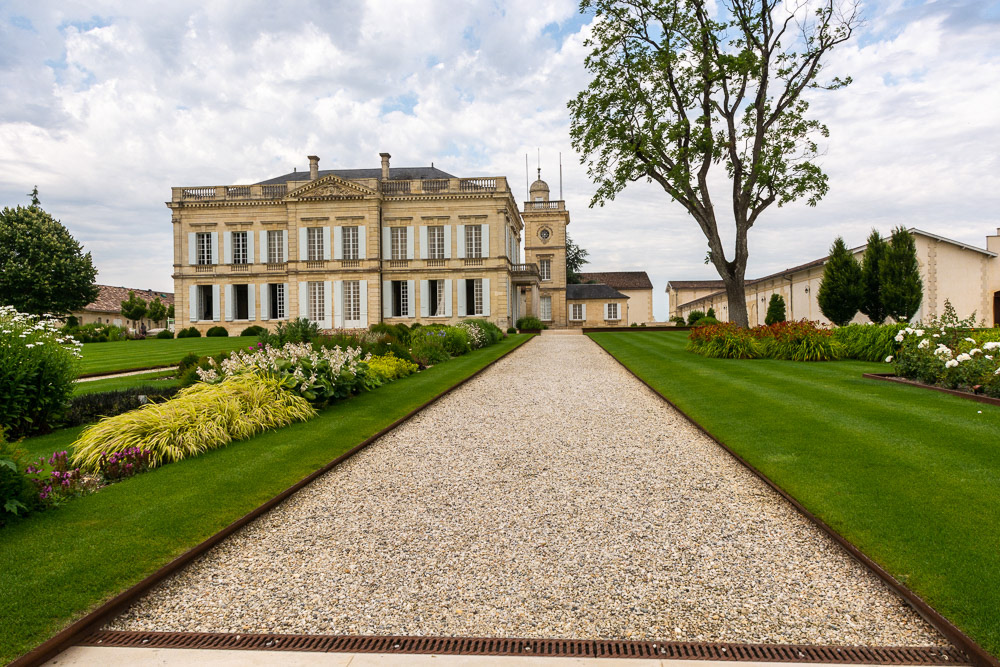
Le Chateau Gaurud-Larose - a grand entrance statement.
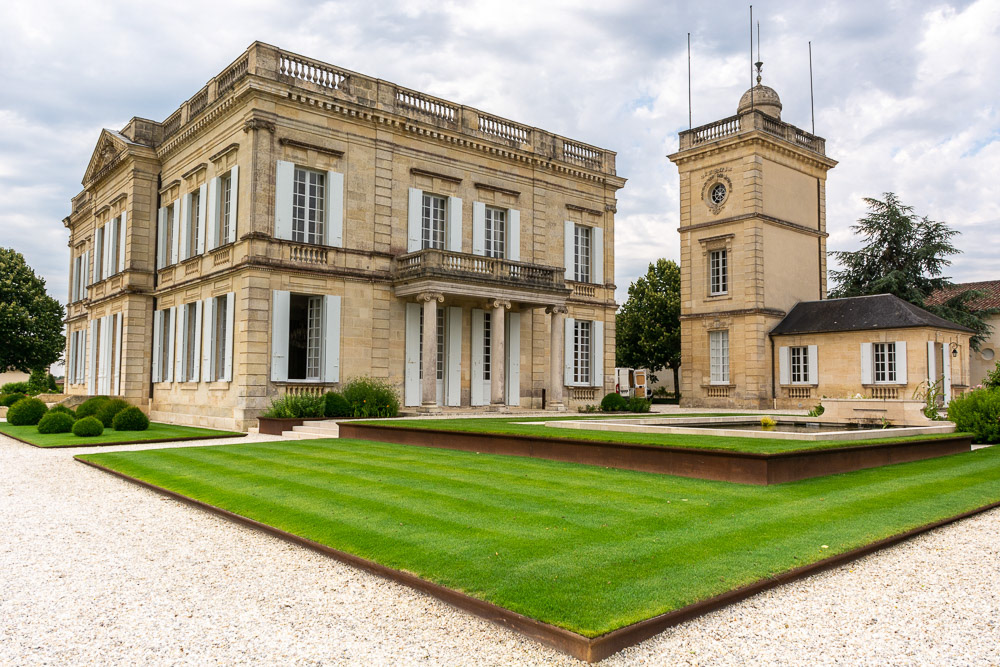
Le Chateau Gaurud-Larose mansion.
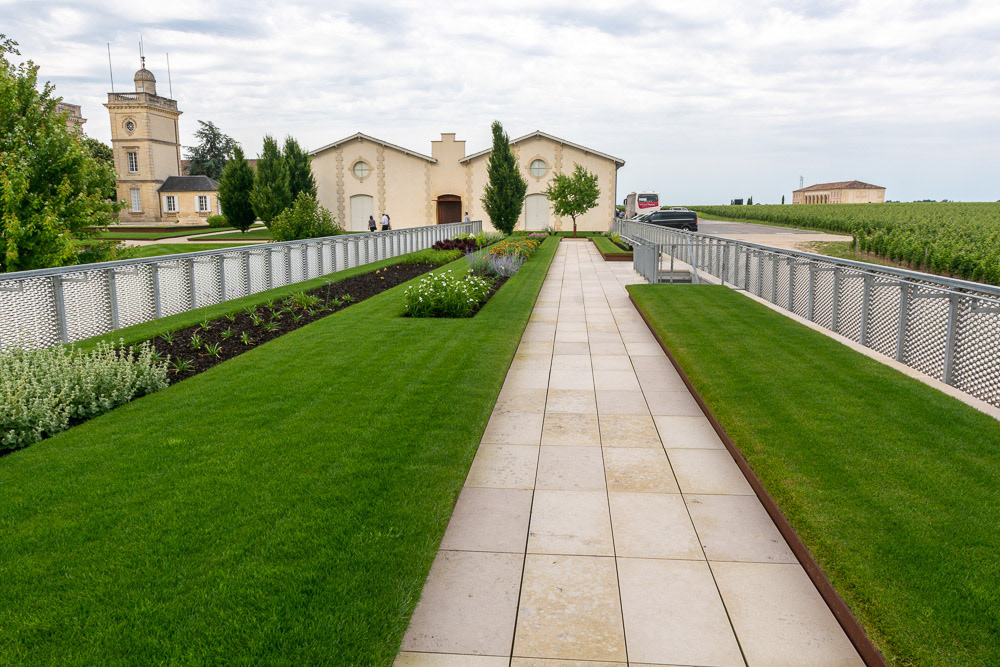
Le Chateau Gaurud-Larose cellars looking from their visitor centre.
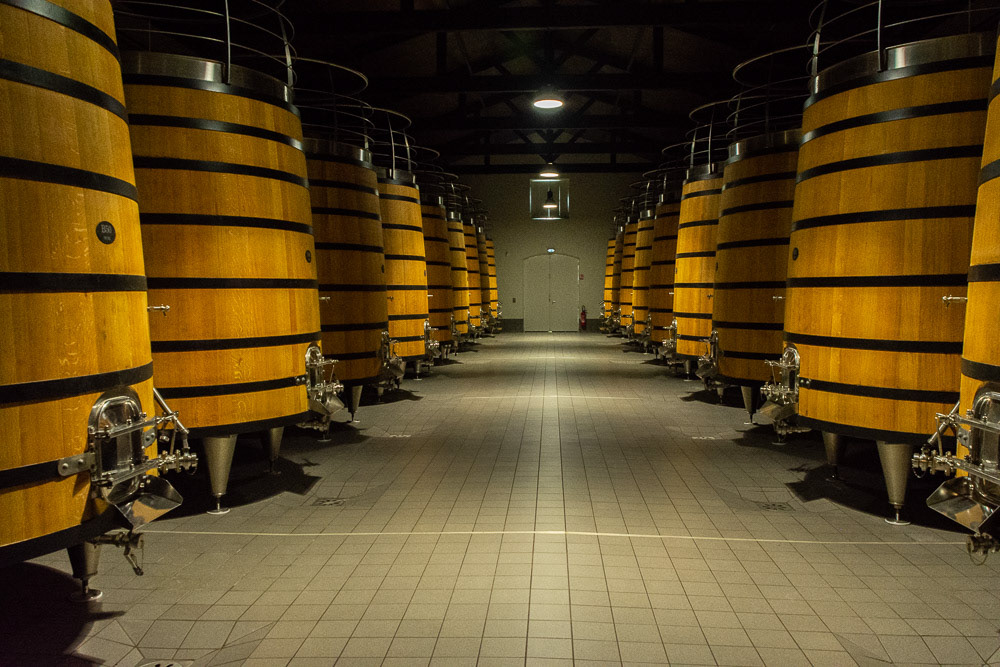
Gigantic oak barrels inside Le Chateau Gaurud-Larose wine cellars.
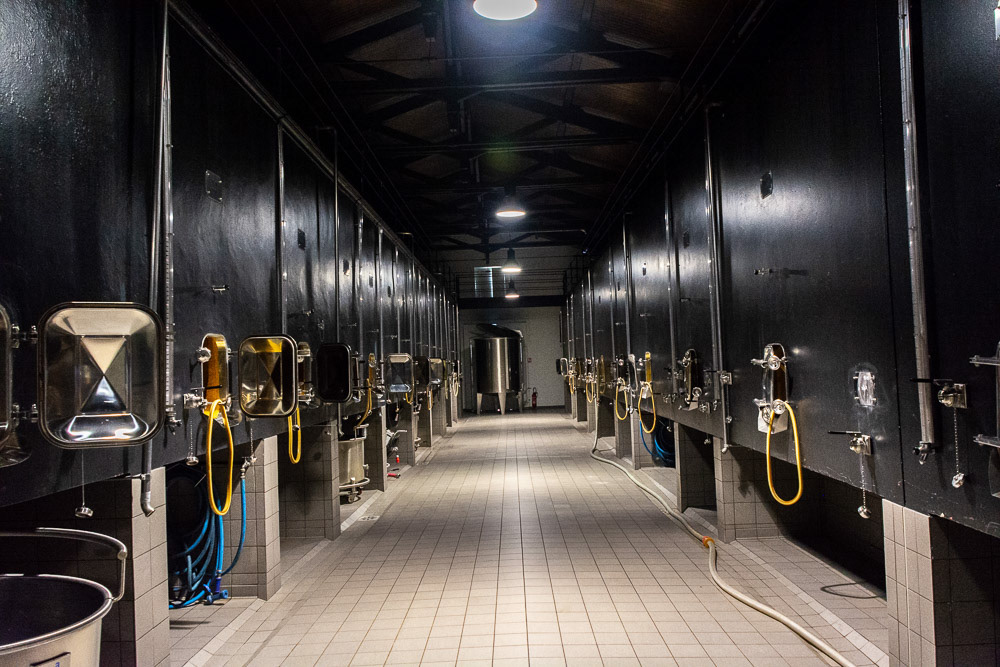
Inside Le Chateau Gaurud-Larose wine cellars.

Inside Le Chateau Gaurud-Larose wine cellars....... more wine!

Le Chateau Gaurud-Larose - colourful carp.
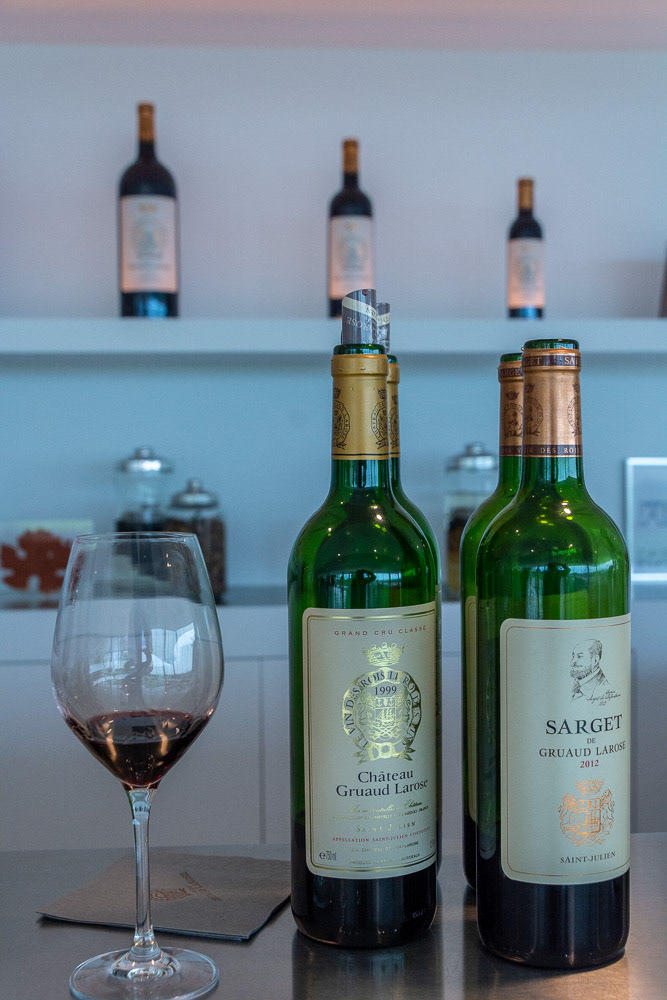
Le Chateau Gaurud-Larose cellars - a taste of the Grand Cru Classe 1999 and a Sarget 2012
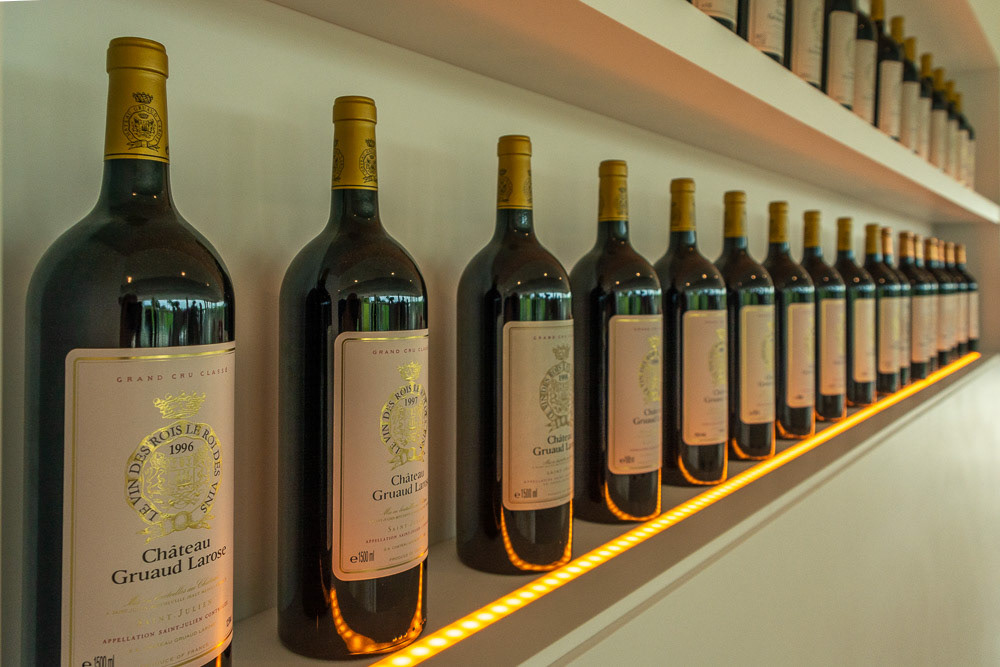
Le Chateau Gaurud-Larose - vertical vintages from 1996.
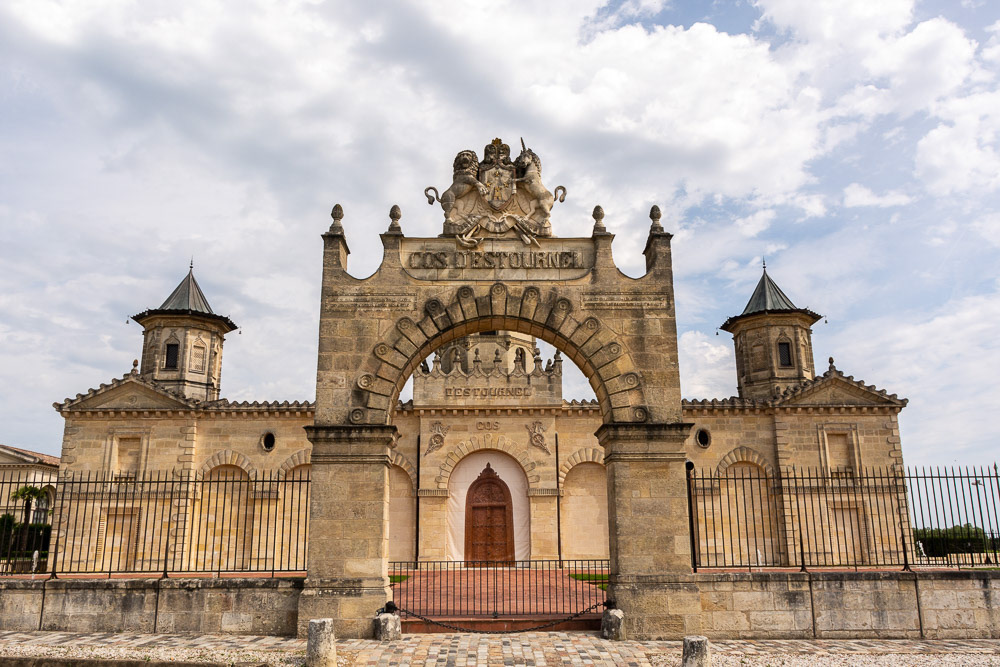
Château Cos d'Estournel - a winery in the Saint-Estèphe appellation of the Bordeaux region.

Château Cos d'Estournel vineyard - on the hill of pebbles. One of the components in the concept of terroir.

Pauillac in the Gironde department in Nouvelle-Aquitaine in southwestern France. Mid-way between Bordeaux and the Pointe de Grave, along the Gironde, the largest estuary in western Europe.
Day 4 - Cadillac and Raquetaillade Castle.

A Chateau on the banks of the Gironde as we leave Pauillac bound for Cadillac.

Secenic Diamond in port of Cadillac sur Garonne.
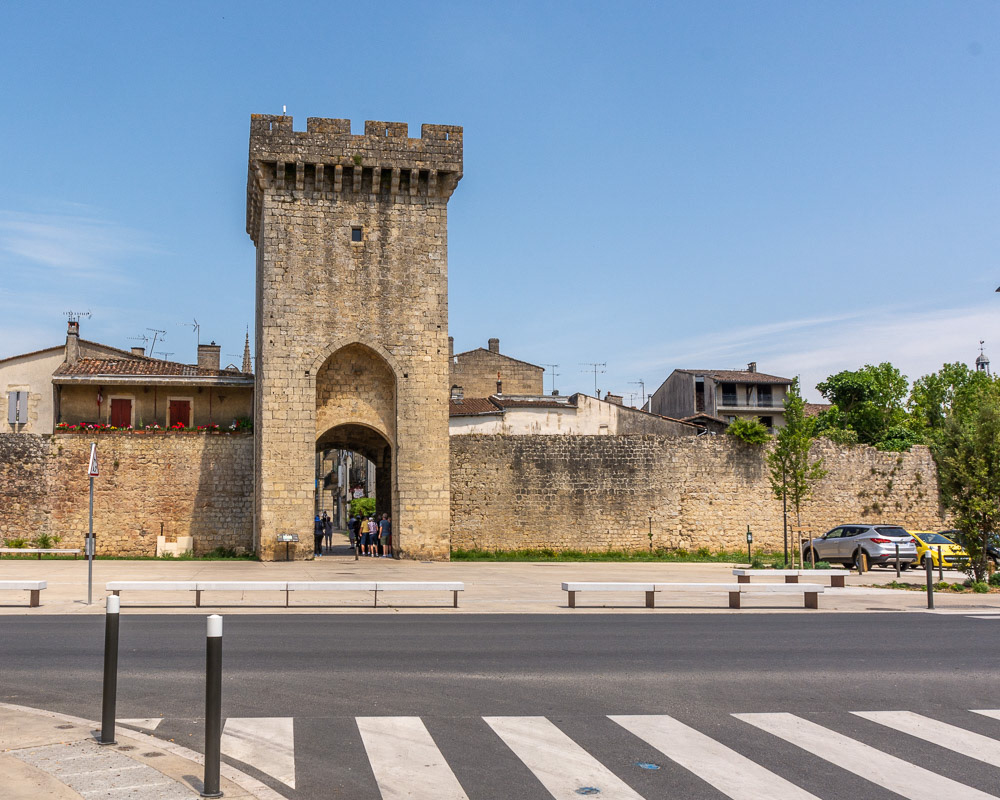
Porte de la Mer - Fortified entry to the walled town facing the Garonne.
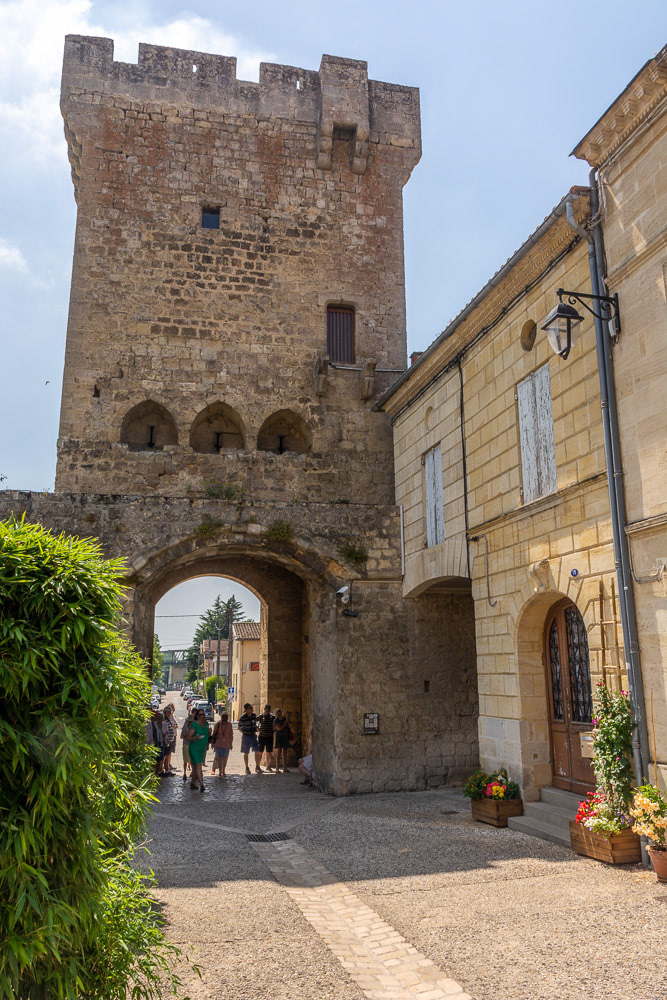
Porte de la Mer - from the inside.
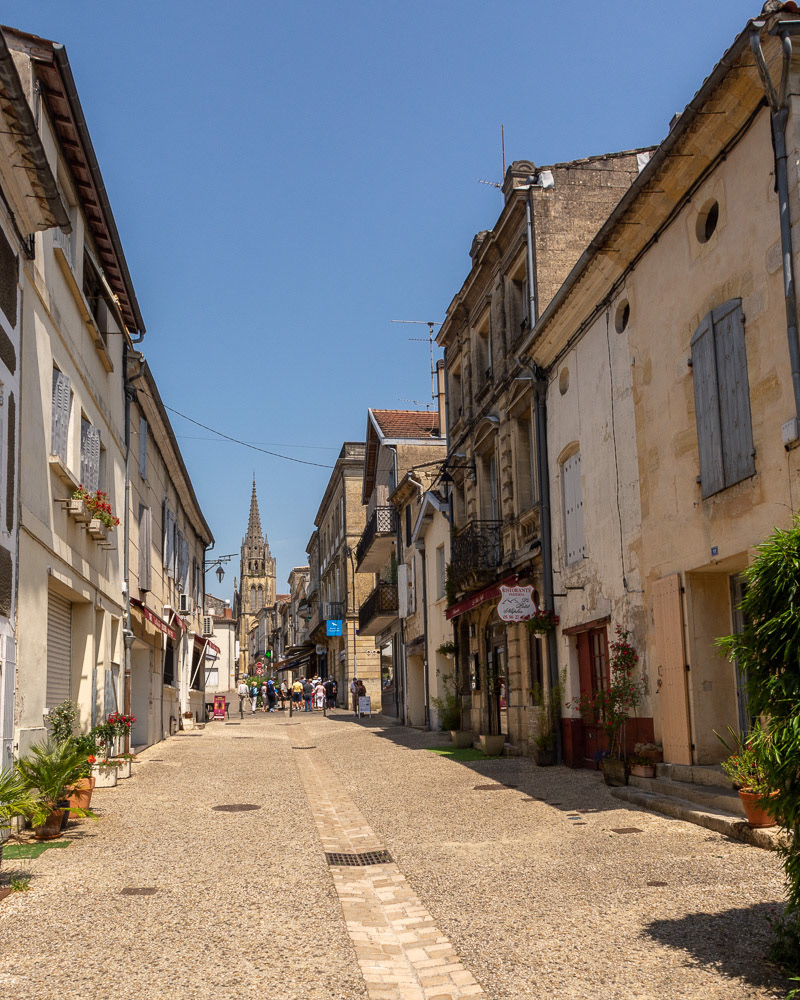
Rue du Generale De Gaulle.
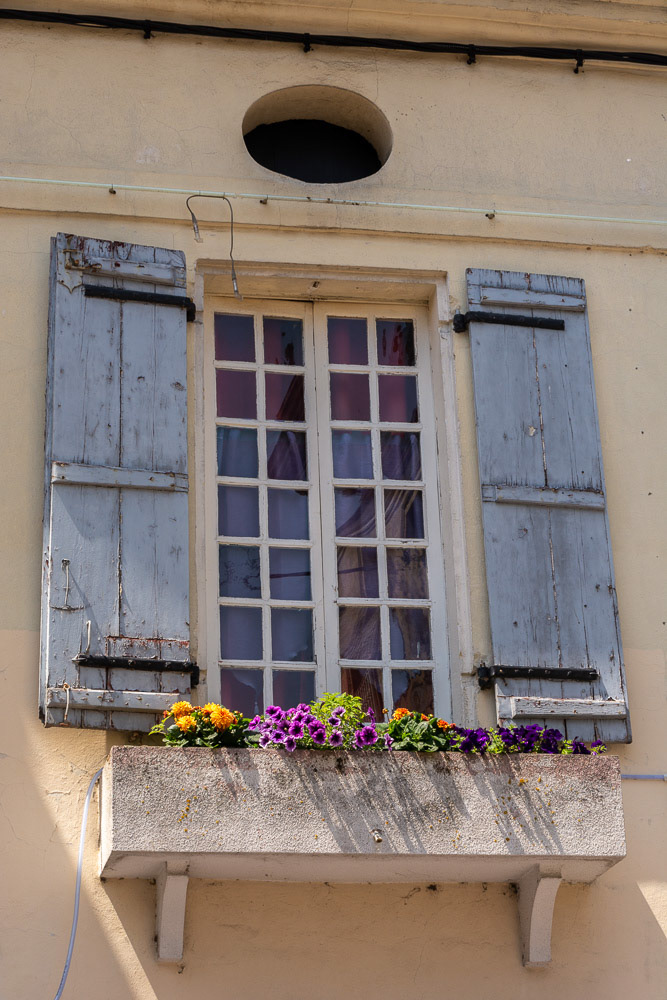
A splash of colour in the window planter.
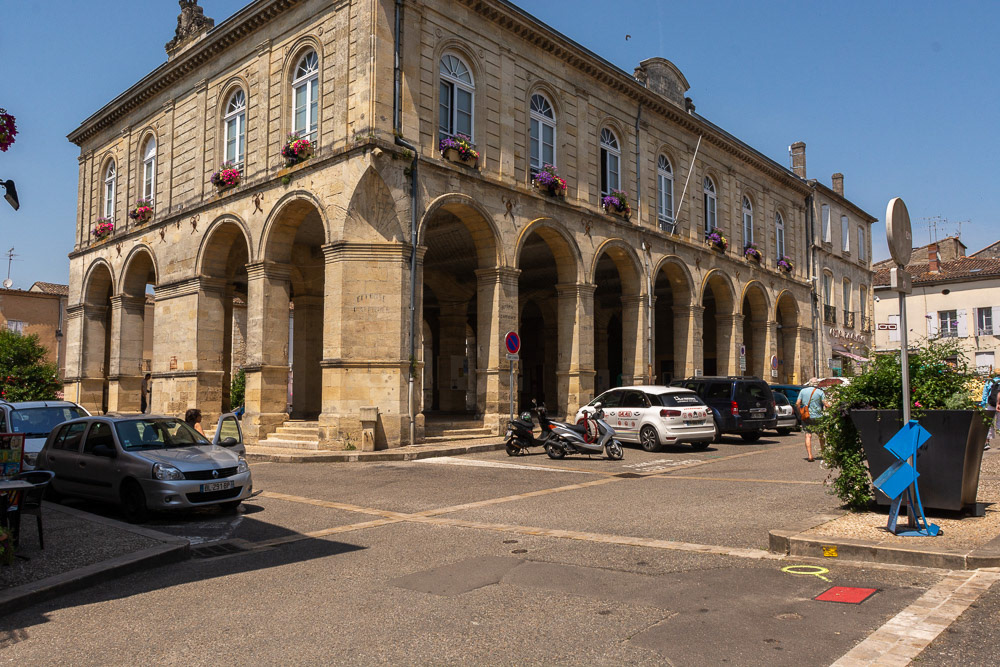
An interesting raised building - above flood waters.
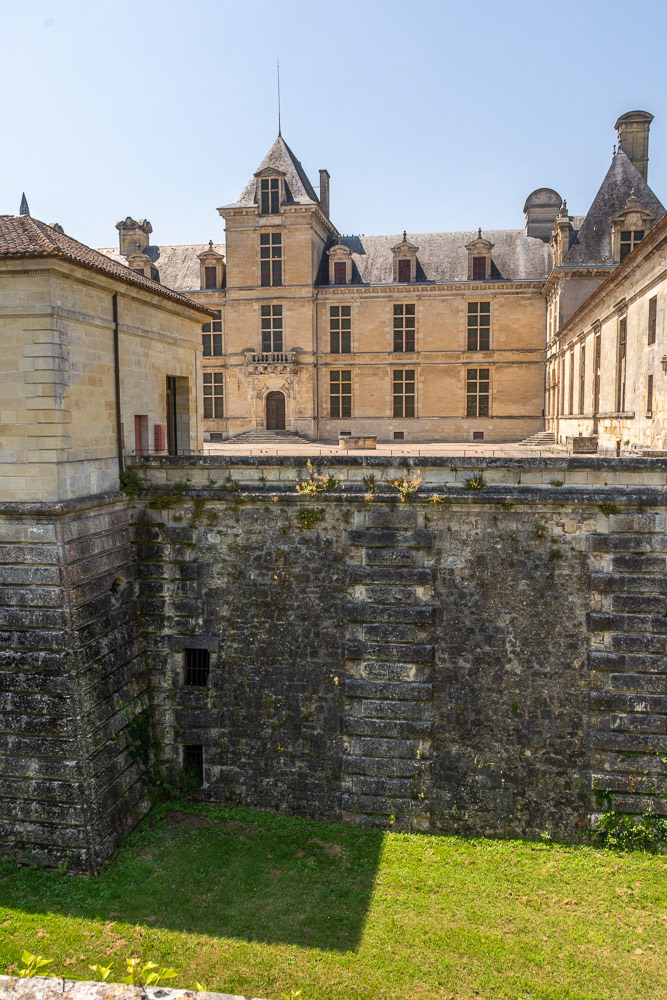
Château des ducs d'Épernon surrounded by moat.
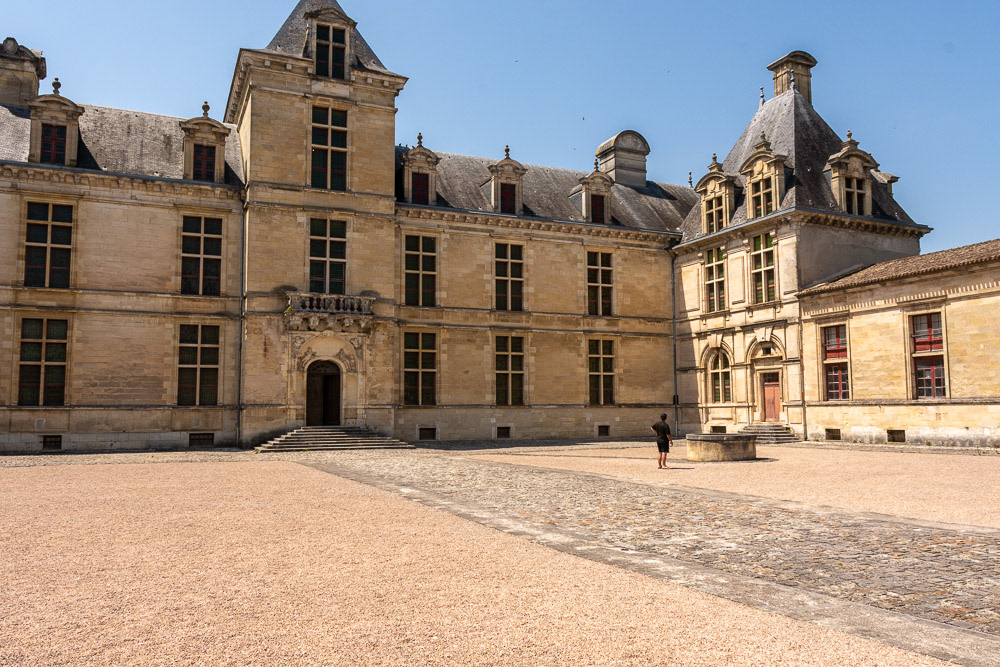
The Courtyard - Château des ducs d'Épernon.
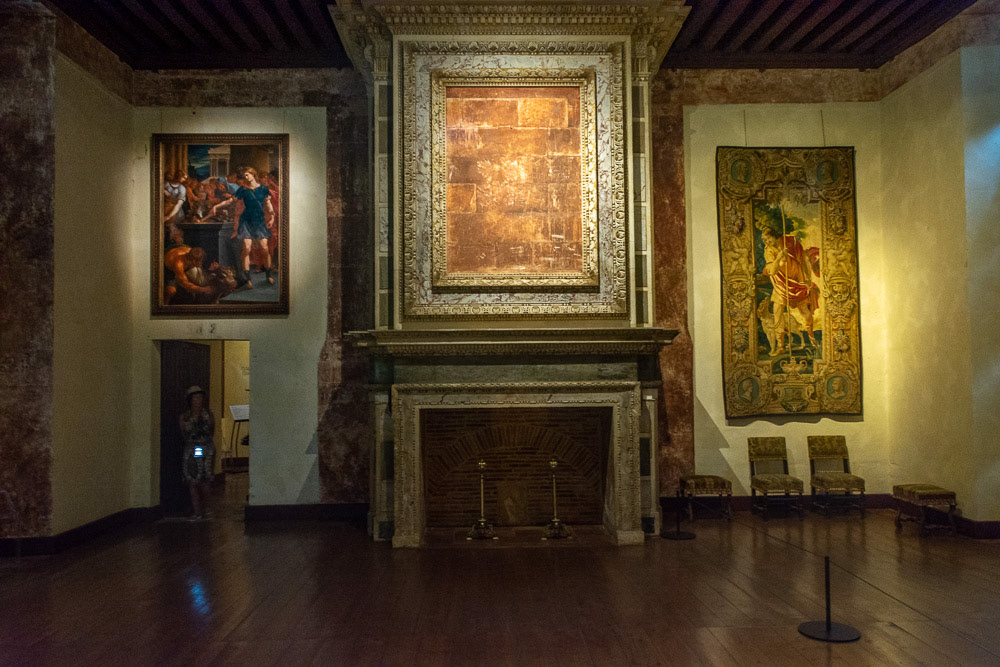
Château des ducs d'Épernon - historic tapestry and art.
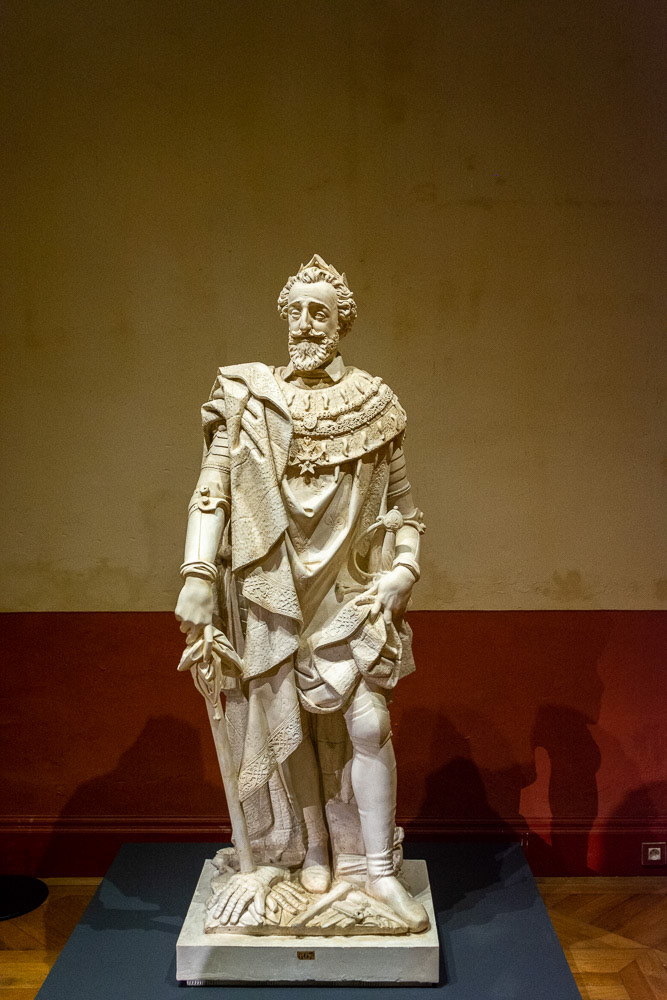
Henri IV of France.

Château des ducs d'Épernon, old time-piece

Château des ducs d'Épernon - once repurposed for use as a women's detention centre.
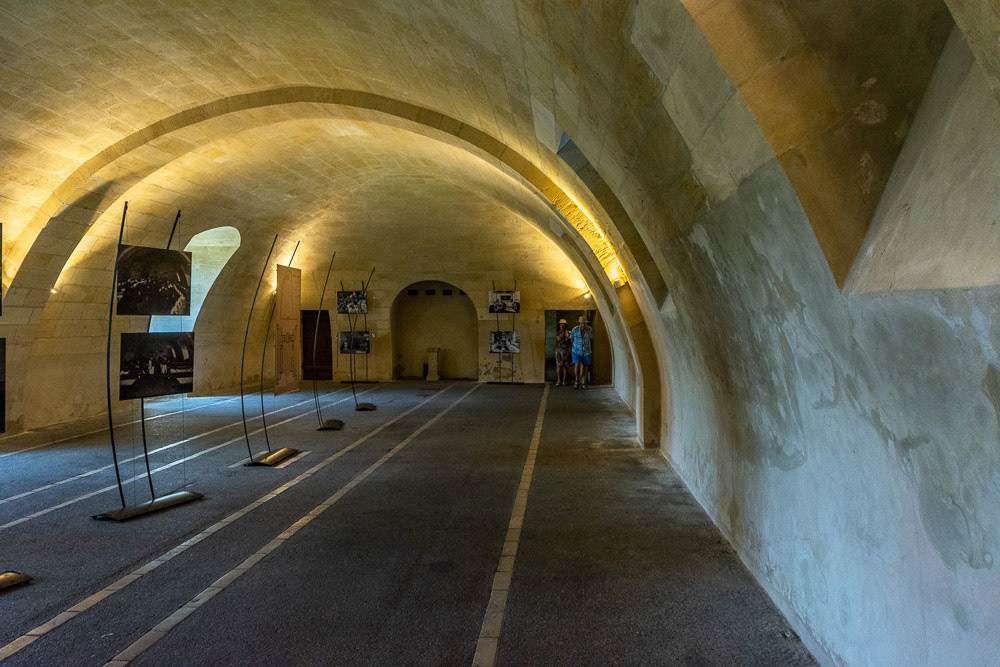
Château des ducs d'Épernon - basemet level.

Château des ducs d'Épernon - basemet level kitchen and staff quarters.
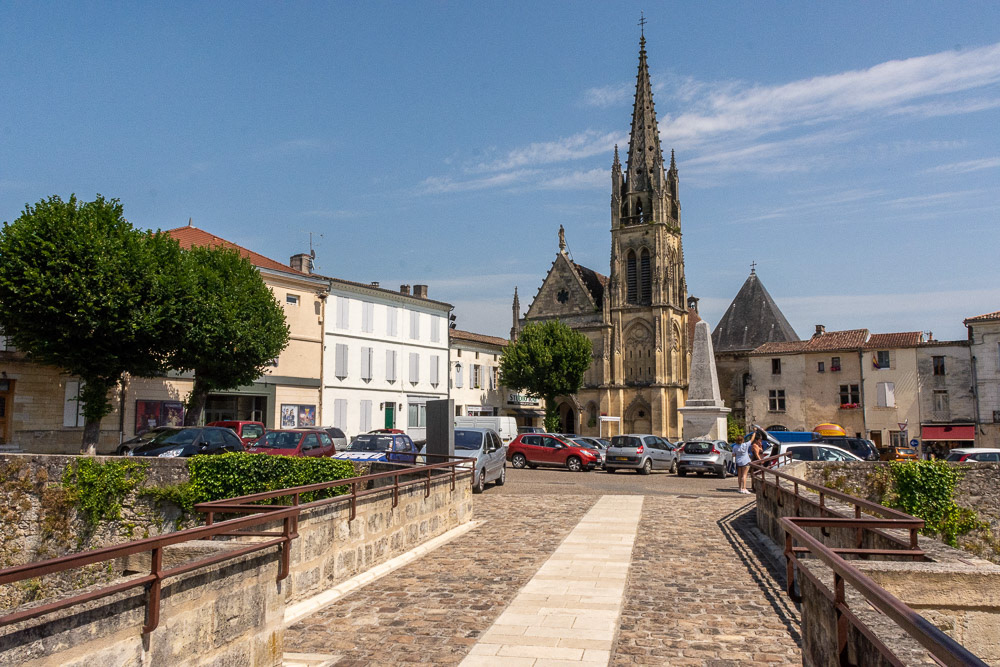
Eglise Saint-Martin de Cadillac lies directly opposite the chateau entrance.
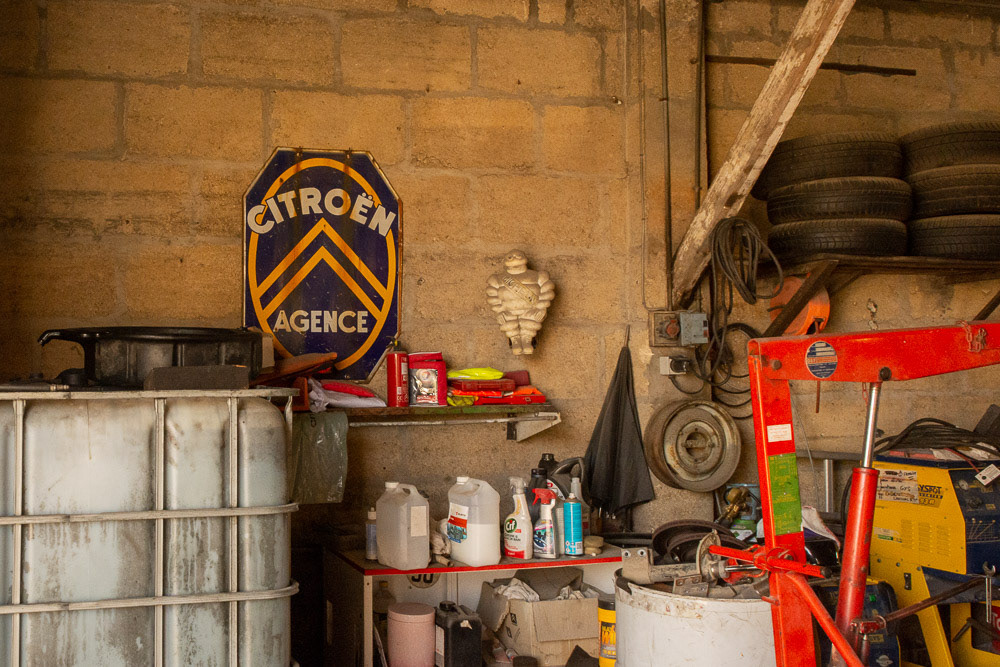
Citroen agent.
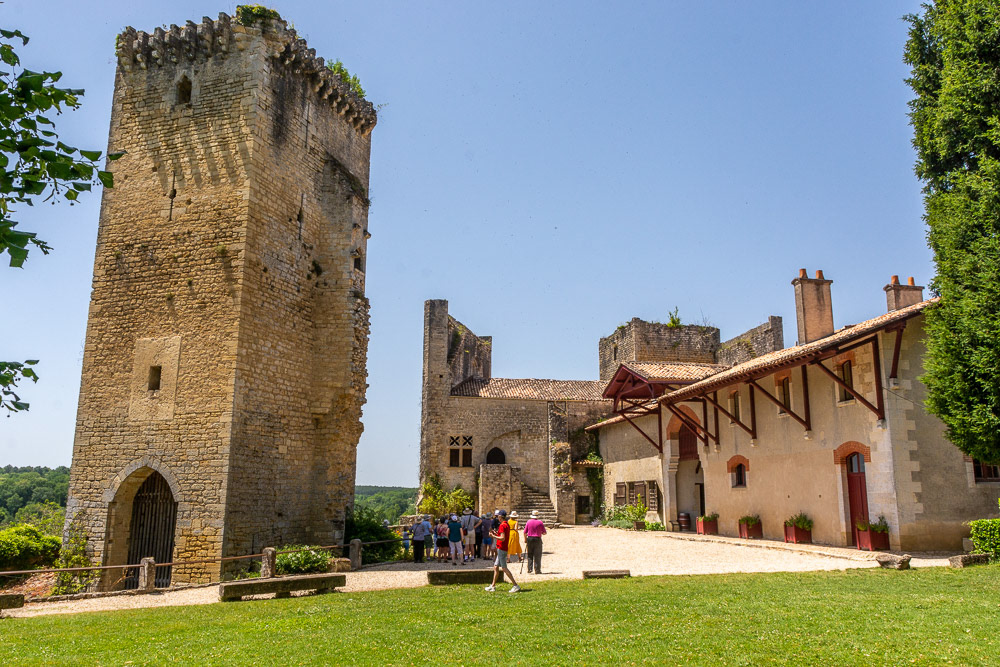
The first earth and timber fortifications were constructed by Charlemagne in the 8th century. Over the years they were replaced by stone fortifications and the old castle came into existence in 11th century.
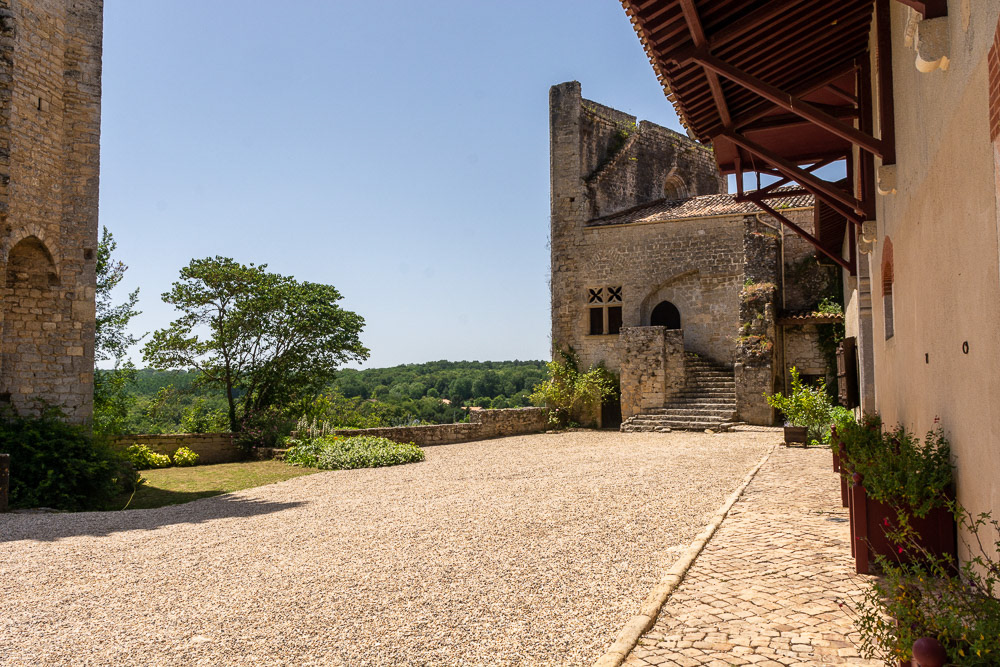
A combination of ancient and modern buildings is still in use today.
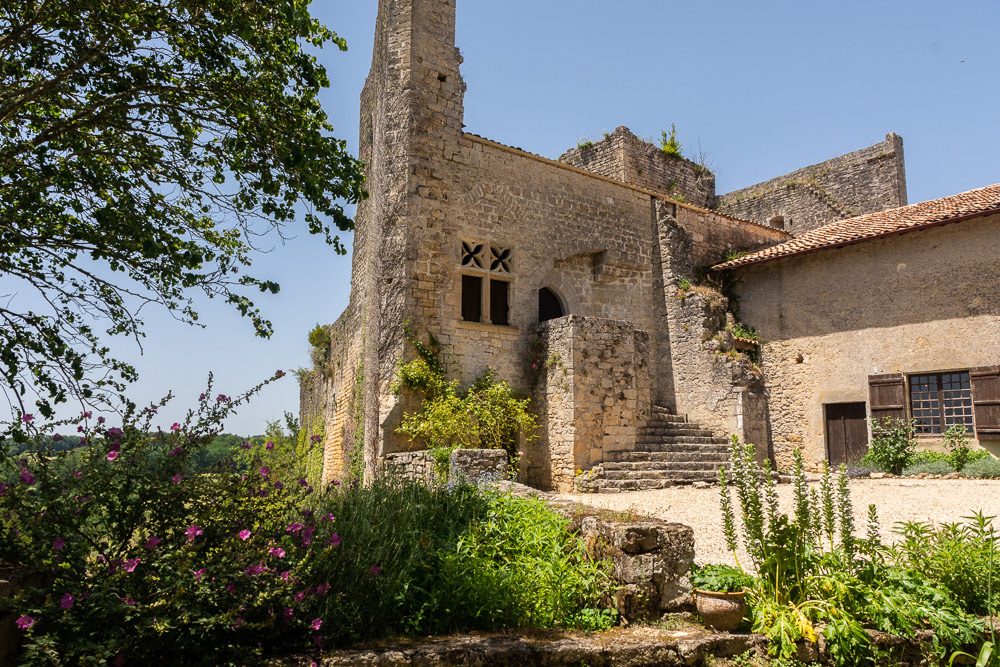
Remnant stone fortifications from the 11th century have been added to over the centuries.
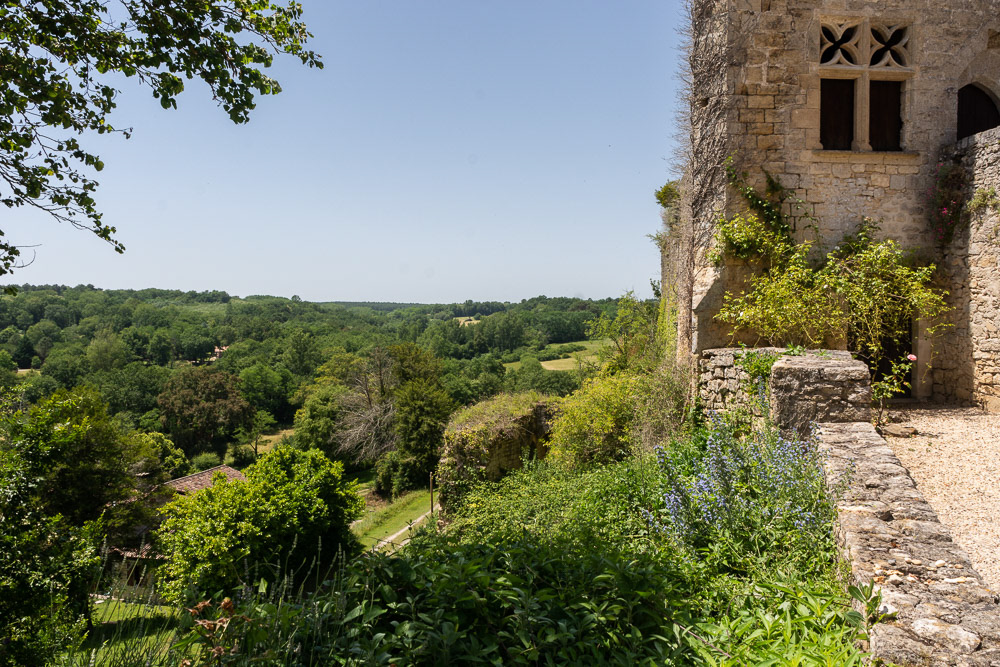
The hilltop fortifications provide expansive views over the countryside
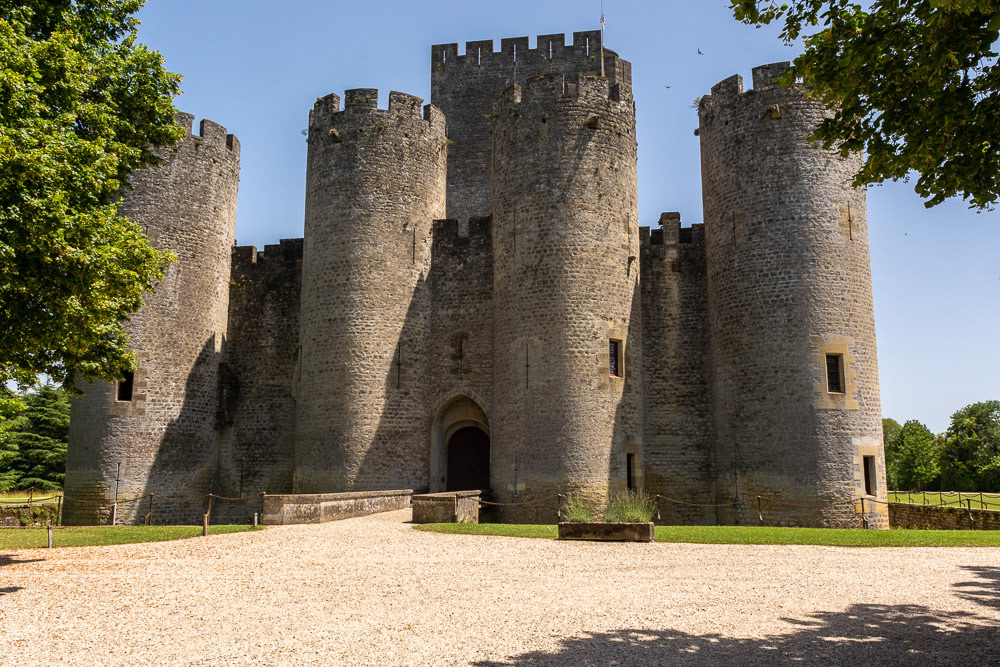
Roquetaillade Castle - The castle is square in plan with six towers and a central keep. The entire structure was restored and transformed between 1860 and 1870.
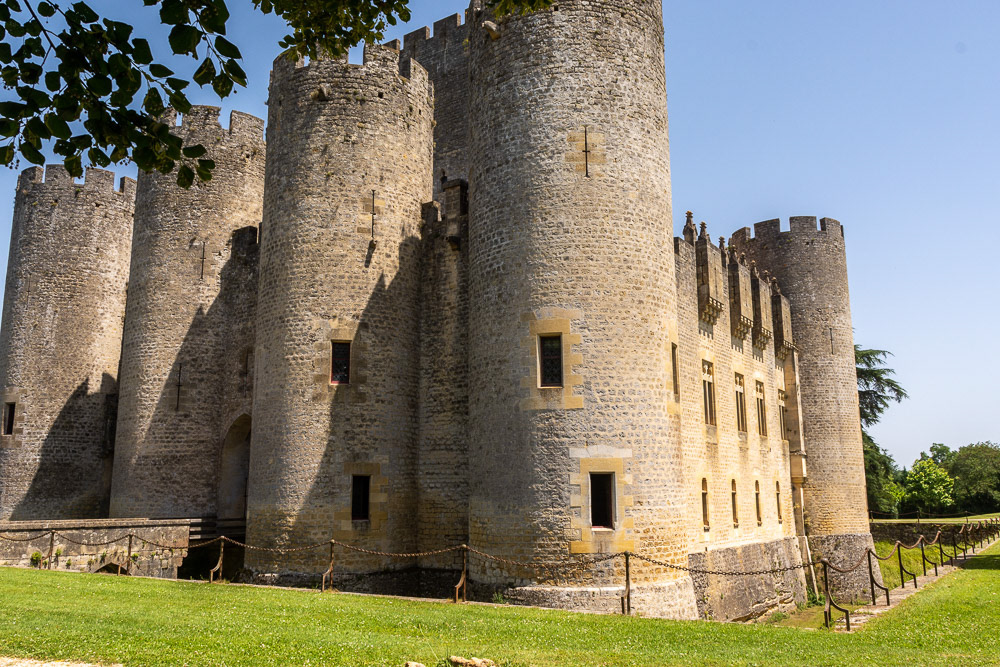
Charlemagne built the first fortification here, nothing remains of these but imposing ruins. In 1306, with the permission of the English King Edward I, Cardinal de la Mothe, built a second fortress (le Château Neuf).
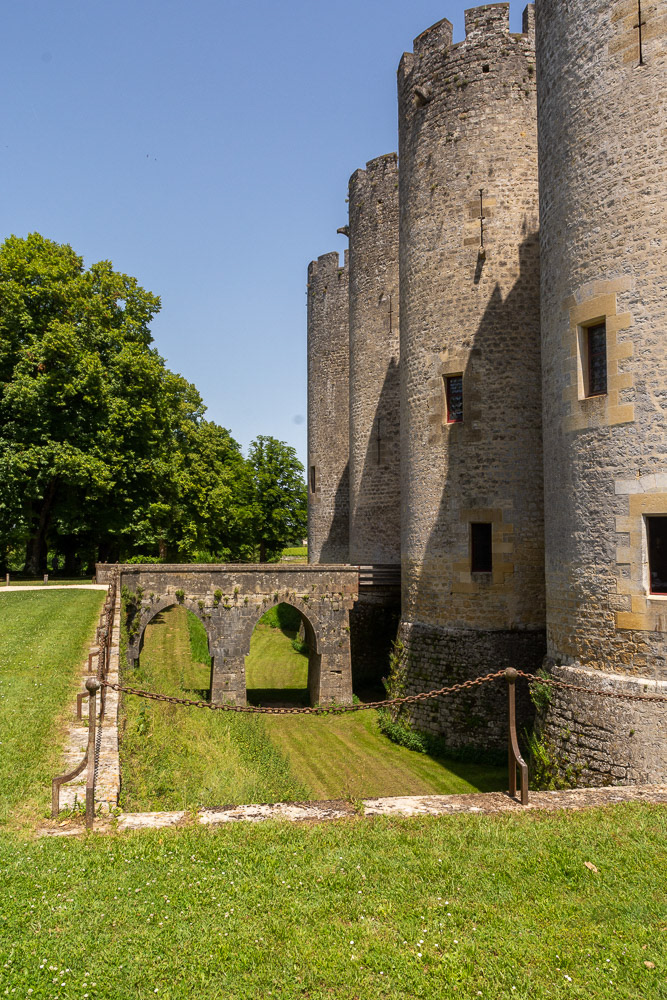
The front entrance bridge over the moat with the drawbridge lowered in place.
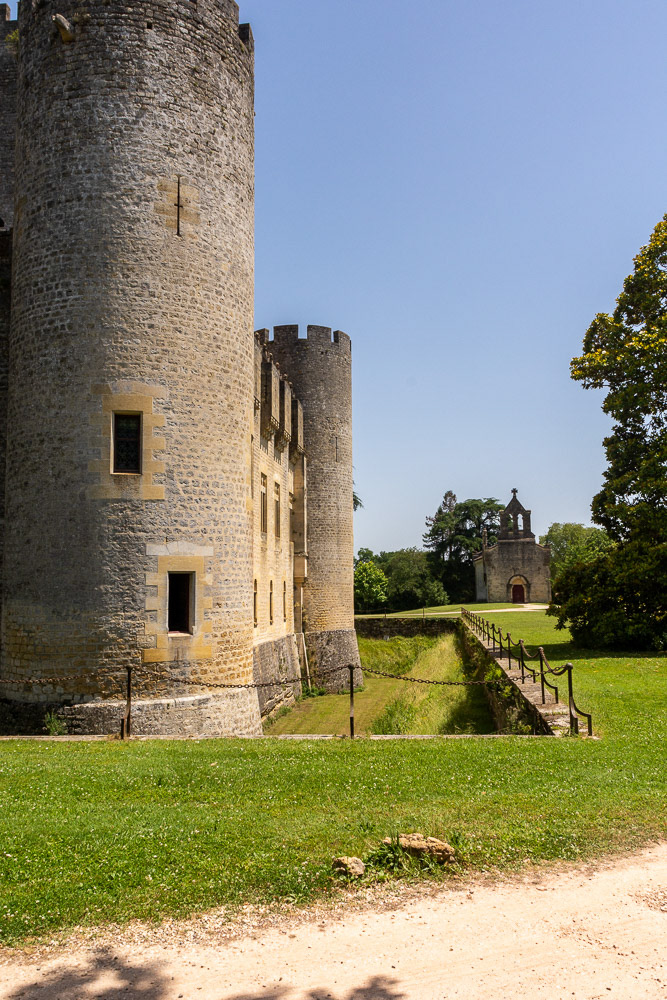
Restored in 1860 its been in the same family (Roquetaillade) for 700 yrs. In the background is the estate chapel.
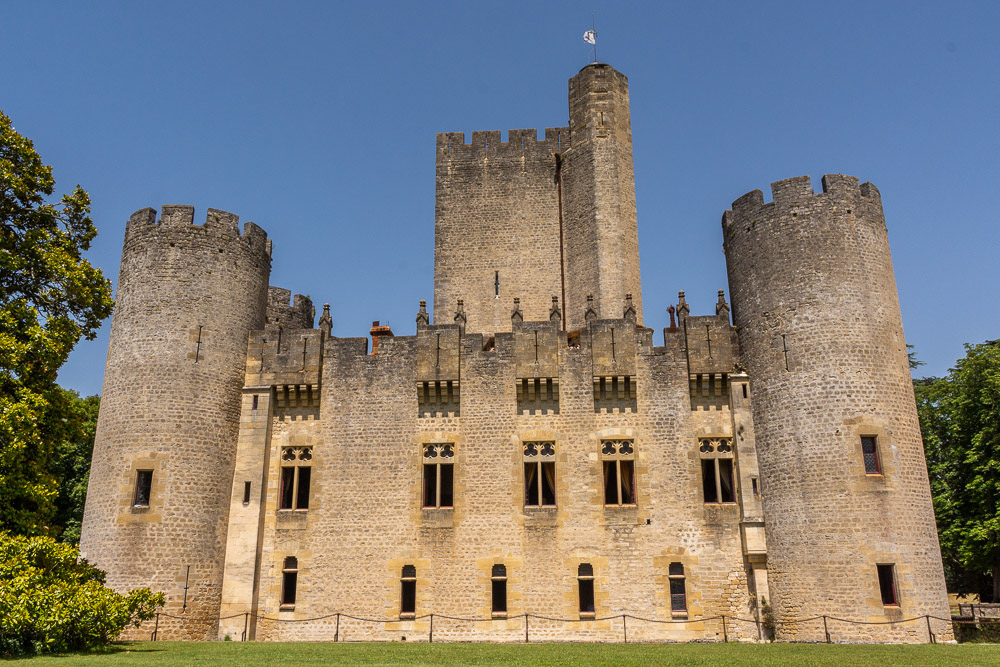
The imposing castle walls, a unique example of feudal architecture, with two fortresses within the same castle walls.
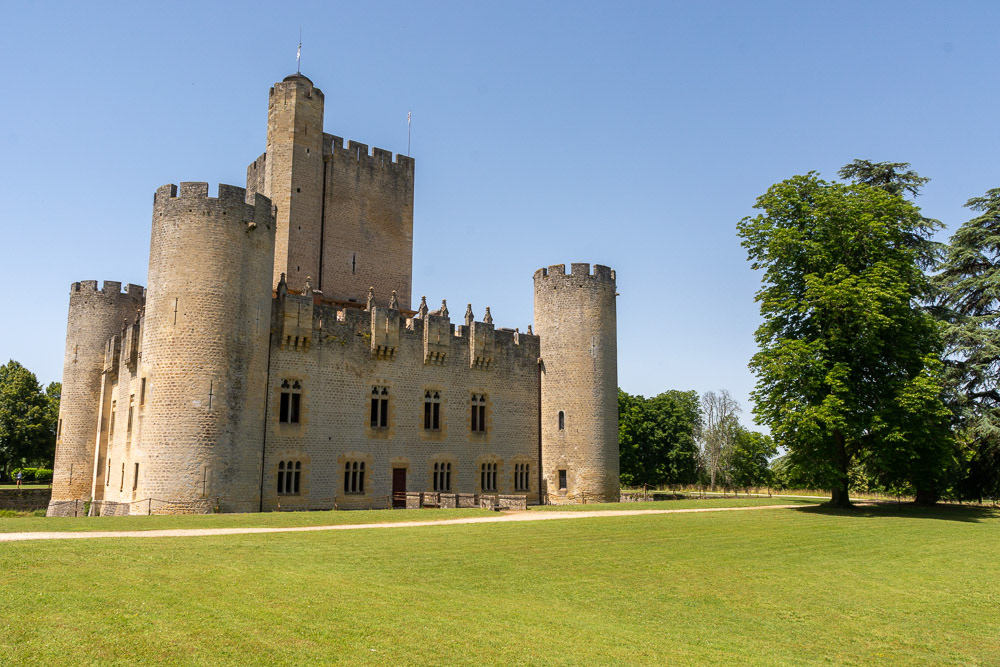
Chateau Roquetaillade viewed from the chapel.

Chain fencing around the moat.

An impressive main facade to the Chateau from inside the entrance courtyard.
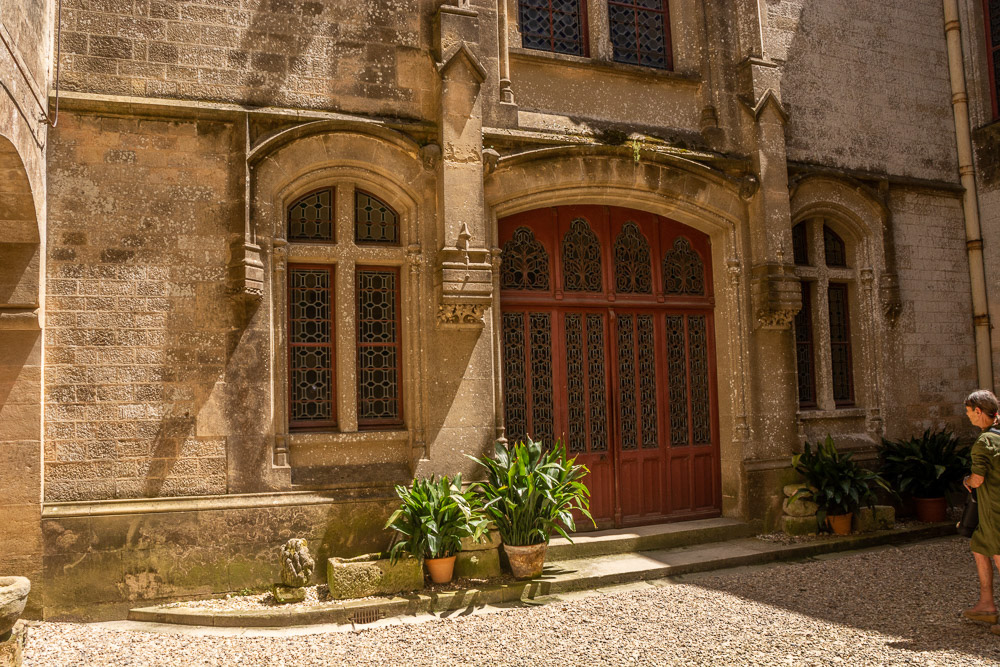
Our local guide who takes us inside the Chateau is actually the owner.

Roquetaillade Family Crest in stone.
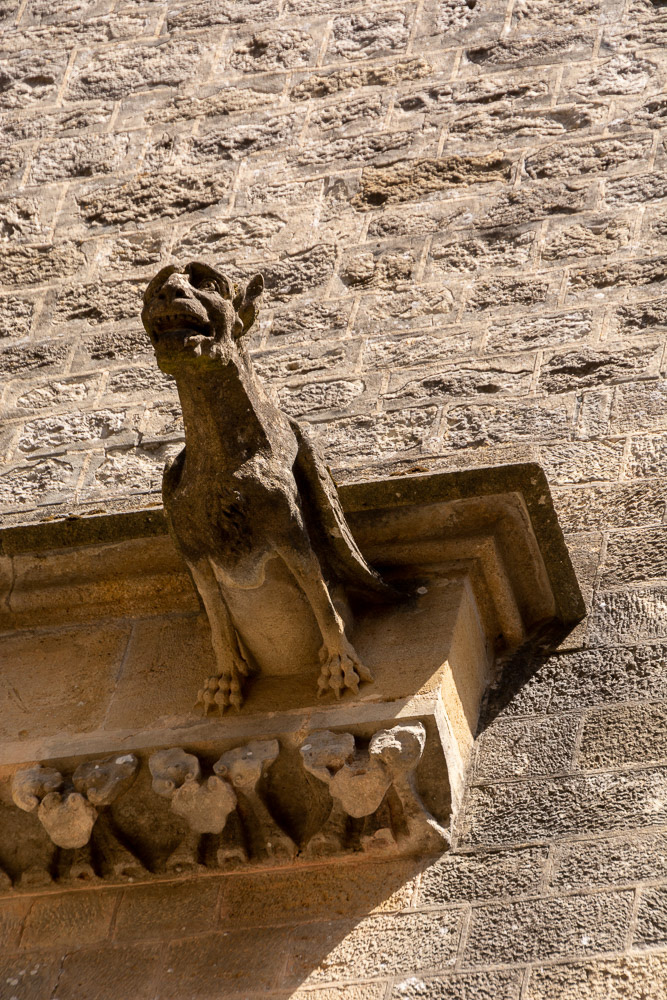
Gargoyle ugly.
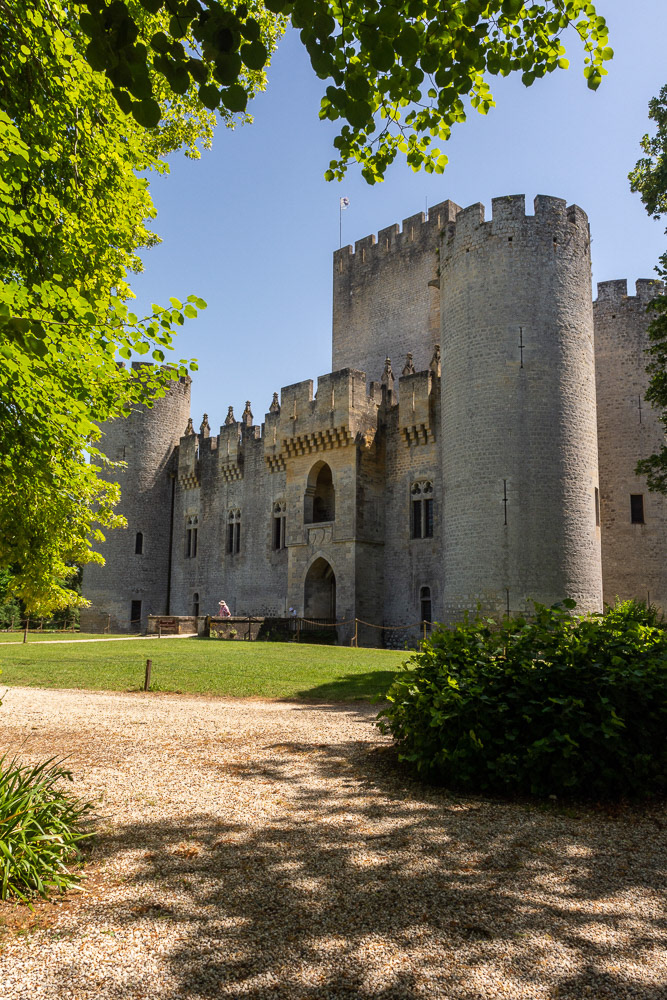
Roquetaillade castle's eastern facade.
Day 5 - Touring the Sauternes.
The Sauternes region is an AOC, established in 1936, and located in Bordeaux, France. The region produces an unfortified sweet wine, that can be made with Semillon, Sauvignon Blanc, Muscadelle and Sauvignon Gris grapes. It entails five different communes in the Gironde Department: Sauternes, Barsac, Bommes, Preignac and Fargues.
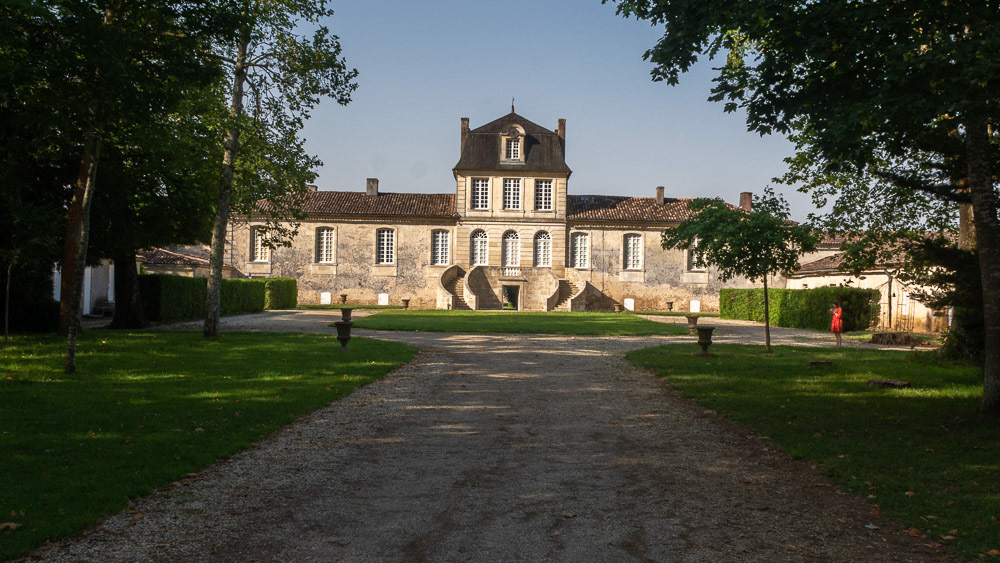
Chateau de Myrat, Saturnes emerges ahead of us from the shaded driveway.

Chateau de Myrat - constructed in 1730 by the Demerit family. We pass under the Chateau to the gardens beyond.

Colourful sentinel - this male peacock announces our presence to all with a loud, raucous screech.
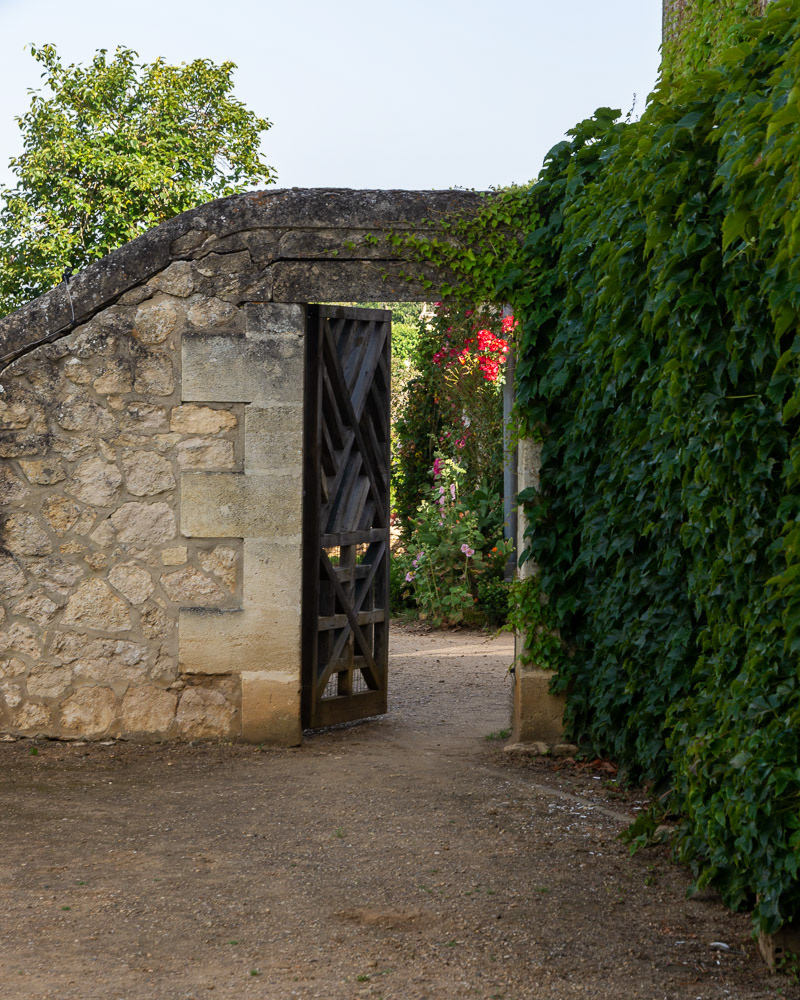
Climbing Ivy clad walls lead through the gated entry to immaculate gardens.
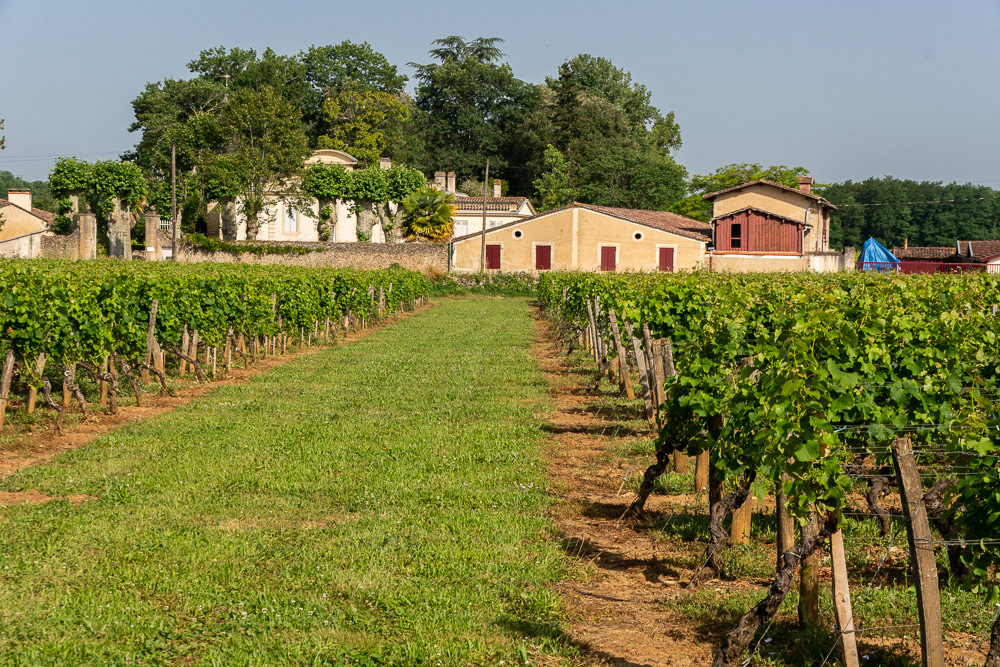
Chateau de Myrat - The 30 hectare Sauternes vineyard is planted to 88% Semillon, 8% Sauvignon Blanc and 4% Muscadelle.
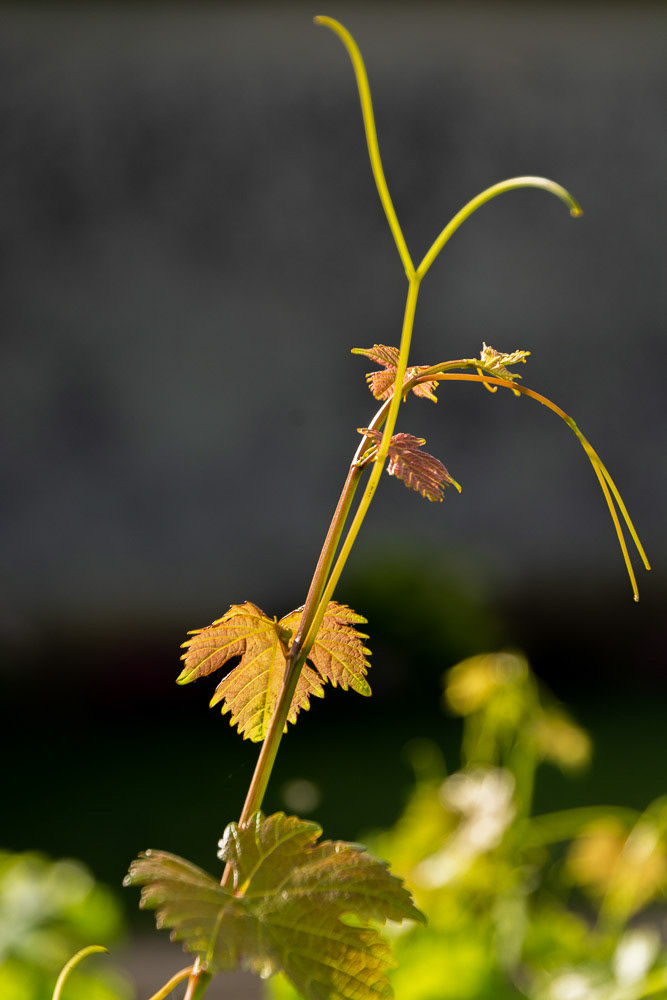
New vine growth is highlighted in the morning sun.

Chateau de Myrat - pretty as a peach.
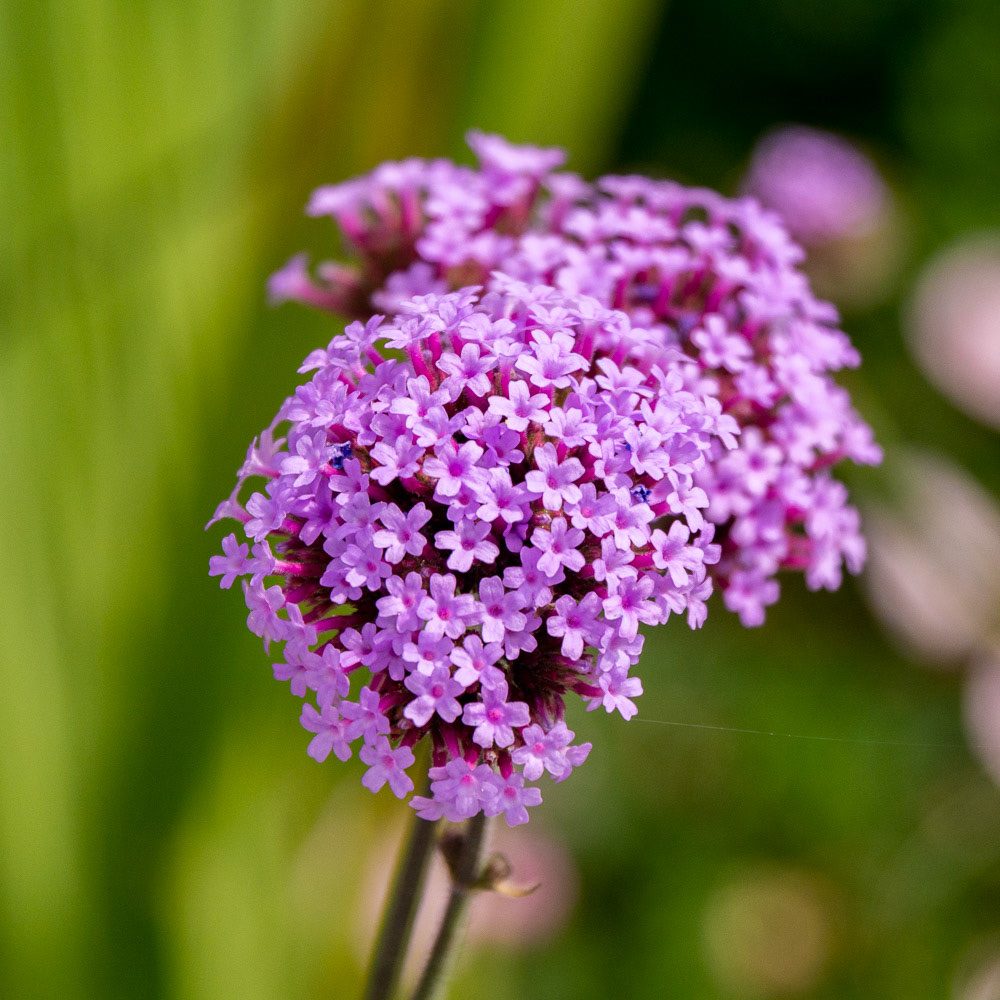
Pink petals pop in the morning light.
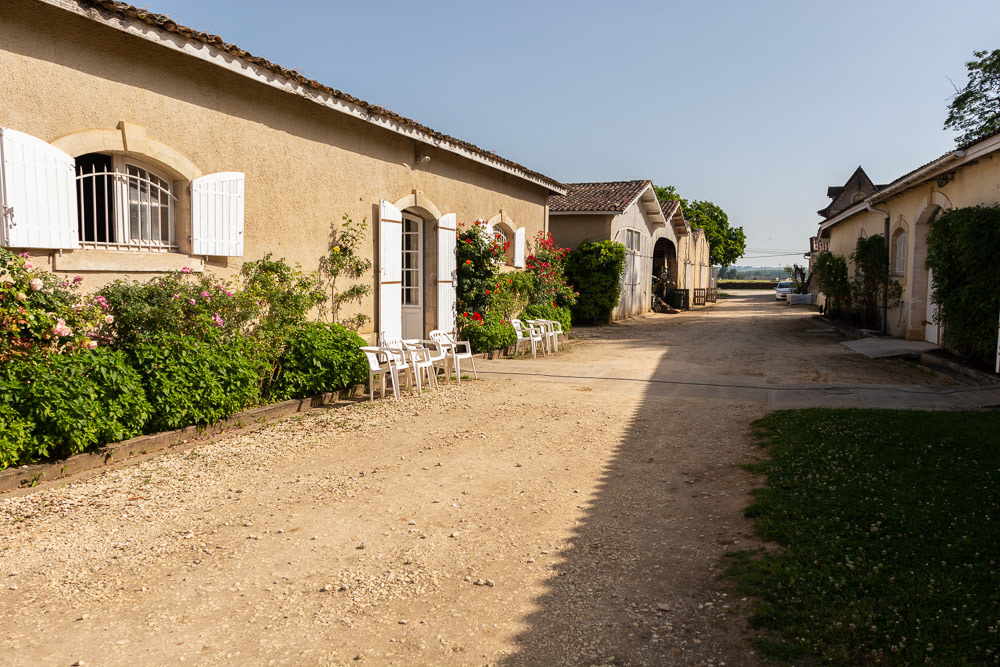
Chateau de Myrat - our tour takes us through historic buildings still in use by the winemakers.

Chateau de Myrat - winemaking buildings and processes of a bygone era are preserved for posterity.
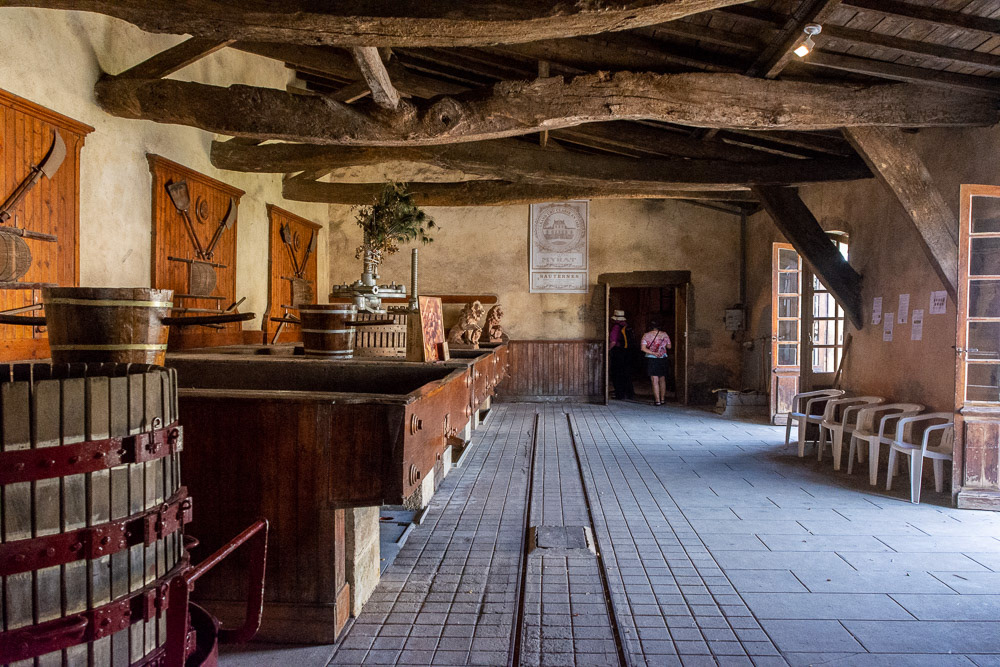
Chateau de Myrat - museum of early winemaking leads into the cellars.
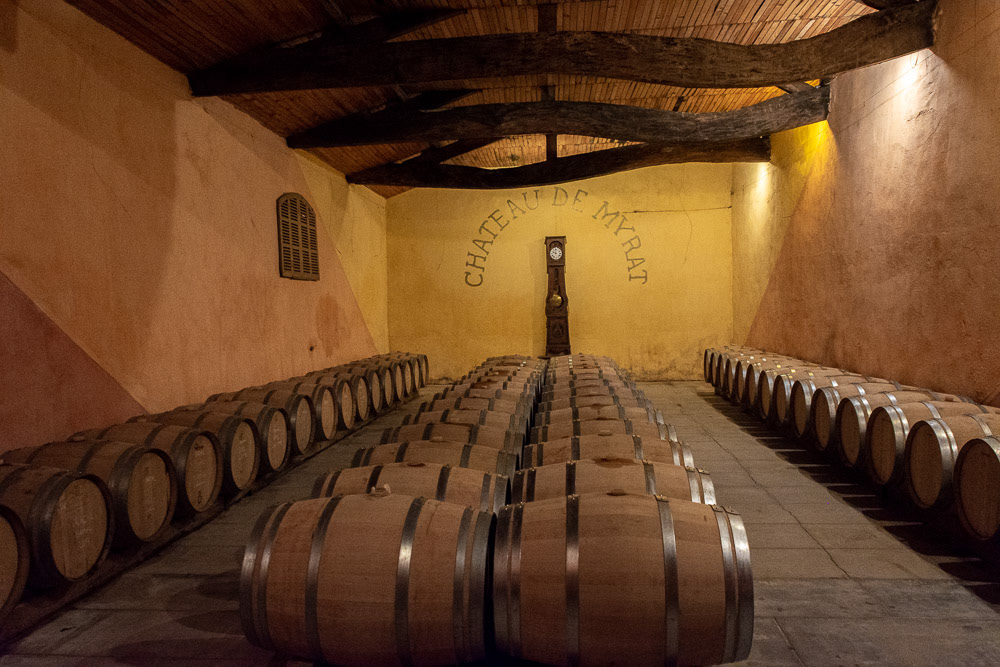
Chateau de Myrat - Cellar timepiece watches over the ageing process.
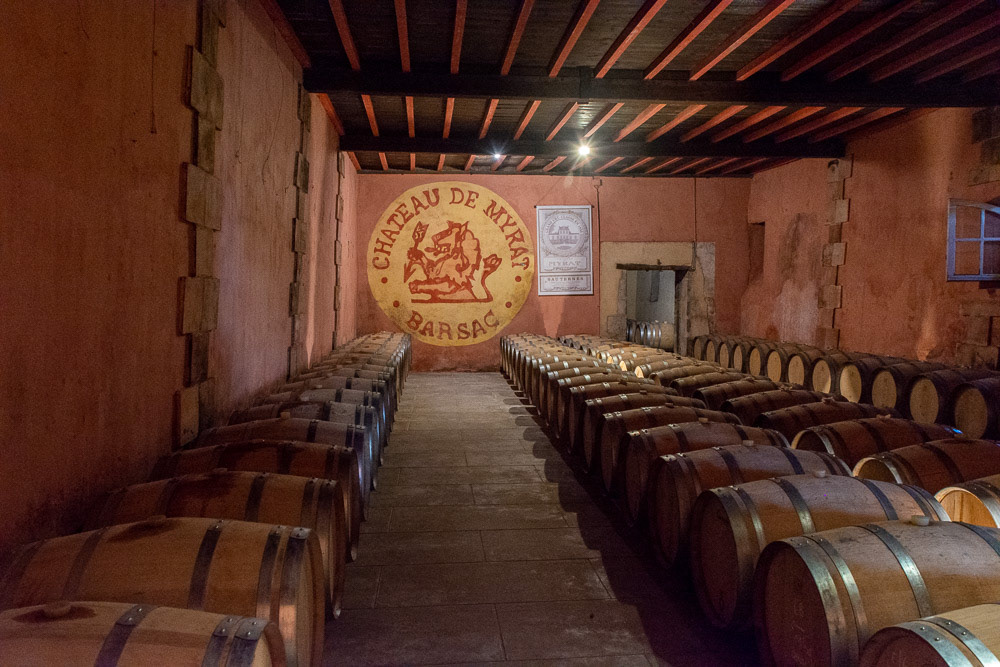
Chateau de Myrat - barrels of the good stuff.
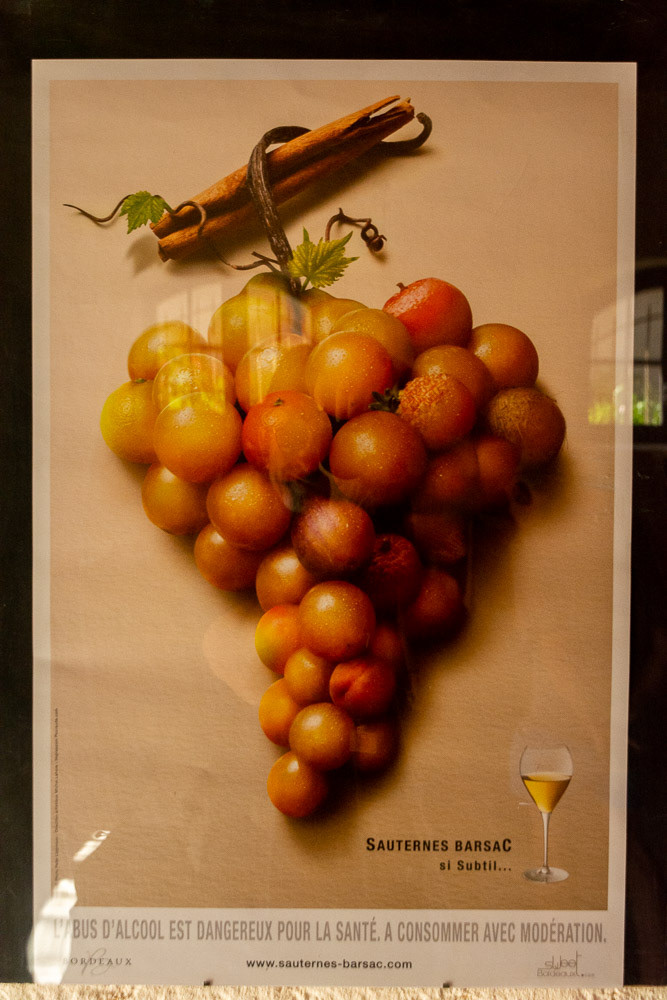
Chateau de Myrat - Sauterne Barsac, a sweet drop.
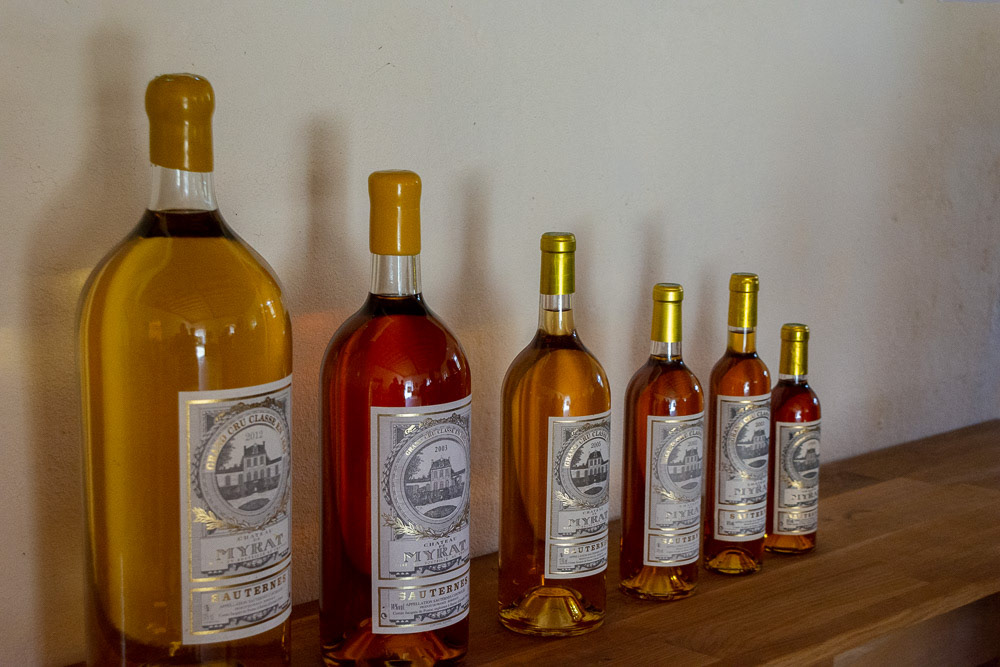
Chateau de Myrat - Sauternes for sampling.
Days 6 & 7 - Bordeaux
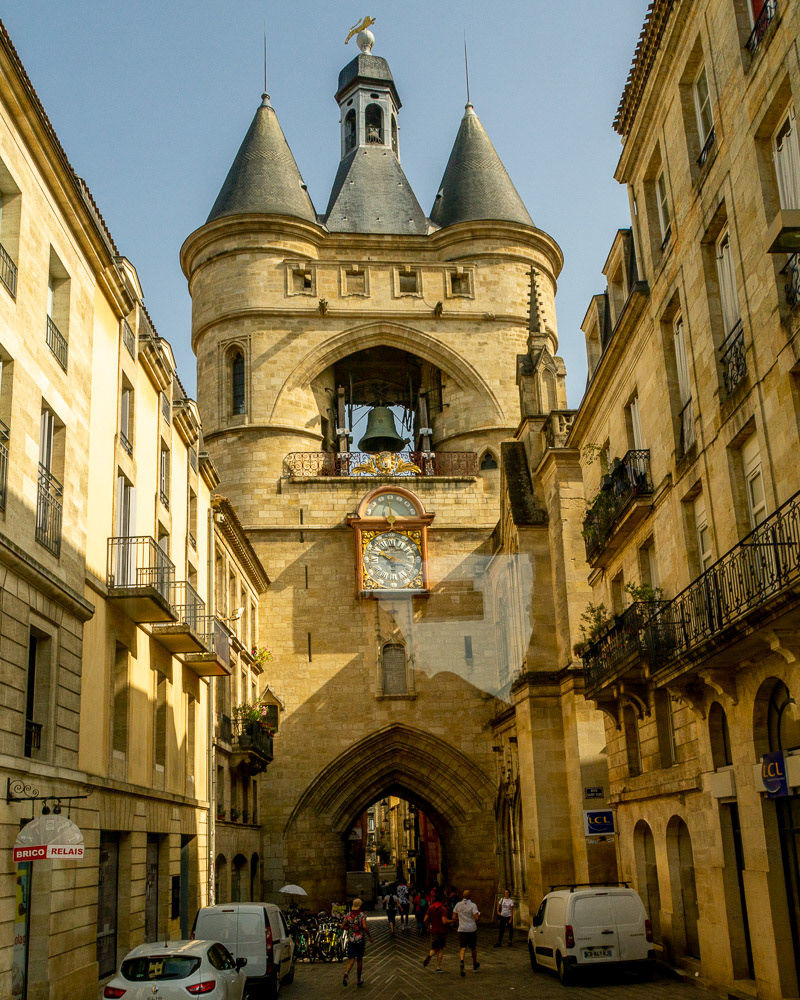
Grosse Cloche, a bell tower in the heart of Bordeaux. an extension of the Église Saint-Éloi, a 15th-century church hidden in an alley.
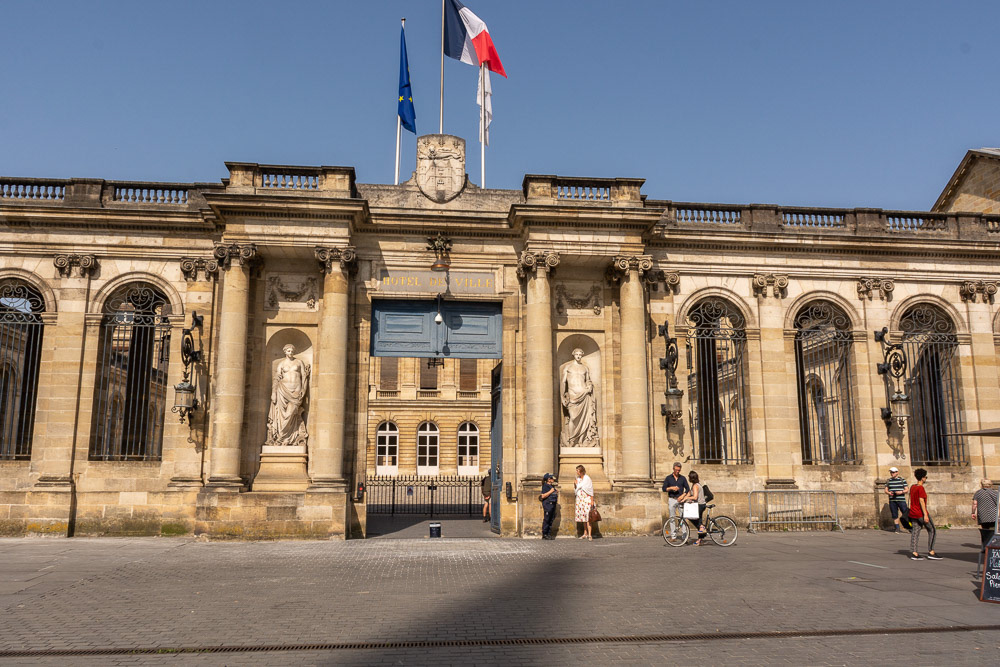
The Palais Rohan in Place Pey Berland houses the town hall of Bordeaux and the Musée des Beaux-Arts de Bordeaux.

Bordeaux Cathederal, the main northern facade with its rose window above the Portal des Fleches.
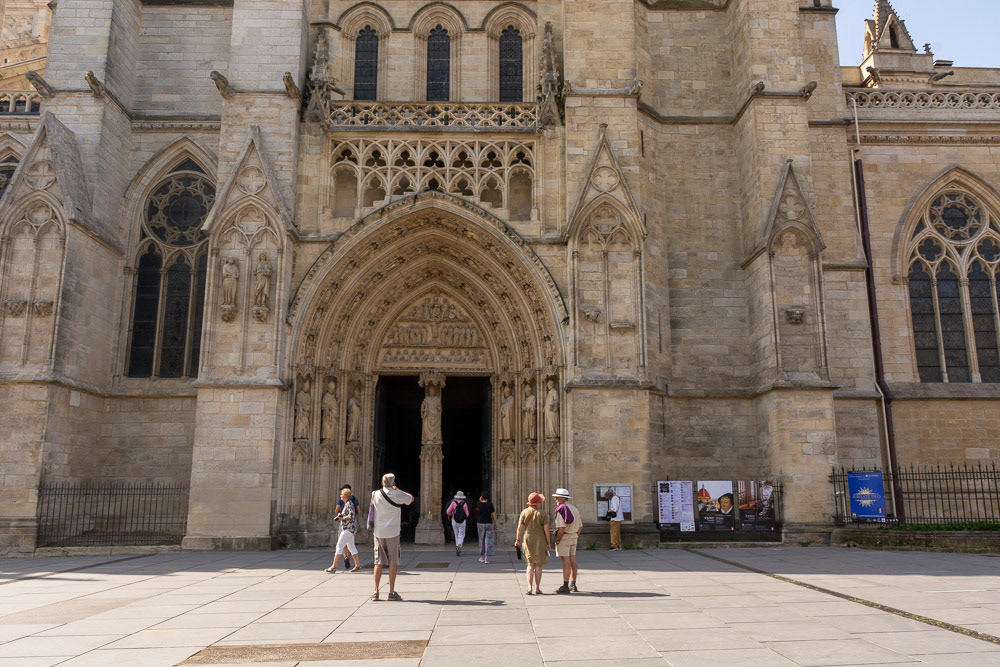
Portail des Fleches (Door of Arrows).
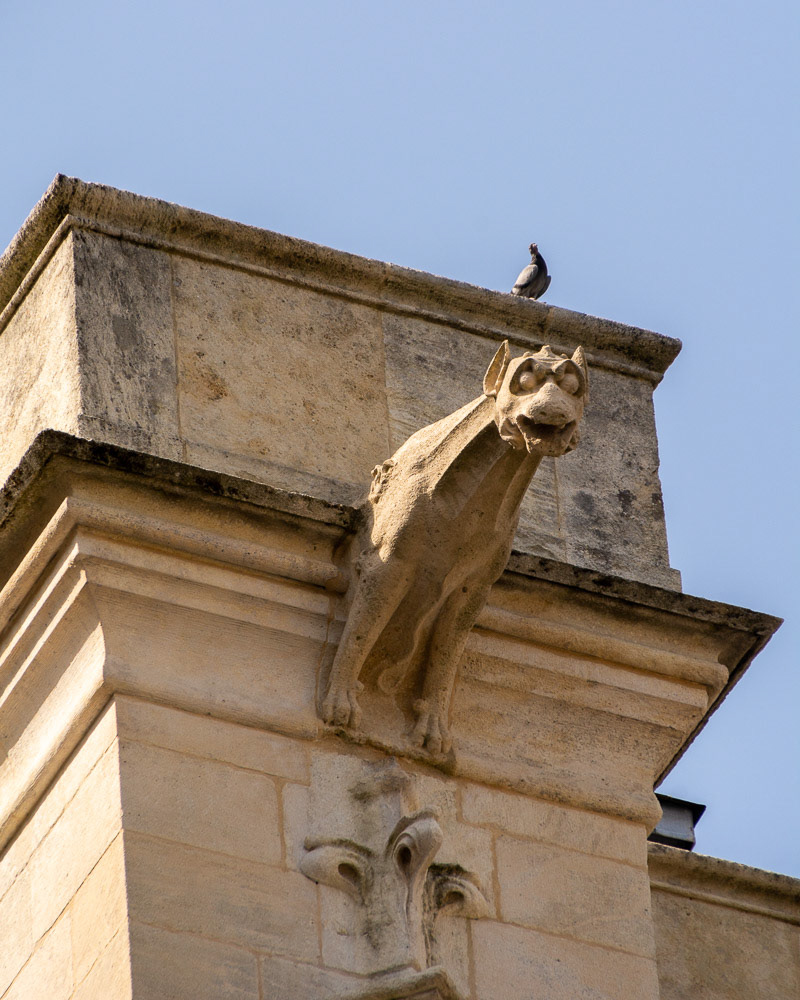
Bordeaux Cathederal, gargoyle and feral pidgeon.

Bordeaux Cathederal, decorative relief above the Royal Portal.
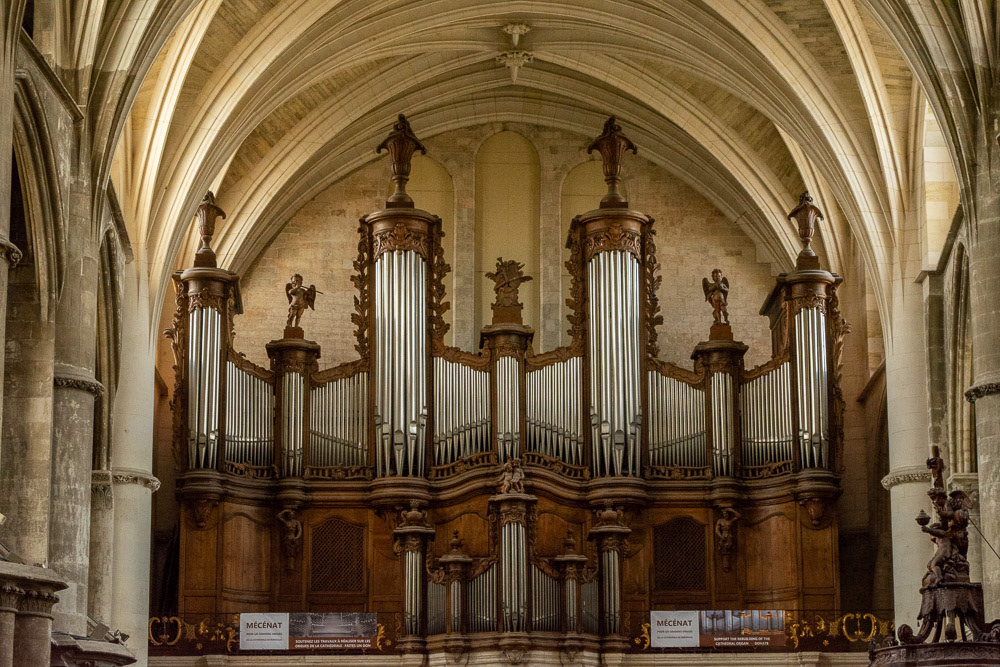
Bordeaux Cathederal, the Grand Organ.
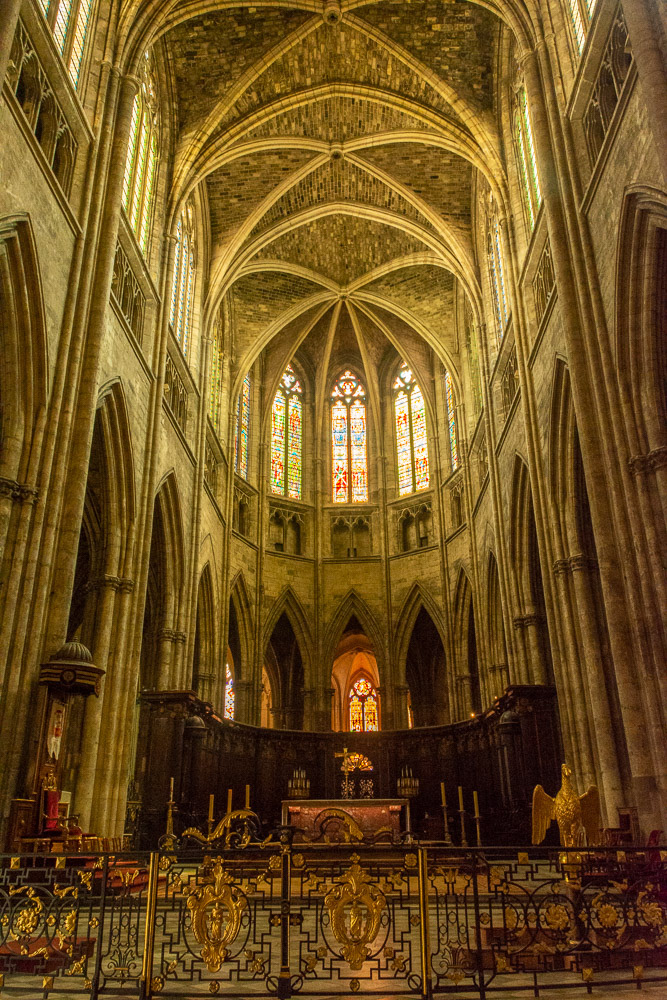
Bordeaux Cathedral is built in the Gothic Style, it has an eastern facing choir with large stain glass windows for letting in morning light.
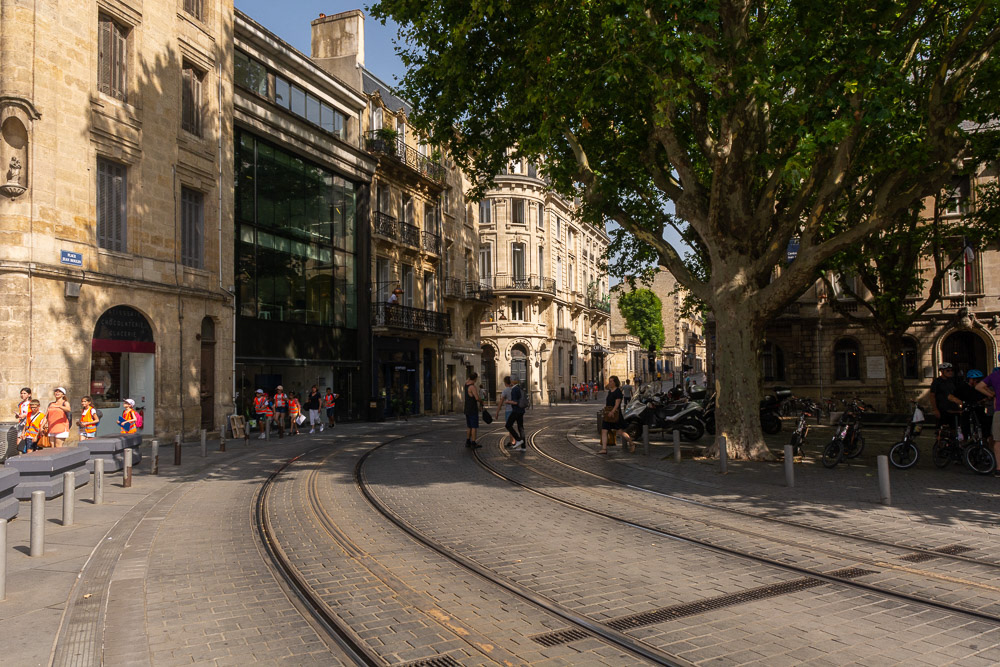
Early morning activity on the streets.

Street art.......
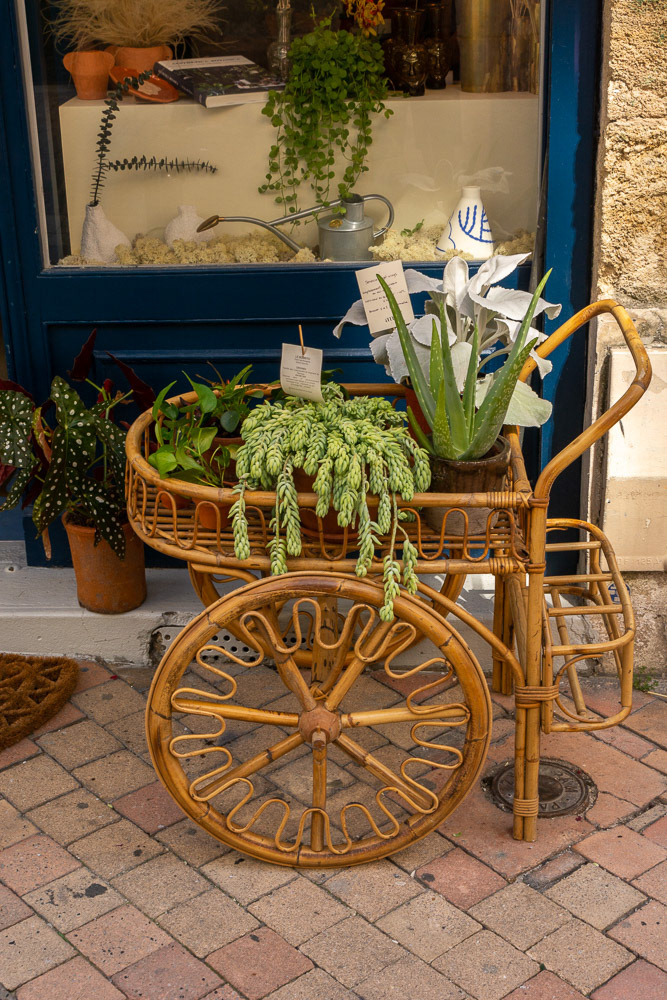
Simply succulent...
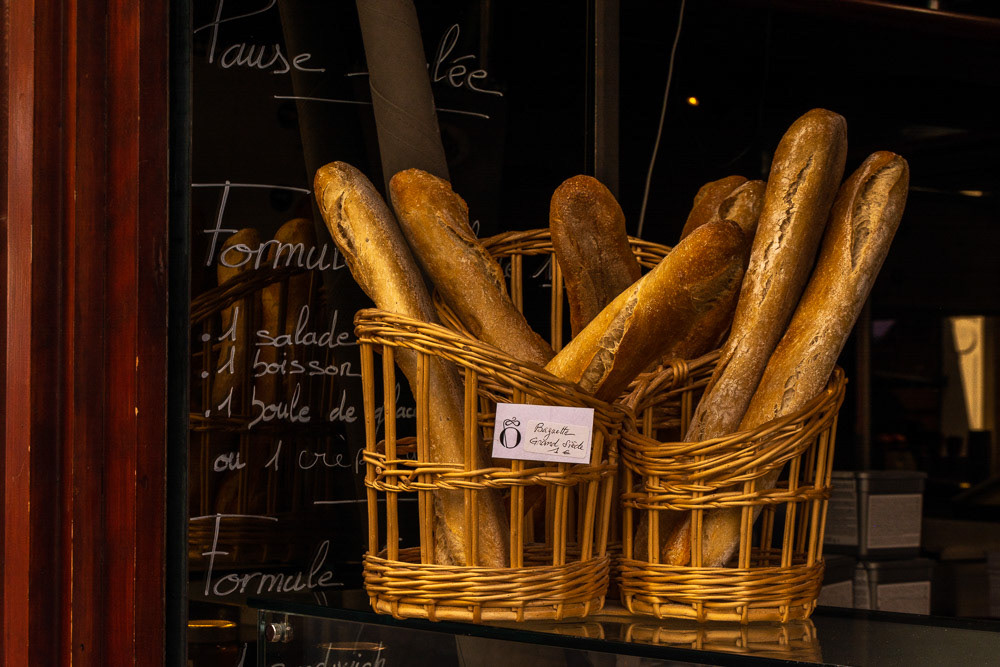
Baguette Grand Siede..........
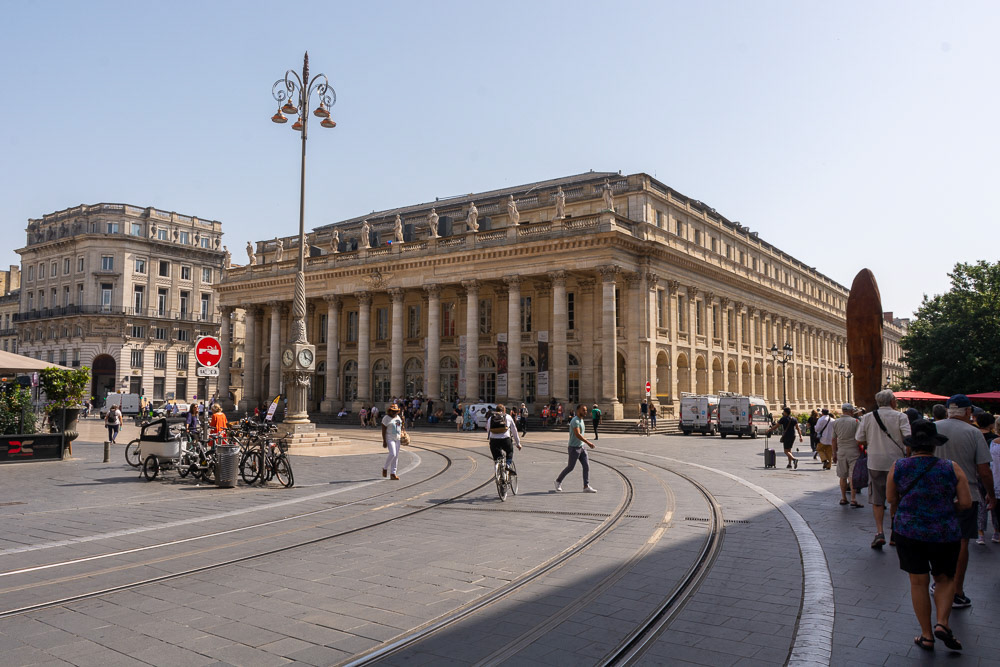
Place de la Comedie
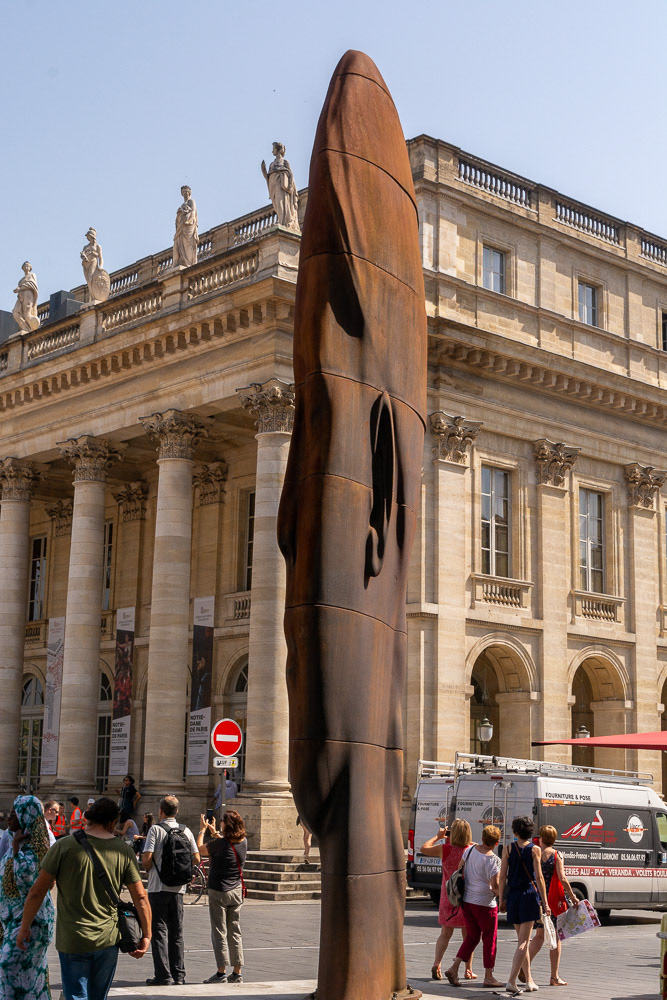
A head by Jaume Plensa...Bordeaux.
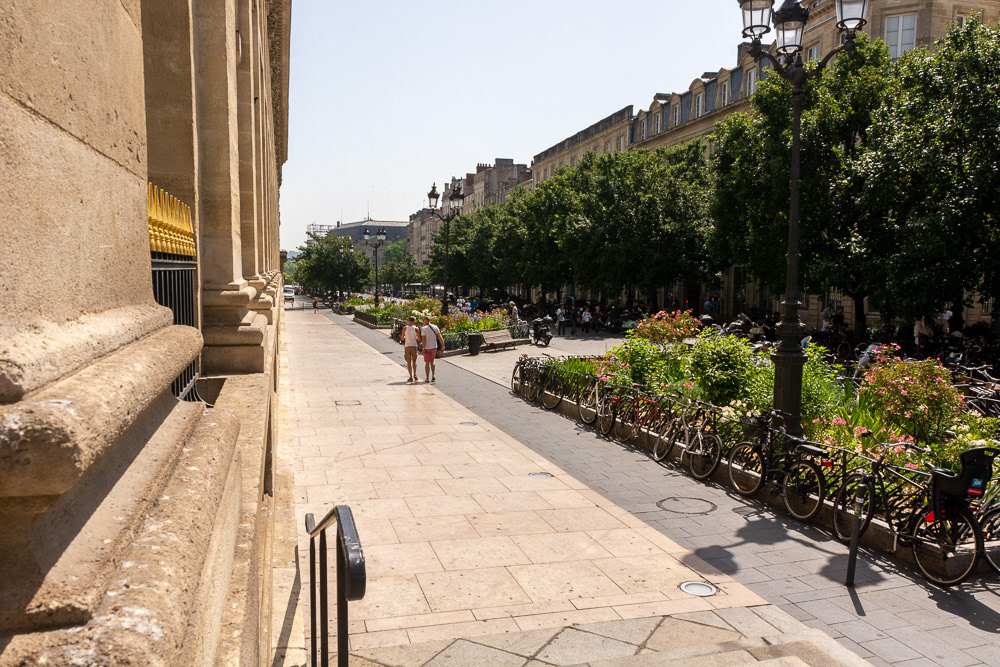
Cours du Chapeau Rouge....... an avenue of gardens and trees.
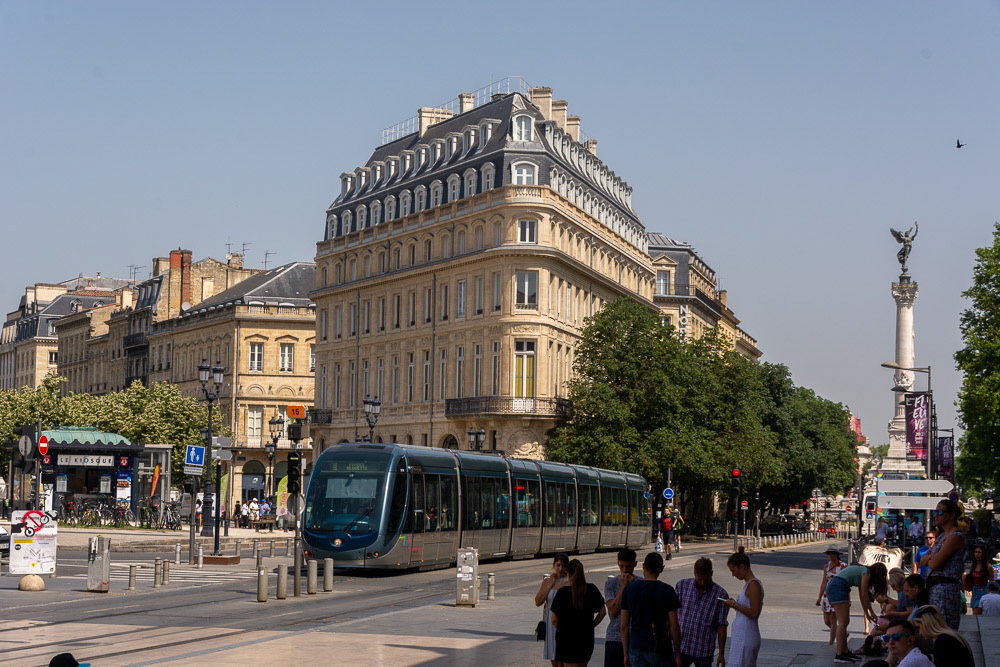
An e-tram cruises past Conseil Interprofessionnel du Vin de Bordeaux with Lady Liberty atop Monument aux Girondins in the background.

Monument aux Girondins, standing proudly 54 metres high in sky of Bordeaux, is richly adorned with an intricate bronze statue representing Lady Liberty.
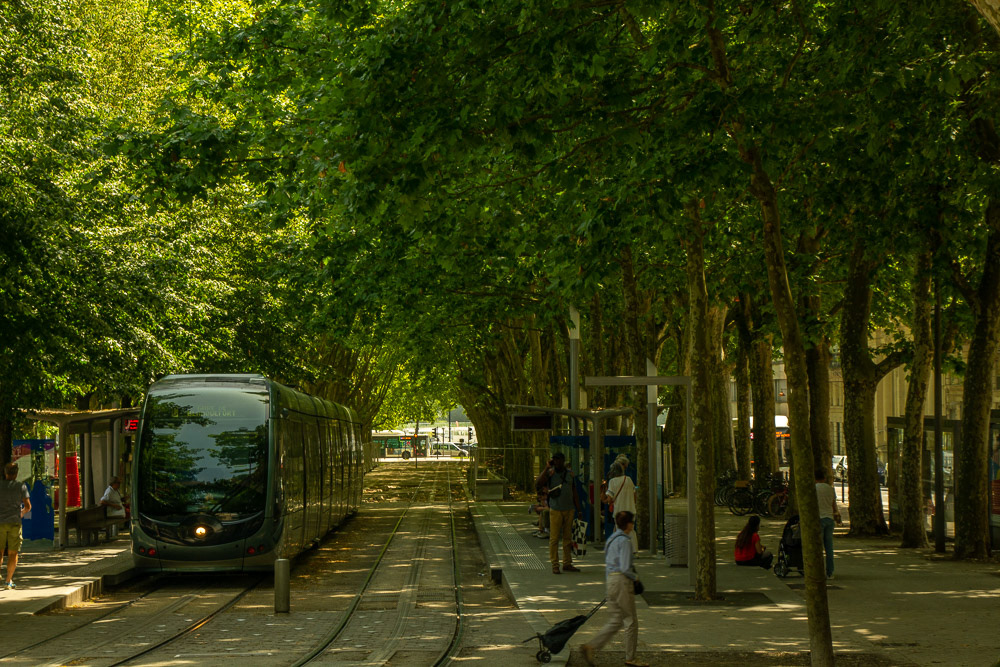
A shaded oasis adjacent Allee dÓrleans.

Pont Jacques Chaban-Delmas spanning the River Gironde between the Baclan and Bastide quarters of Bordeaux.

La Cite du Vin, a museum dedicated to wines of the world.
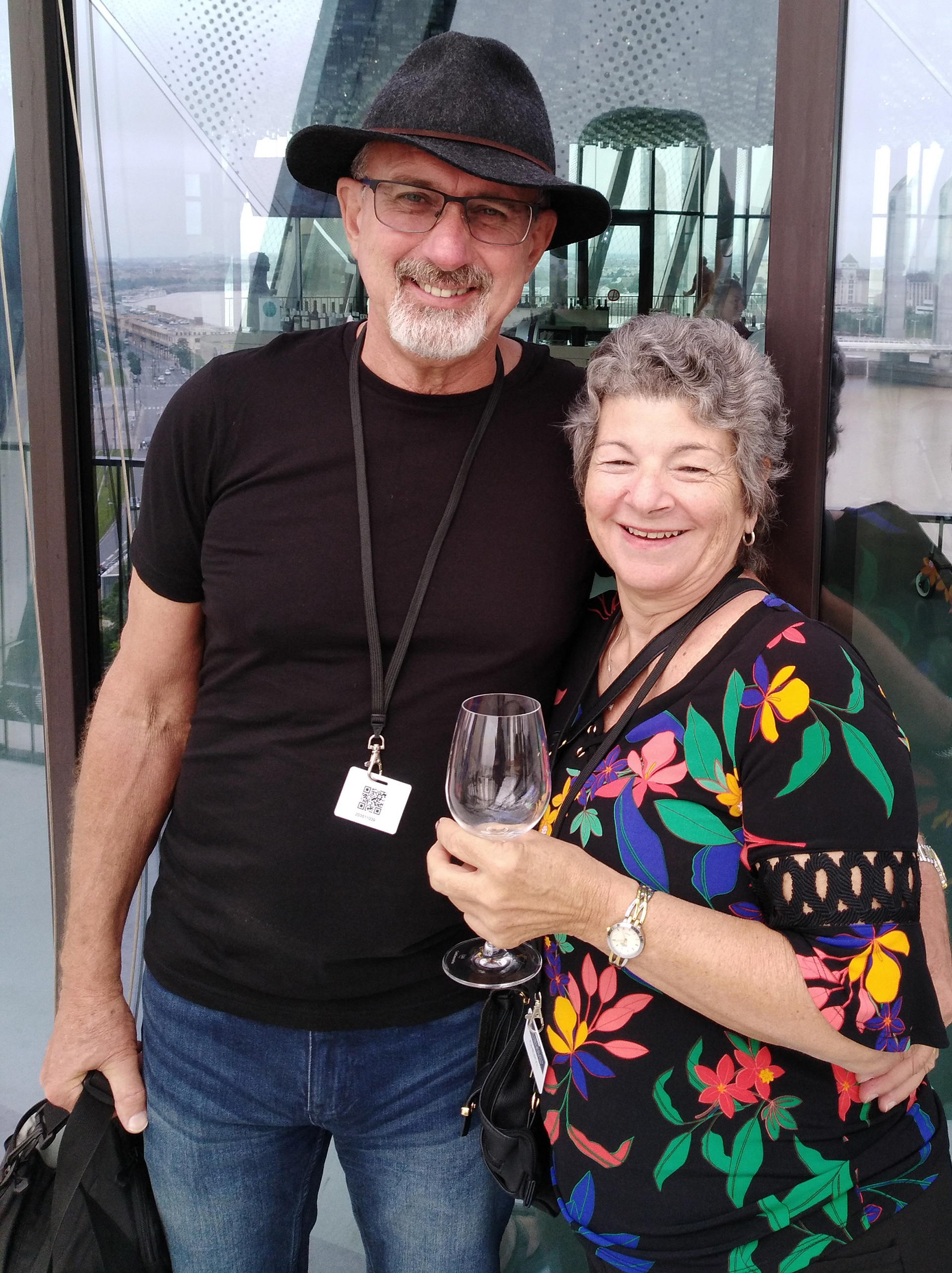
Enjoying the view from La Cite du Vin.
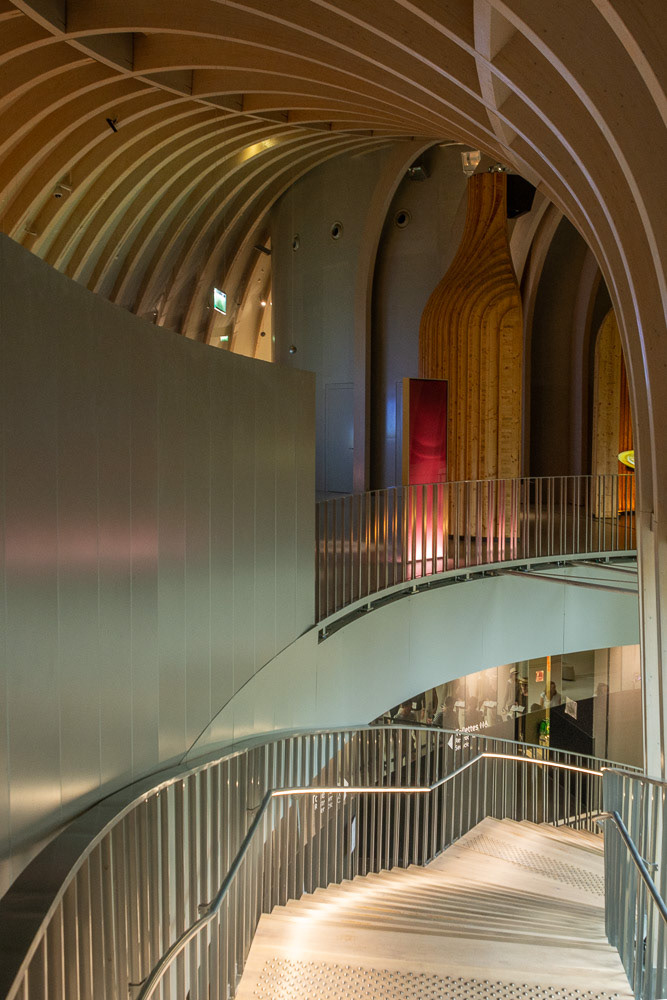
The interior of La Cite du Vin - an imperssive architectural structure.

Pont Jacques Chaban-Delmas - an impressive 110m wide central span can be raised for shipping.
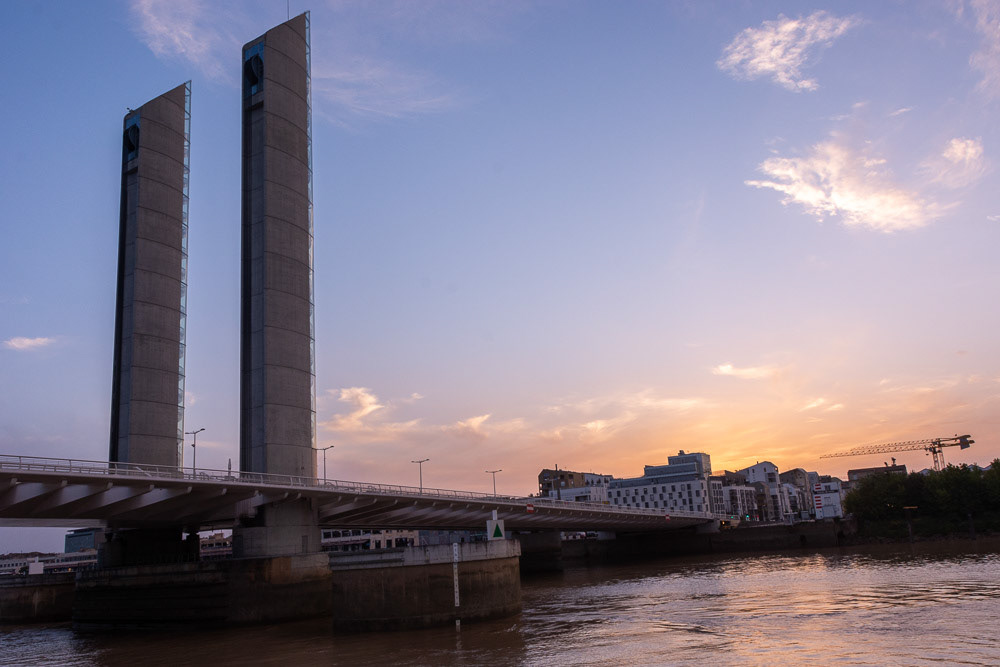
The 77m high-lift system of the pylons of the Pont Jacques Chaban-Delmas allow the 110m central span to be raised to full height in just 11 minutes.

Cruising past Promenade Michel Corajourd with Eglise St Louis silhouetted in the sunset.

Sunset lends a rouge cast to the typical French Architecture - Place de La Bourse.

Pont de Pierre - The bridge lights excentuate it's 17 arches (the number of letters in the name 'Napoléon Bonaparte').
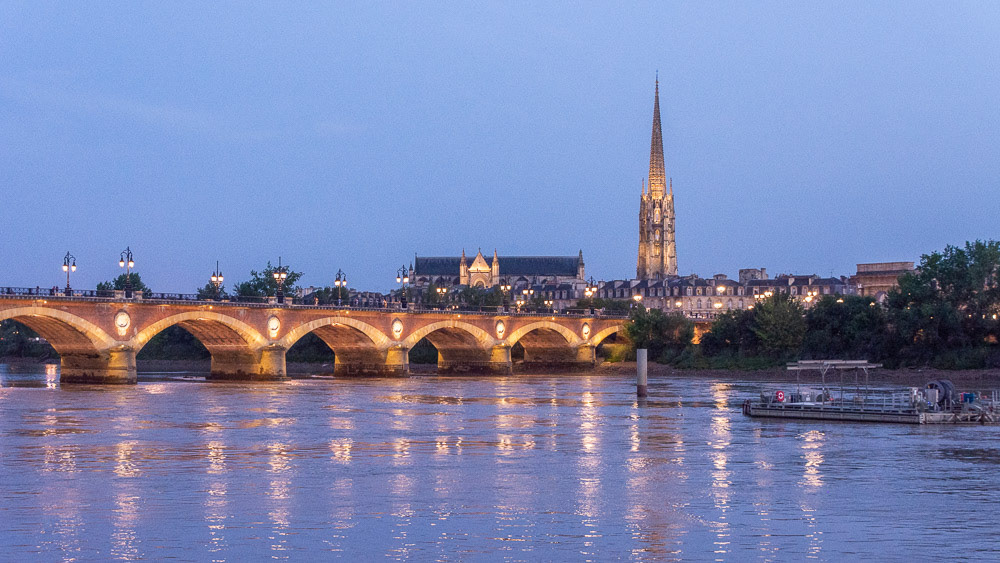
Pont de Pierre with Fleche St Michel in the background.

Bordeaux waterfront lights reflected in La Garonne.

Porte Cailhau's peaked roofline above the terraced buildings fronting Quai Richelieau, alongside La Garrone.
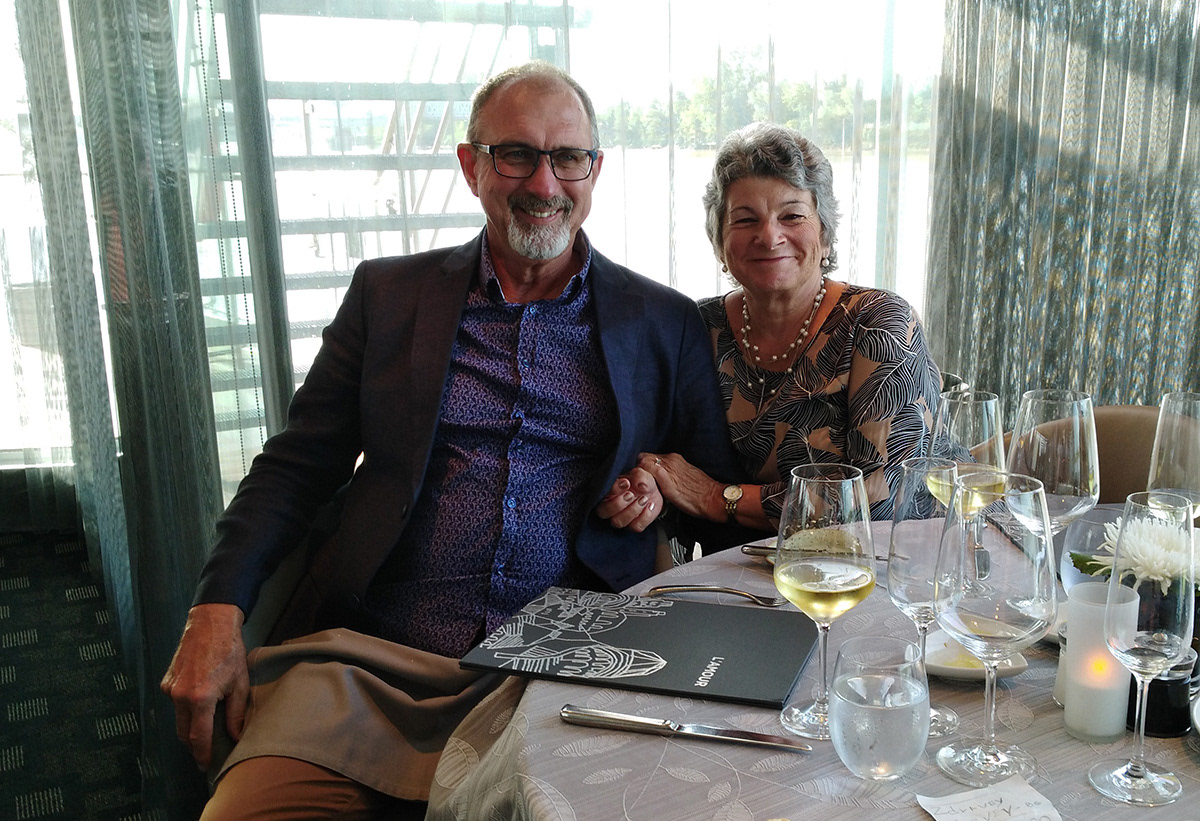
Fine dining as we cruise the river Gironde.
Day 8 - A visit to Cognac, a commune in the Charente Department of south-western France.
..... and yes, we start off the day with a sample of the famous local drop of the same name.

Remy Martin - the surrounding buildings house vast quantities of Eaux-de-Vie, Cognac.

Climbing ivy adorns the cellar walls.
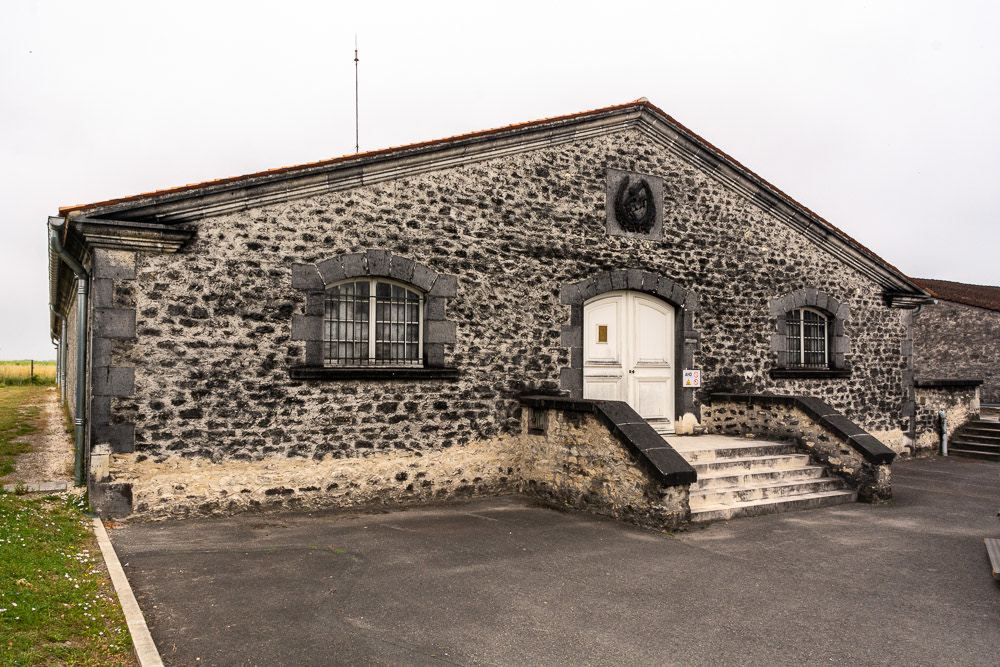
Ageing takes place in oak barrels of the Limousin type, during which the alcohol evaporates (the angels' share) and blackens the walls of the cellars.
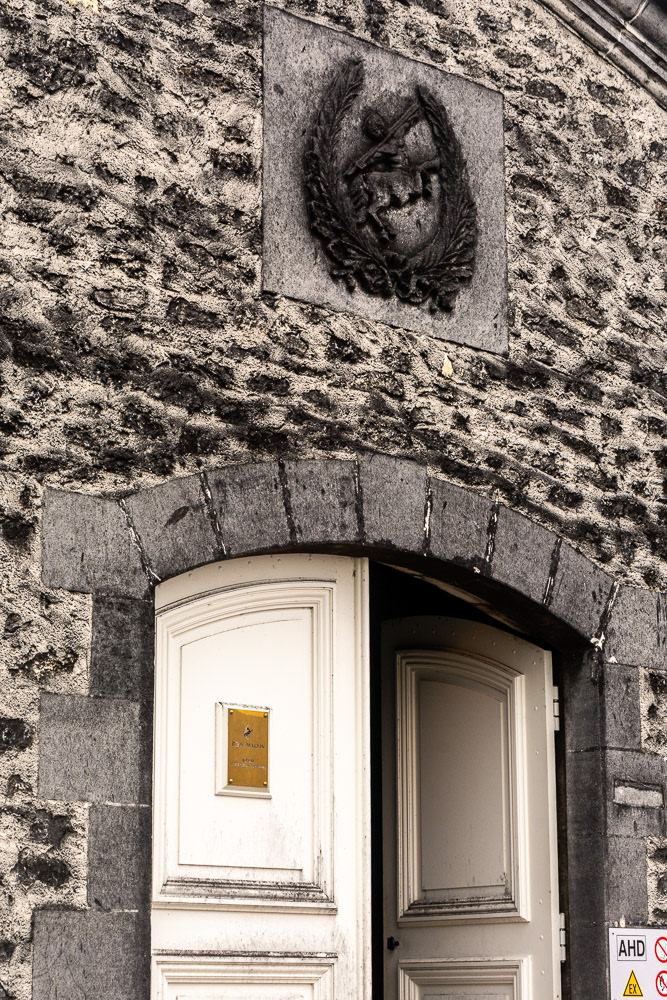
Rem Martin logo, the centaur, a mythological creature representing Sagittarius, Martin's own zodiac sign. Inside are barrells of eaux-de-vie, some over 100yrs old from which their signature Louis XIII Cognac is blended.

We get to sample the VSOP accompanyment - Foie Gras; and an XO accompanyment -Passionfruit Macarons with Dark Chocolate centre, yum.......!
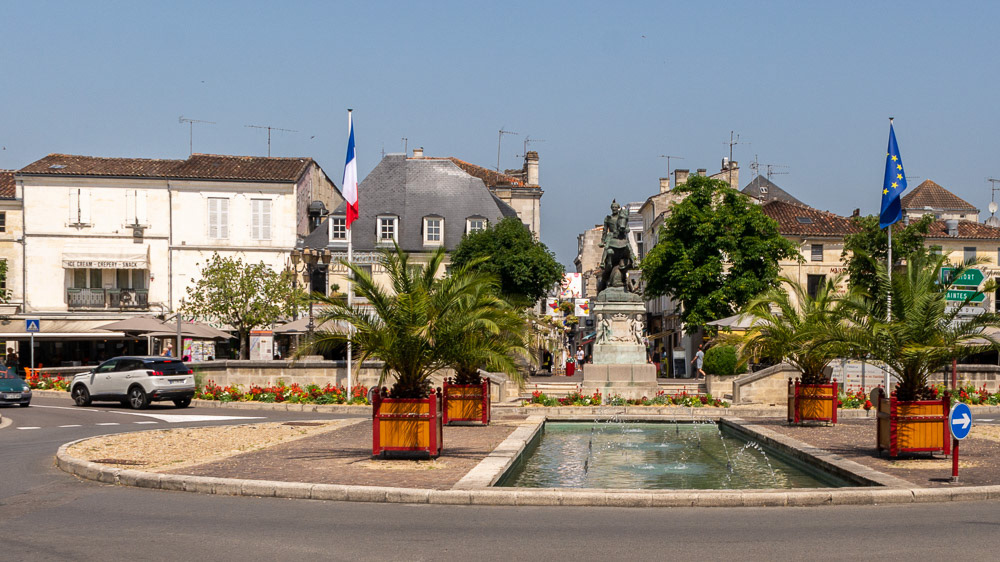
Victor Hugo statue in Place Francois Premier from Avenue Victor Hugo.

Le Coq Dór - Our venue for lunch in the old town centre.

Eglise St Ledger nestled amongst the buildings of the old town.
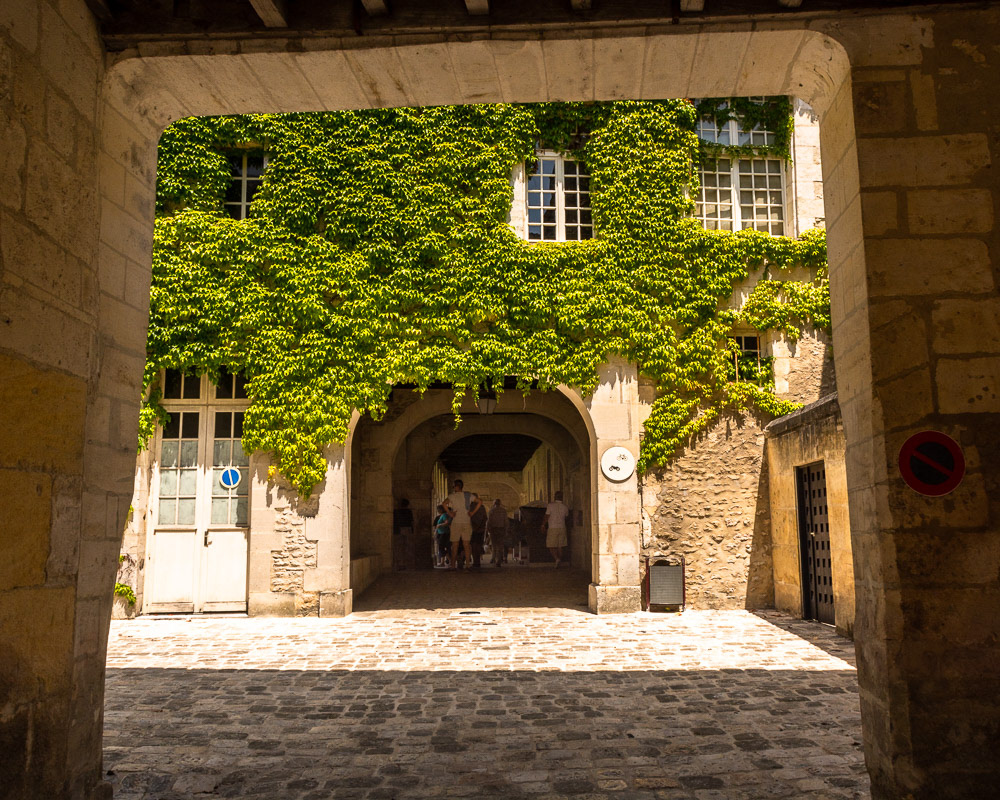
Ivy covered ardhways leading into the Priory of Saint Leger Cloisters.
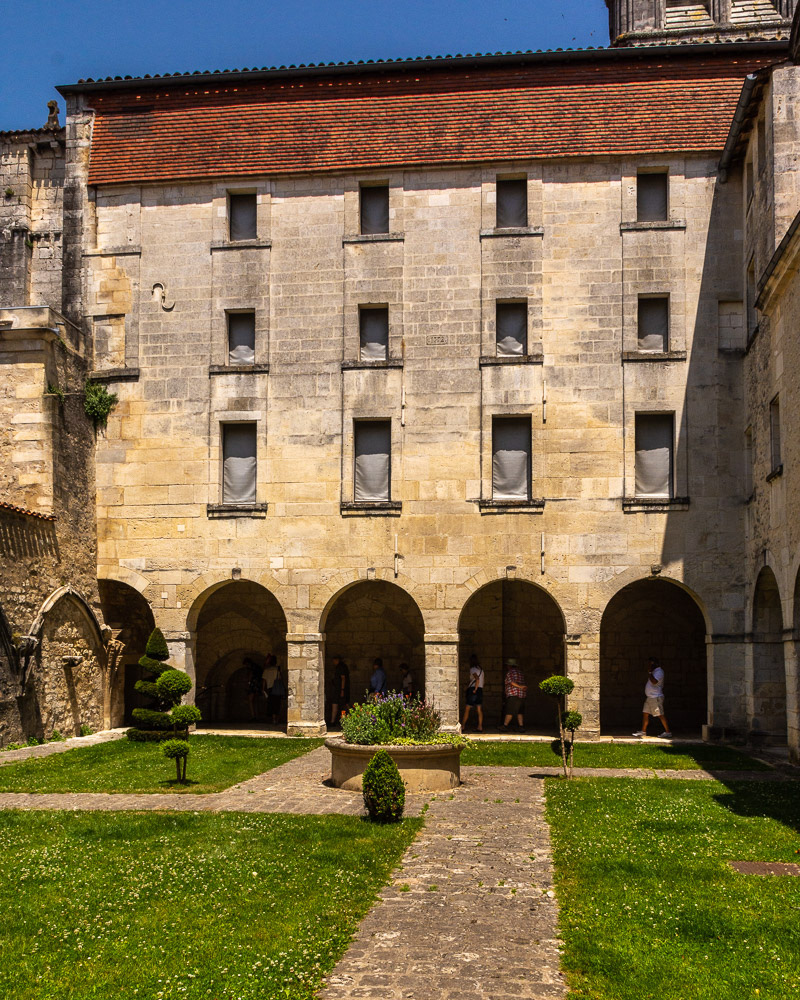
The courtyard leading into the Priory of Saint Leger Cloisters.
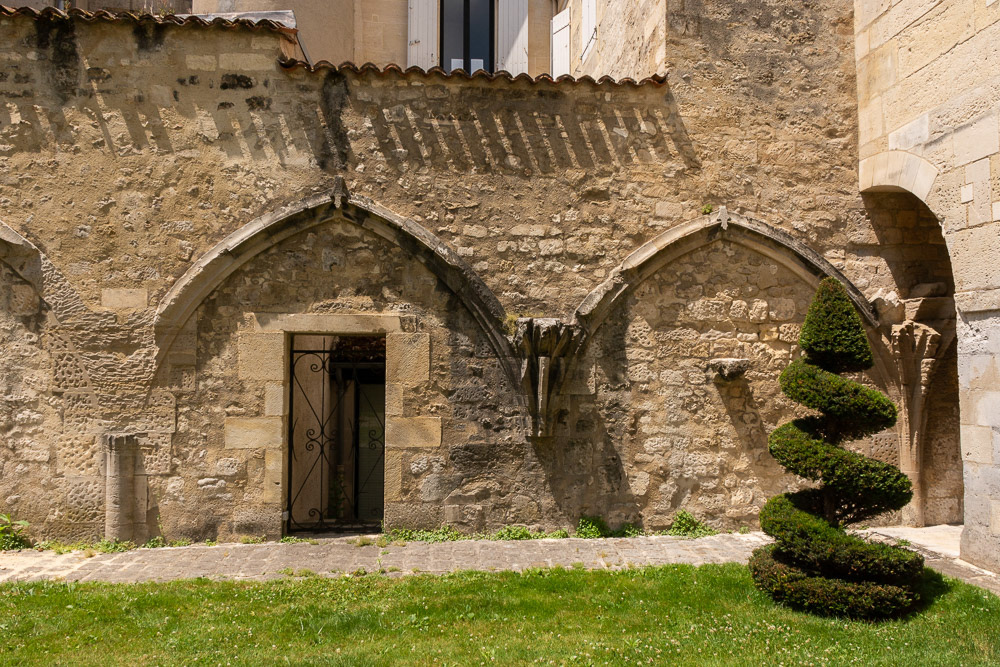
Topiary with a twist in the Cloister of Eglise St Leger.
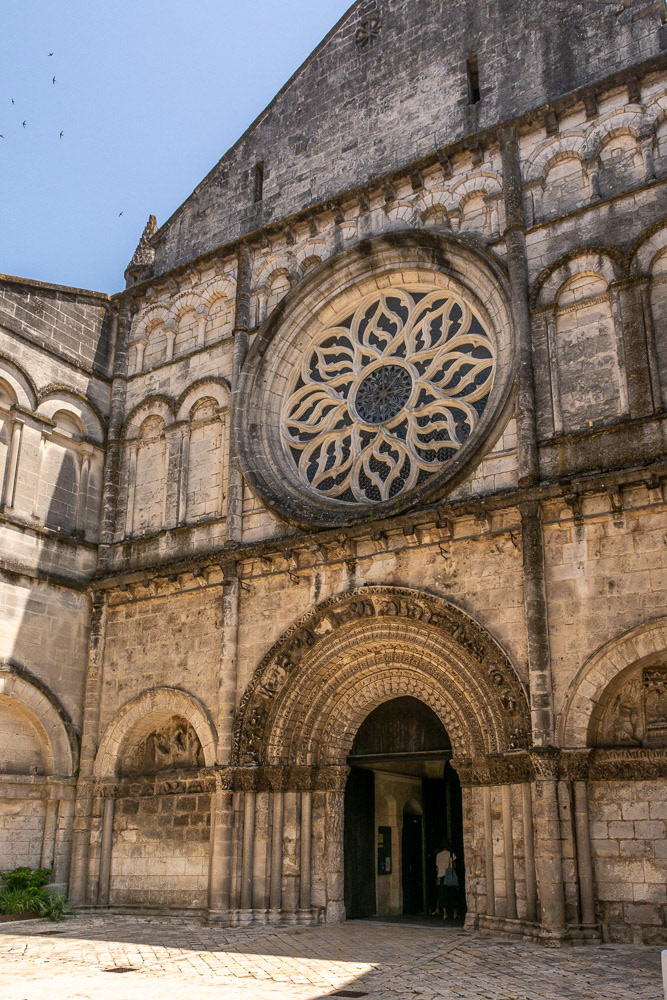
The main entrance to Eglise Saint Leger - a combination of Romanesque and Gothic styling.
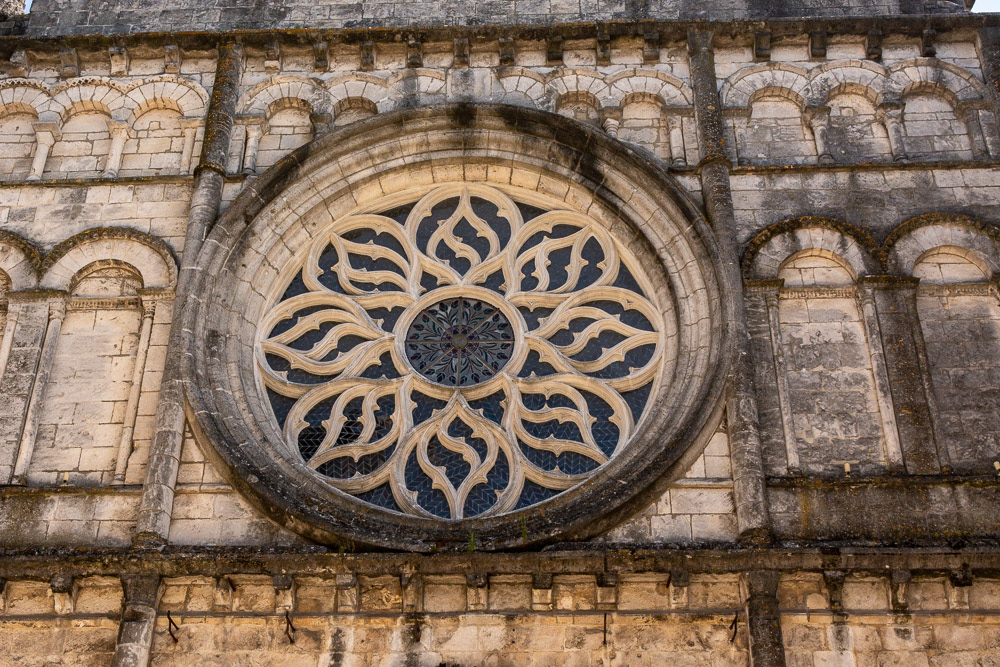
The Rose Window above the main entrance to Eglise Saint Leger.
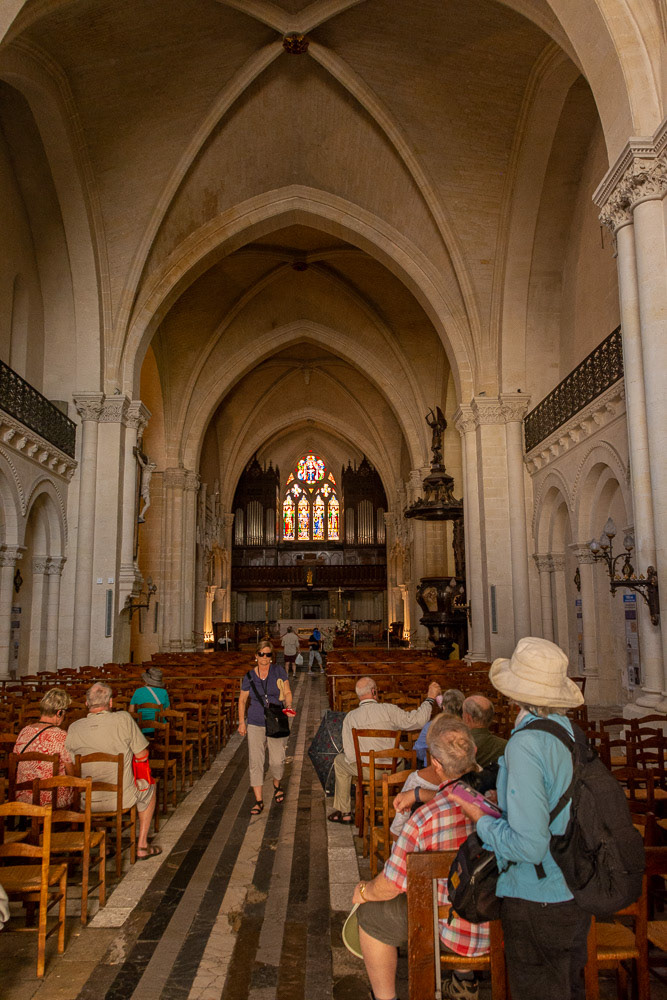
The Gothic interior Eglise St Leger.
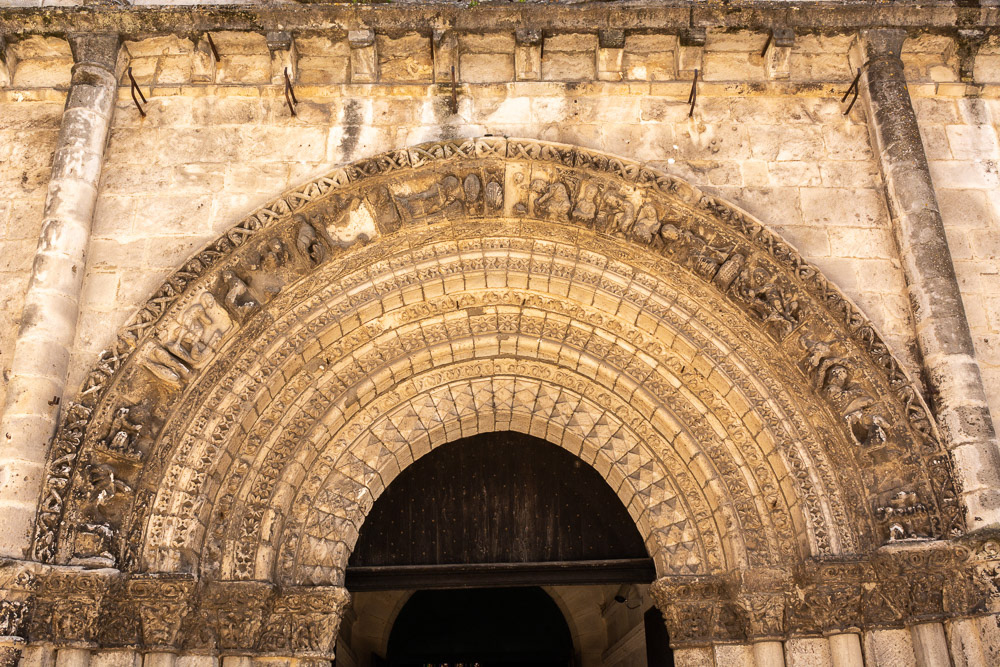
Intriguing carvings above the arched doorway, supposedly representing occupations of the regions parishoners.

Man's best friend waiting for a handout at Le Cafe.

La Clocher de Saint Leger dominates the streets of the old town.
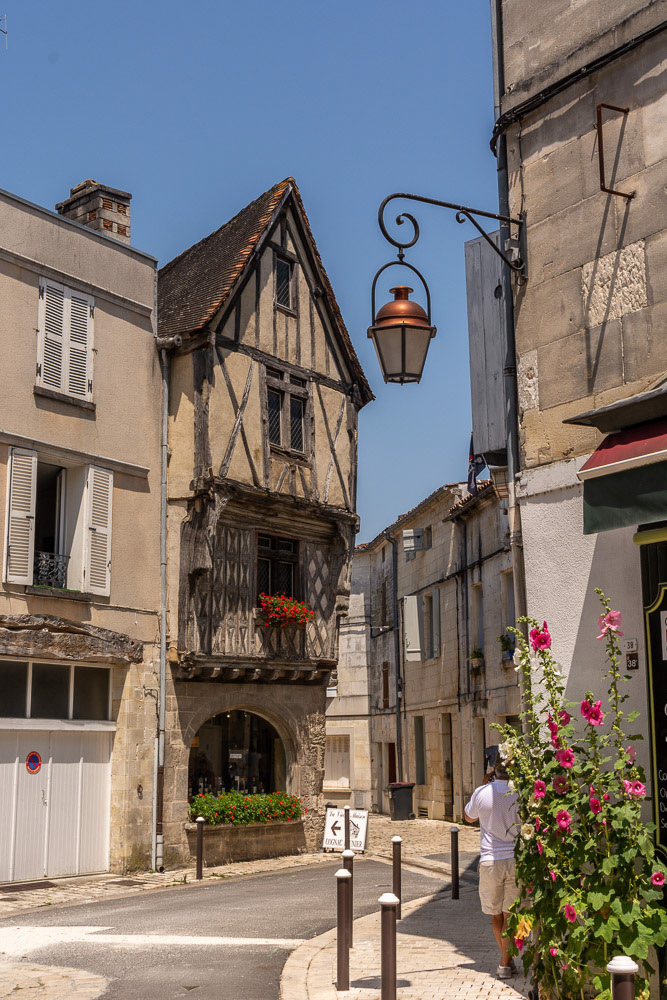
The oldest house in Cognac - Maison de la Luitenance.
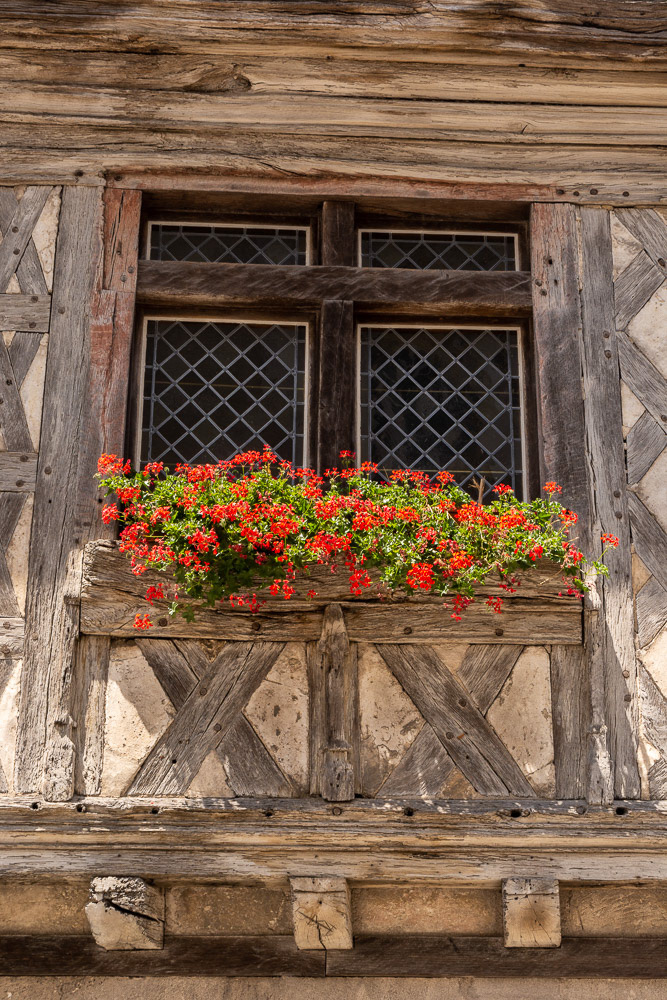
Maison de la Luitenance - striking window box dispaly of gerainium.
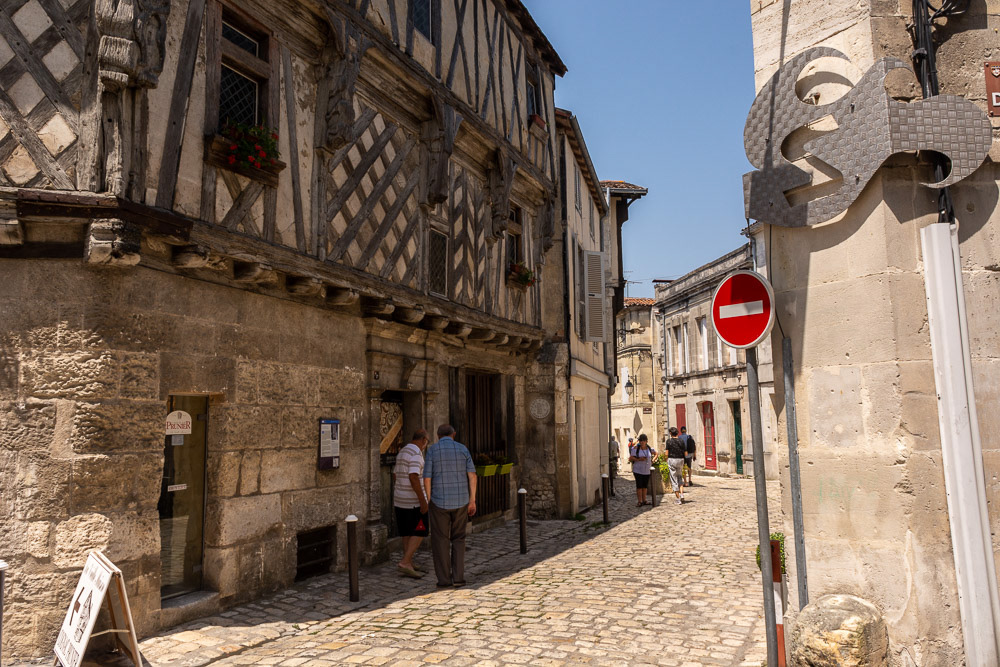
The oldest house in Cognac - Maison de la Luitenance.
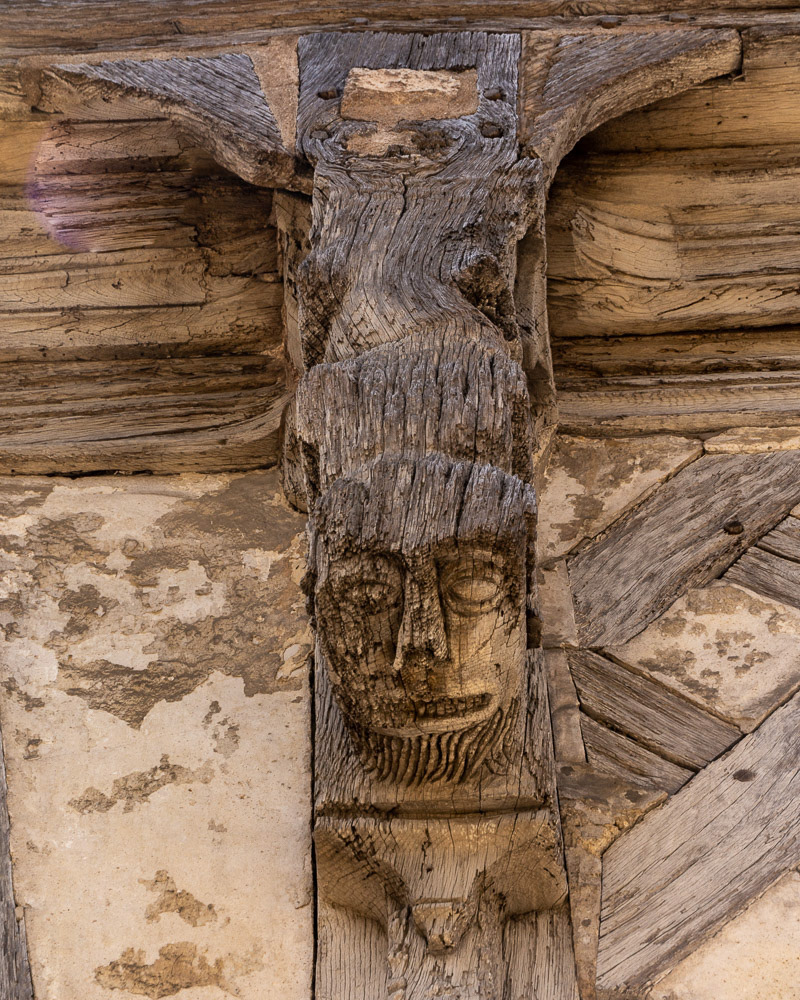
Timber sculptures decorate the exterior of the Lieutenant's house.
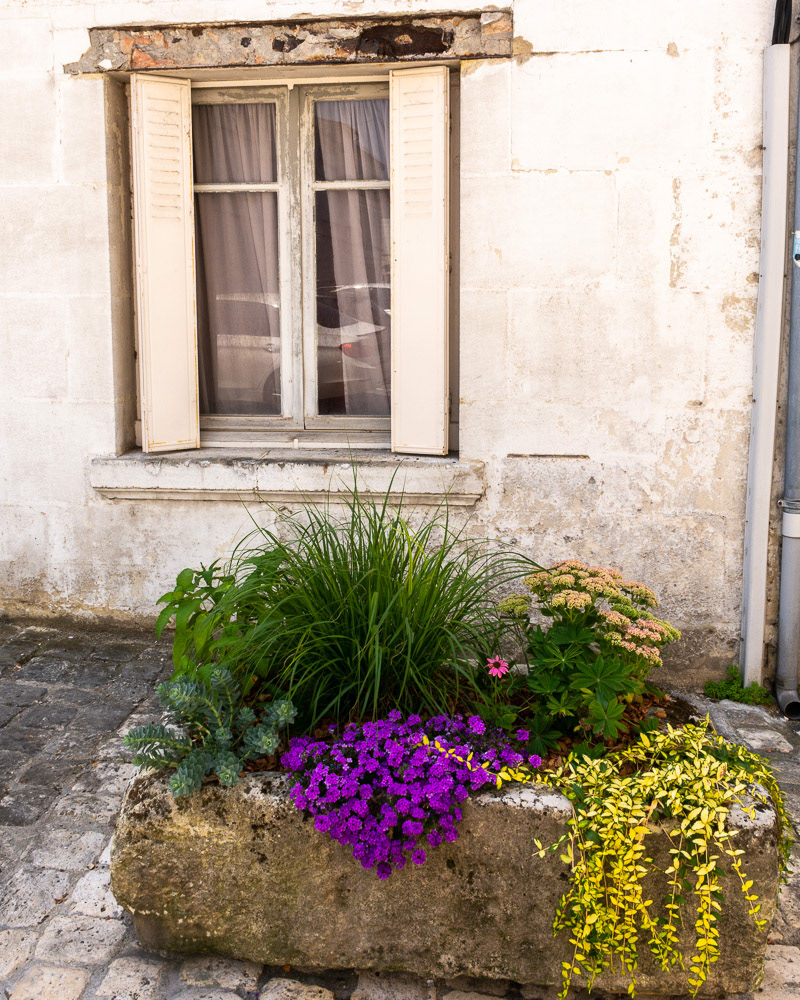
Planters add a pop of colour in the paved back streets of the old town area.
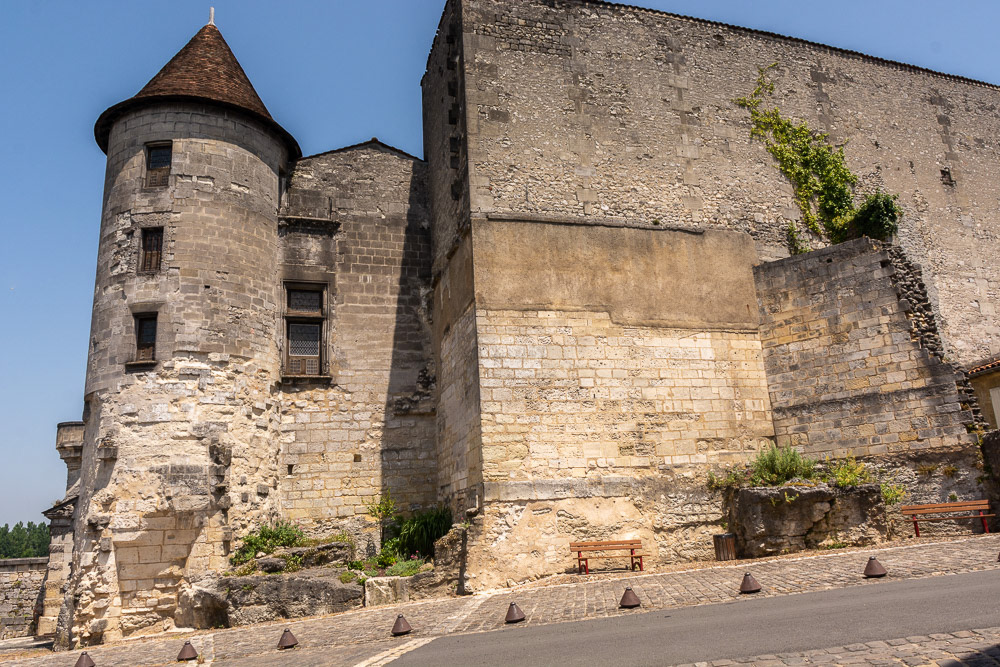
The stark stone walls of Chateau de Cognac.

Chateau de Cognac.
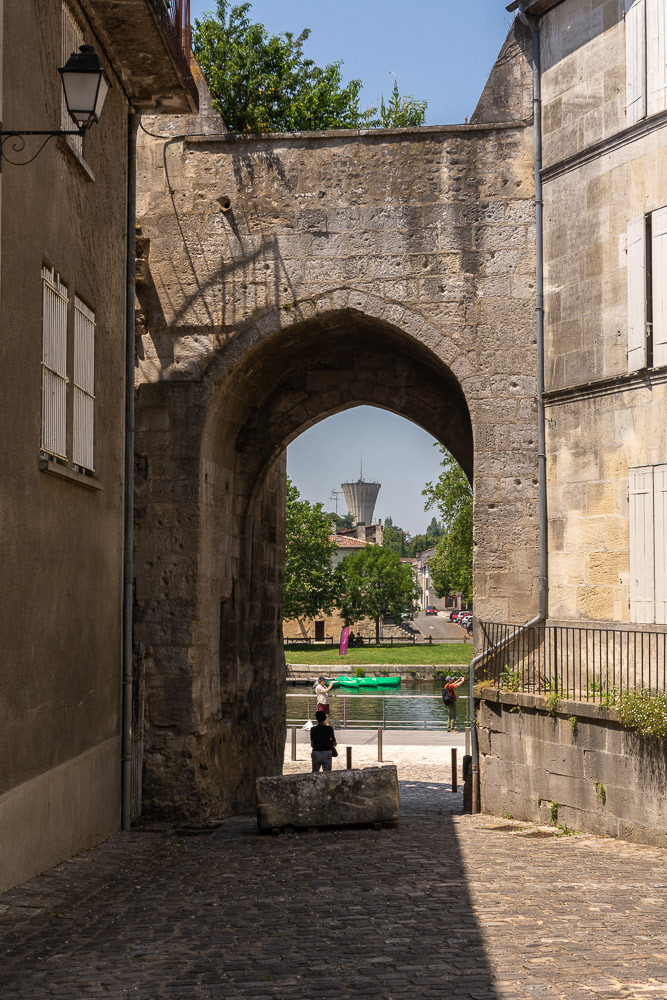
Looking through Porte Saint Jaques to the Charente River and beyond.
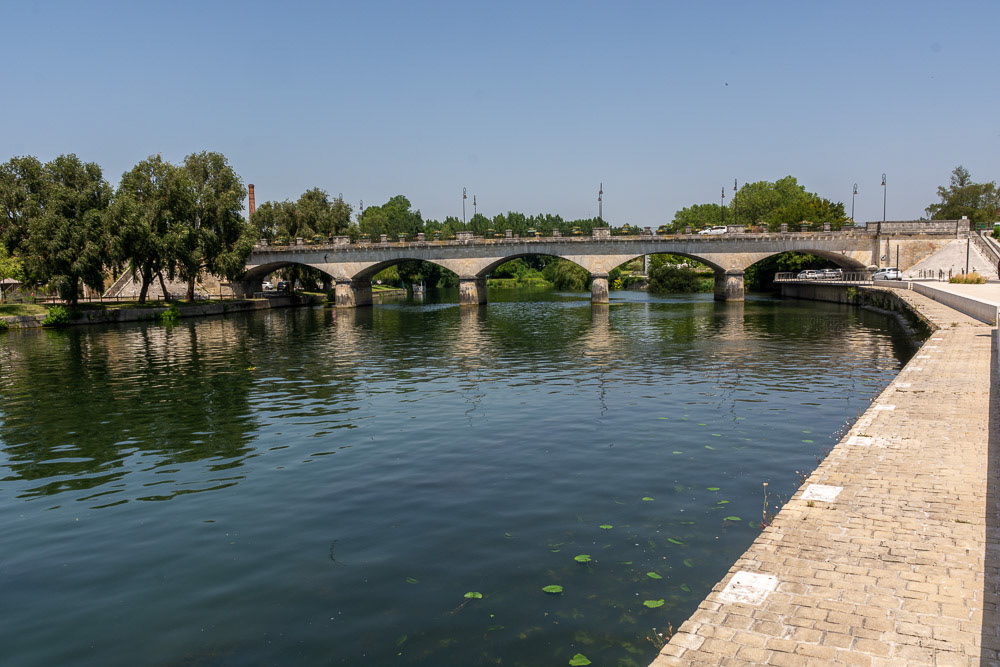
River Charente.
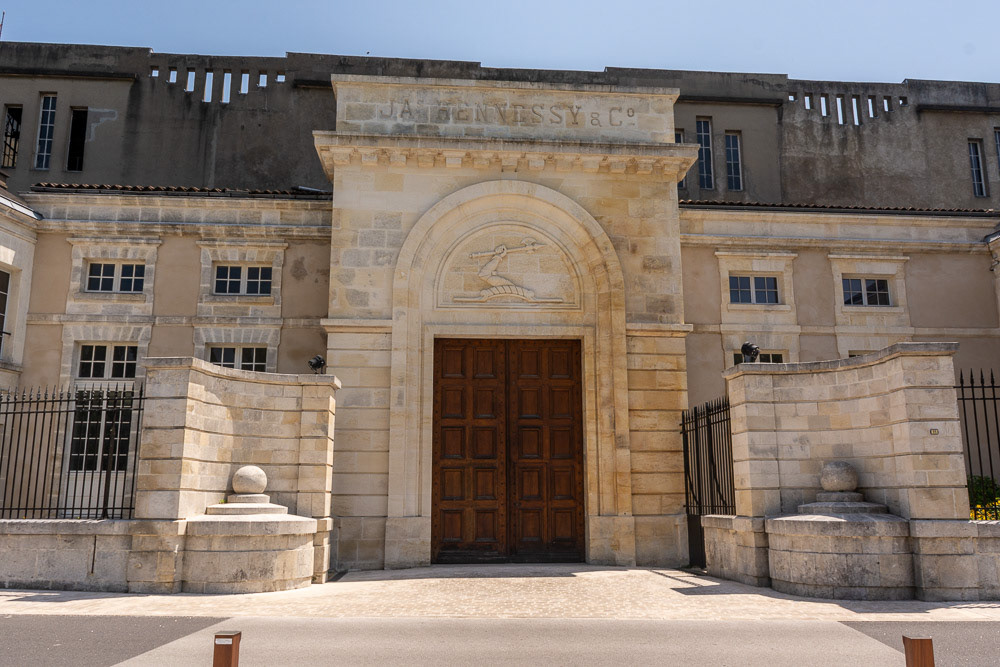
Hennessy - Another famous name of the region.
Day 9 - Blaye our final port of call to visit the historic UNESCO site of the Citadel de Vauban 1689.
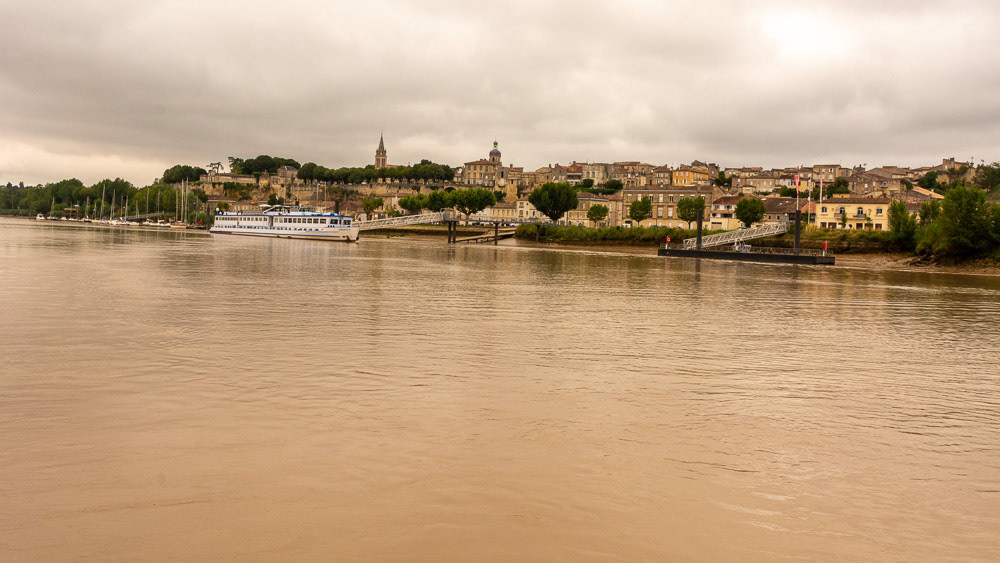
The Village of Bourg on the right banks of the Dordogne River as it meets the Gironde Estuary.

A house with a distinctive Moorish architectural style on the upper terraces.

Campanile of the Jurade mansion is a prominent landmark of Bourg.
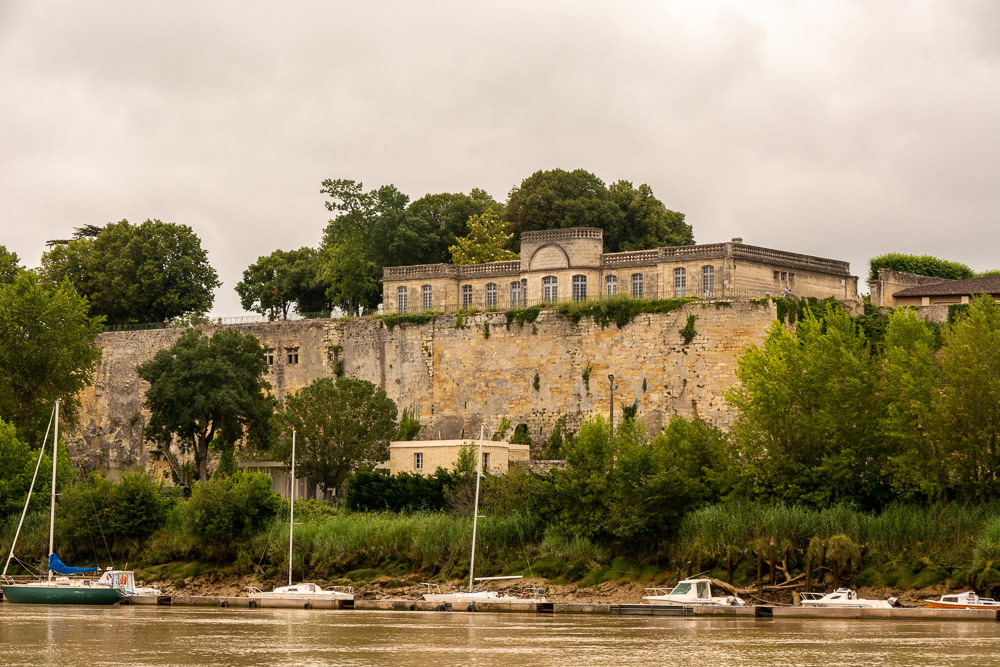
The citadel castle, with its horse-drawn carriage museum "Au temps des calèches", French formal gardens and terrace overlooks the lower town and river.
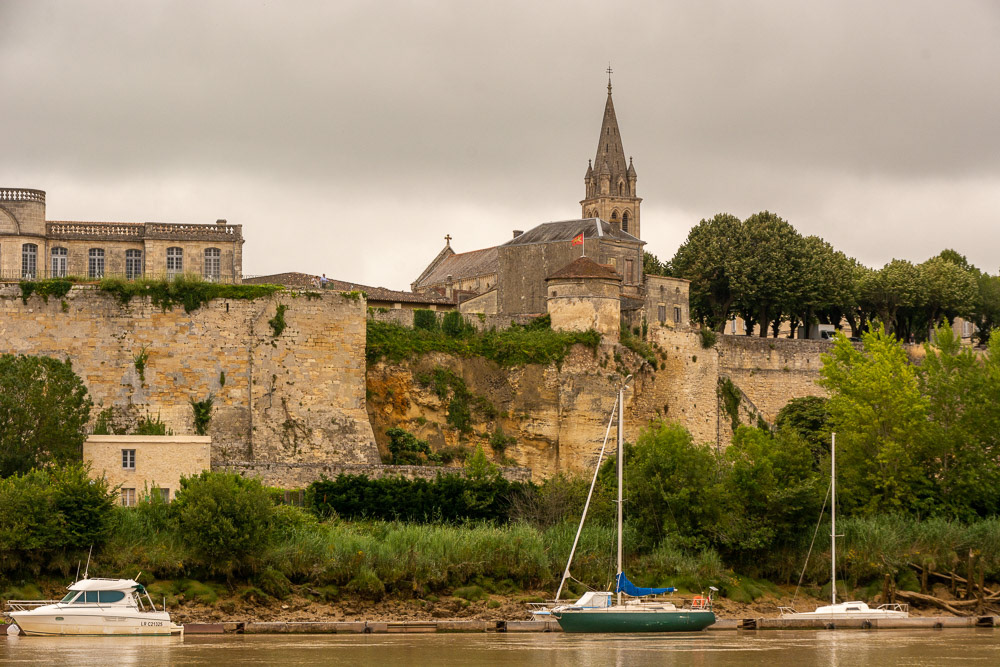
Saint-Geronce Church and belltower in the Citadel overlooking the lower town and river.

Vineyards on the Banks of La Gironde.
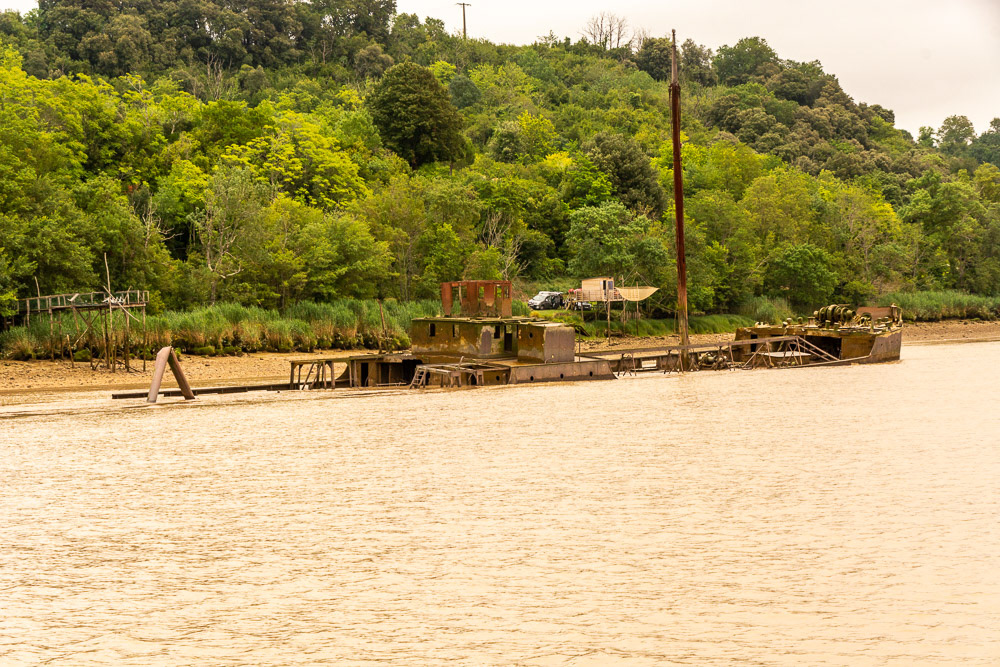
One of many shipwercks along the banks of the Gironde Estuary.
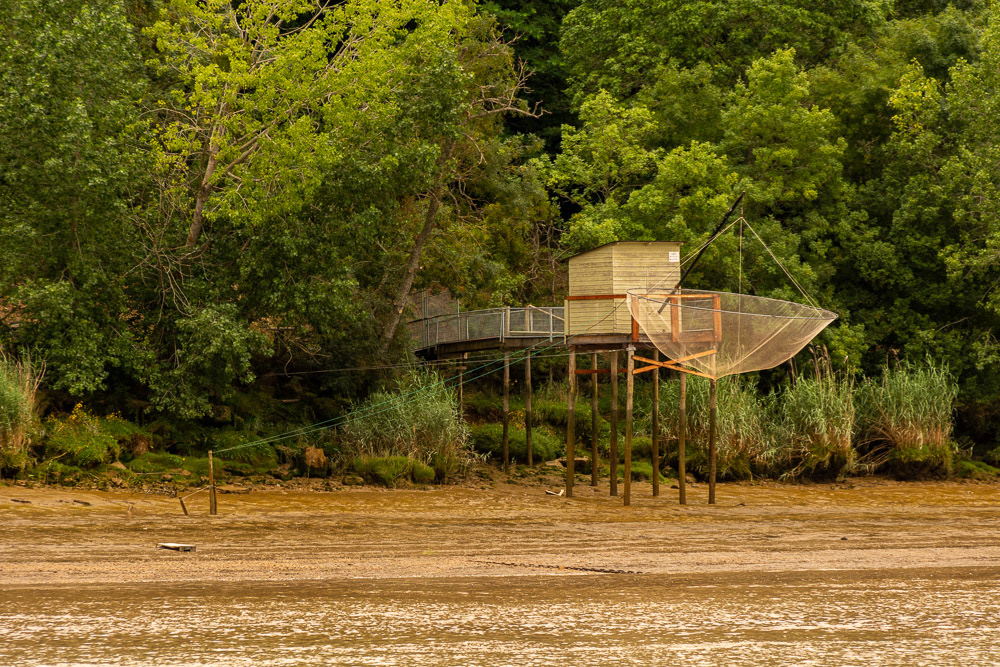
One of many Carrelets, wooden fishing huts built on stilts with their pulley operated nets.
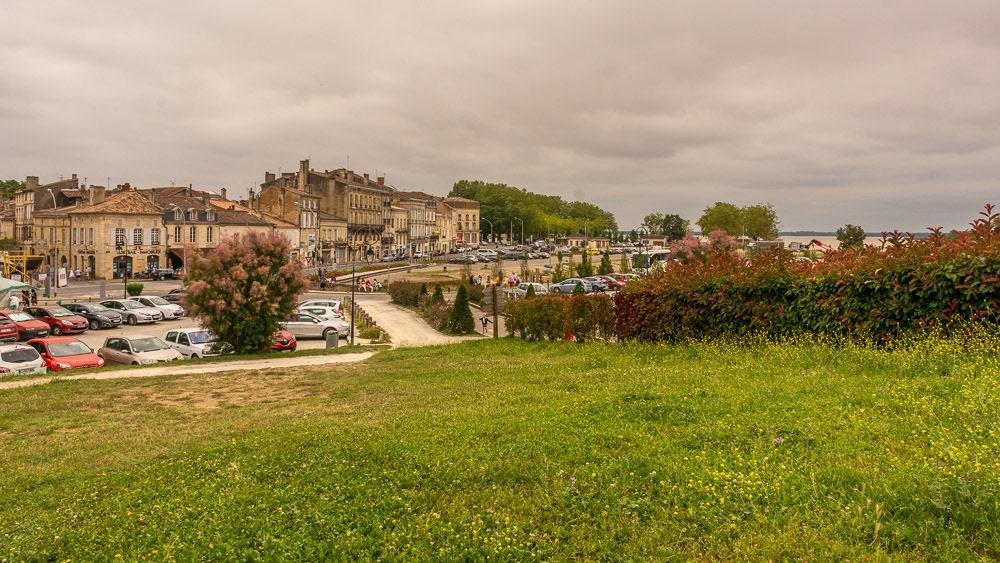
The town of Blaye adjacent the Citadel.
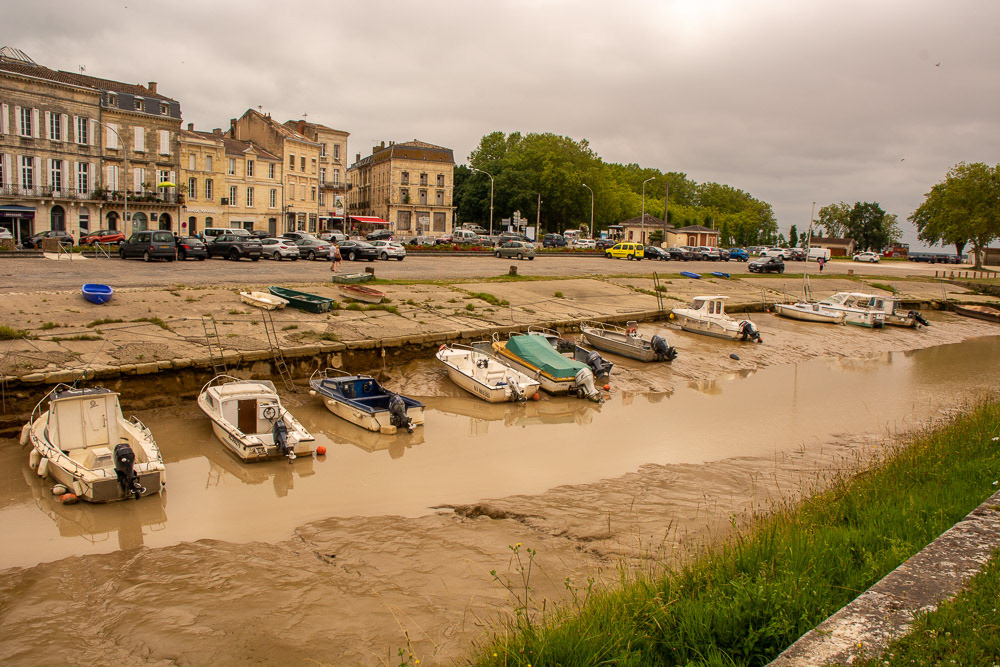
Grounded in Blaye - the Gironde Esturary is subject to a hugh tidal range consequently these boats are subject to the variances of the tide in this small creek.
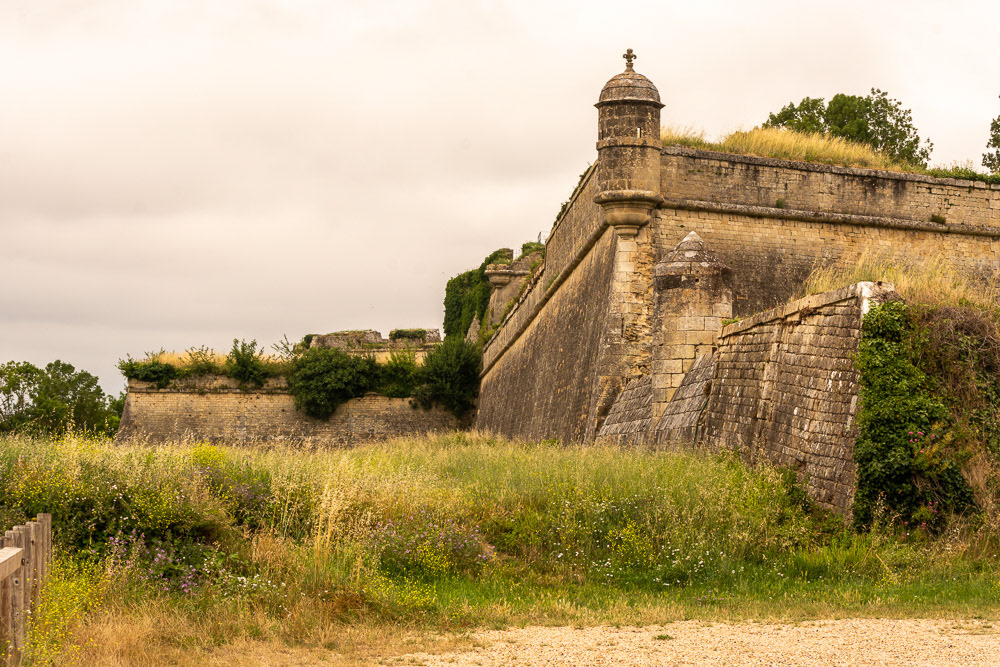
Fortified walls of Blaye Citadel - one of the fortifications that together with Fort Medoc and Fort Paté formed a defense system built on the Gironde estuary for the protection of Bordeaux.
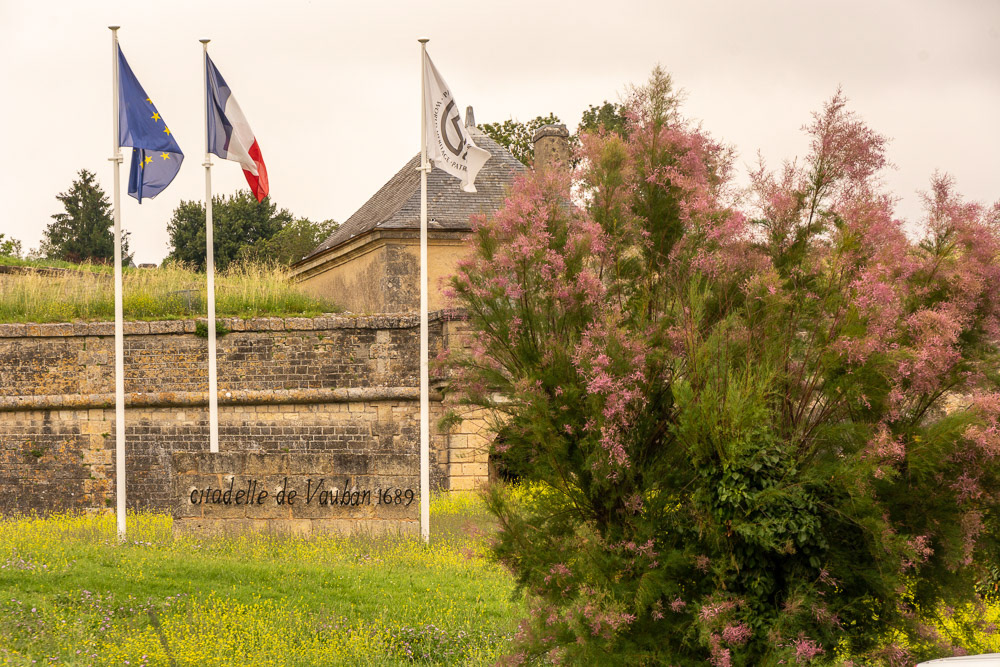
citadelle de Vauban 1689 - Vauban was the military architect and designer of the citadel.
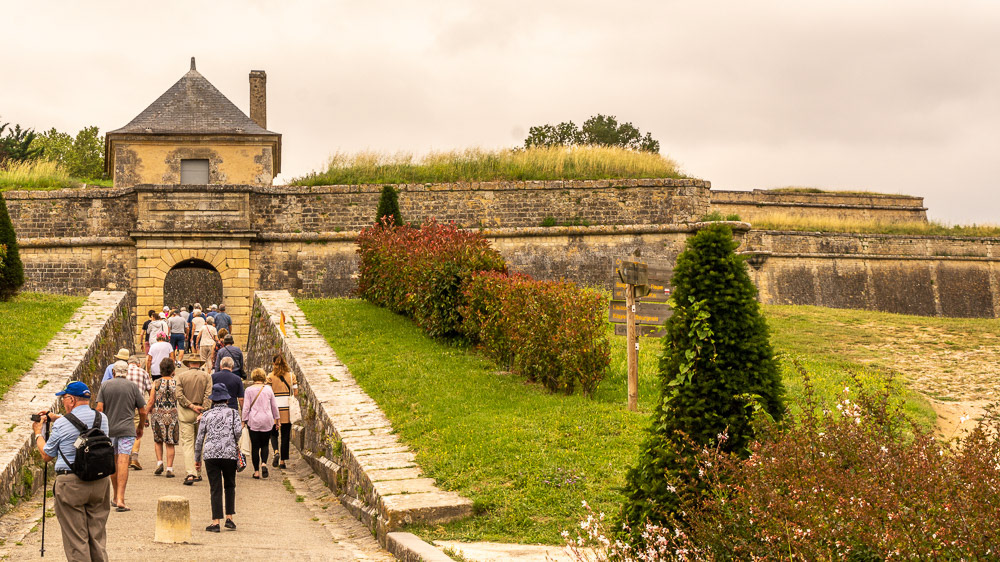
Entrance to the perimeter fortifications.
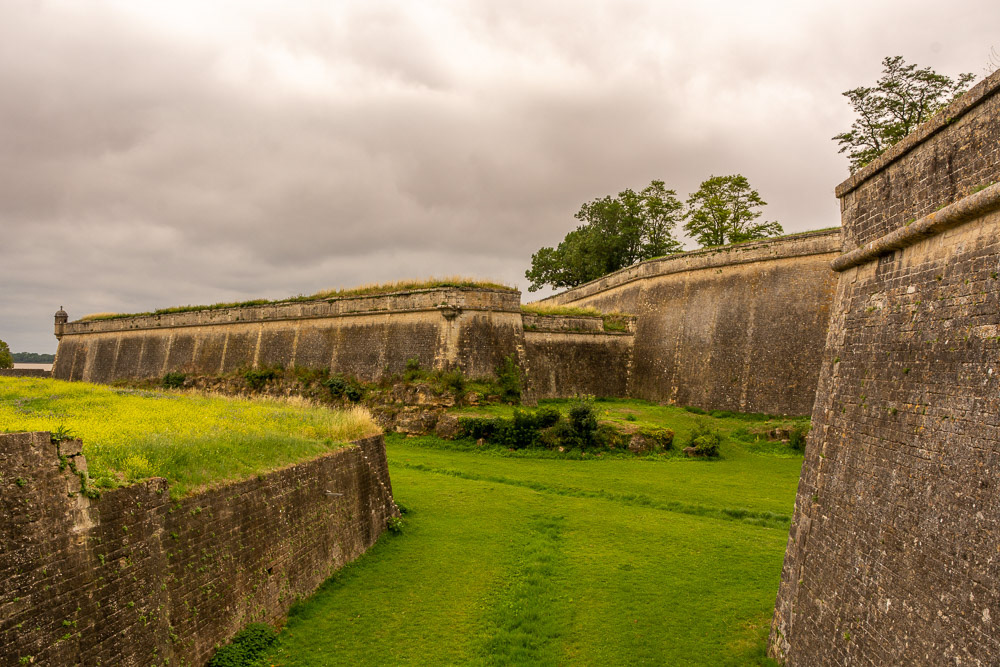
The moat and fortifications of the Citadelle de Blaye looking towards the Gironde.
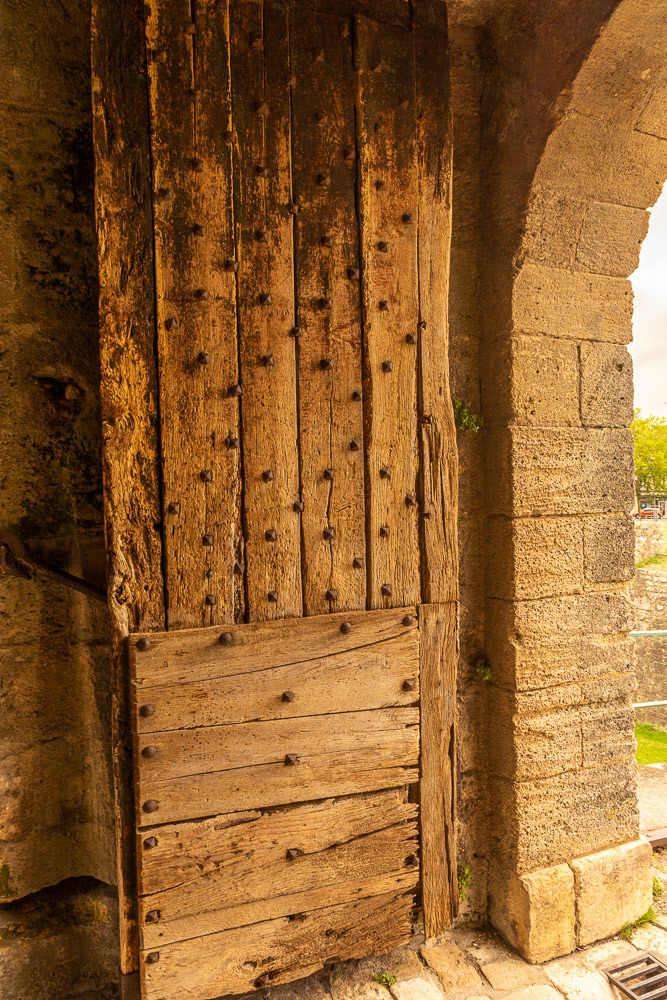
Heavily reinforced doors still used to bar entry to the Citadel.
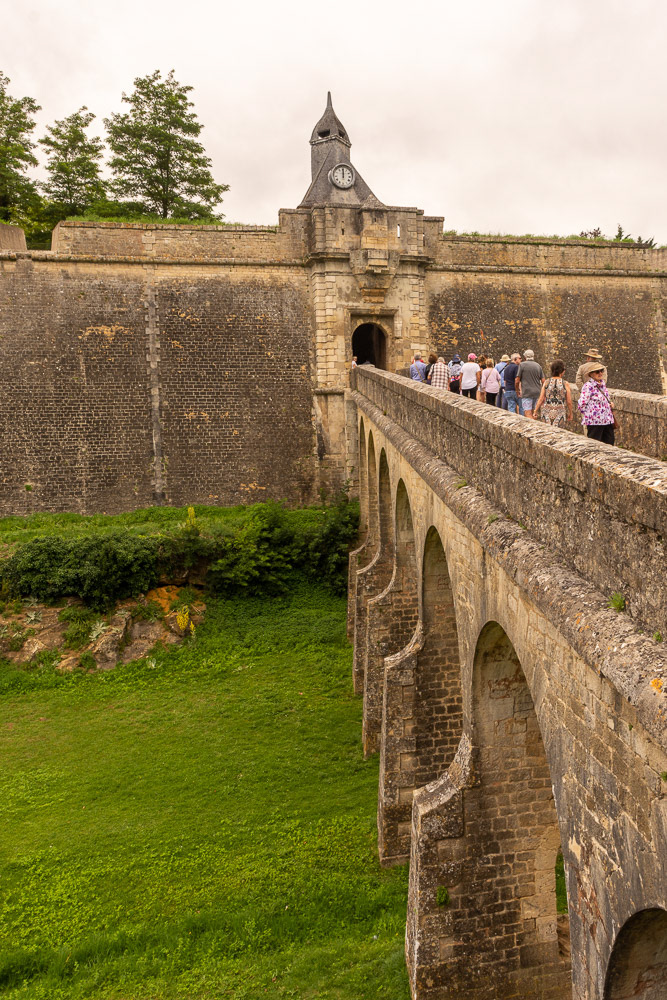
Beyond the primary fortifications a stone bridge crosses the moat to access the inner fortifications of the Citadelle de Blaye.
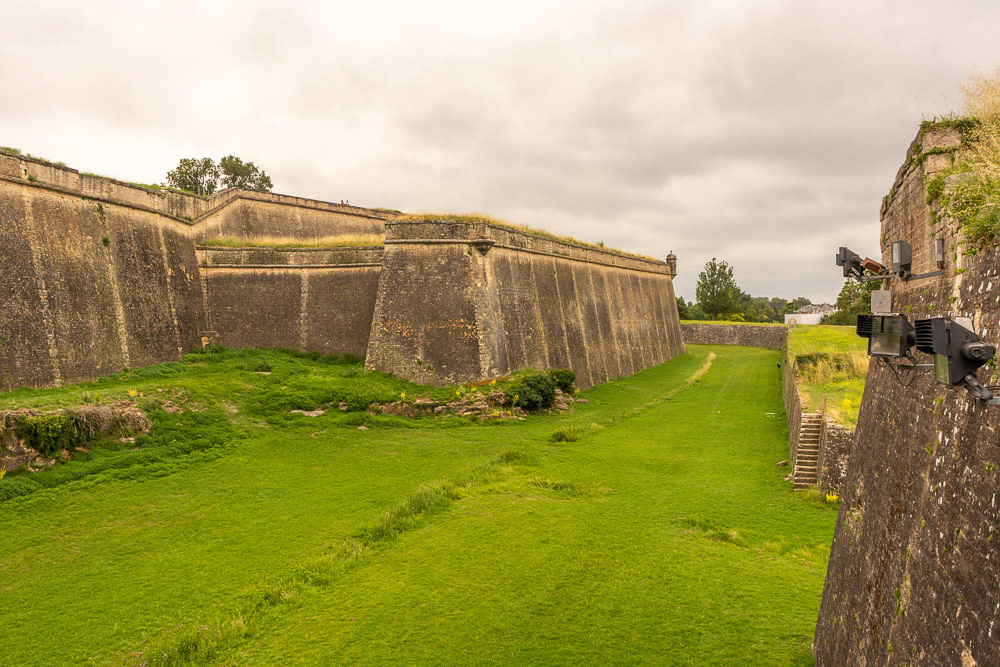
Beyond the primary fortifications a moat has to be negotiated to access the inner fortifications of the Citadelle de Blaye.
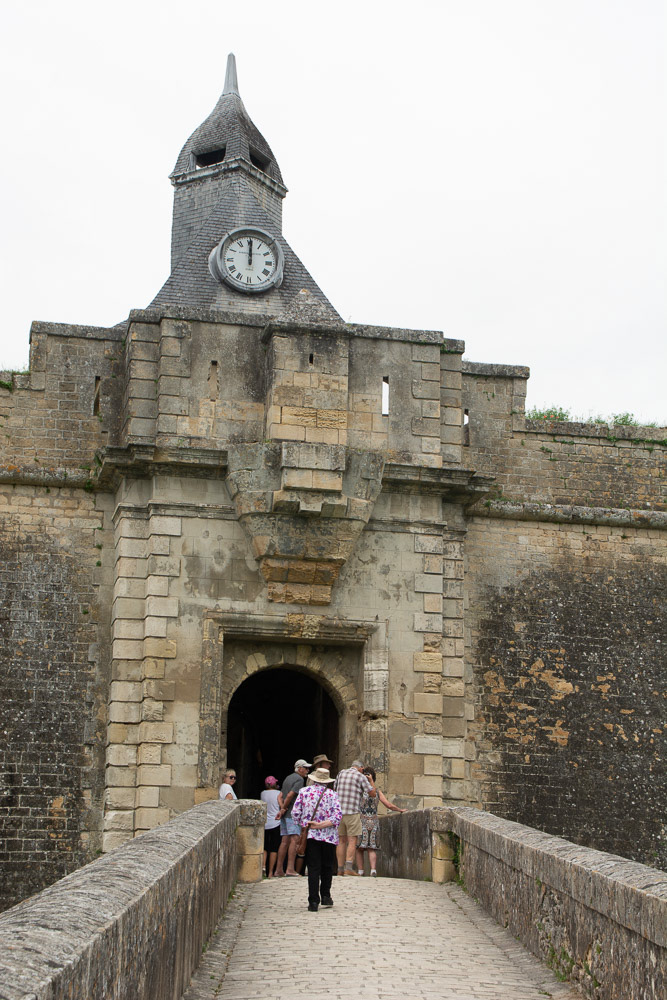
The Dauphine Gate to the Citadel.

Pved cobblestone streets through the main entry lead into the village inside the Citadel.
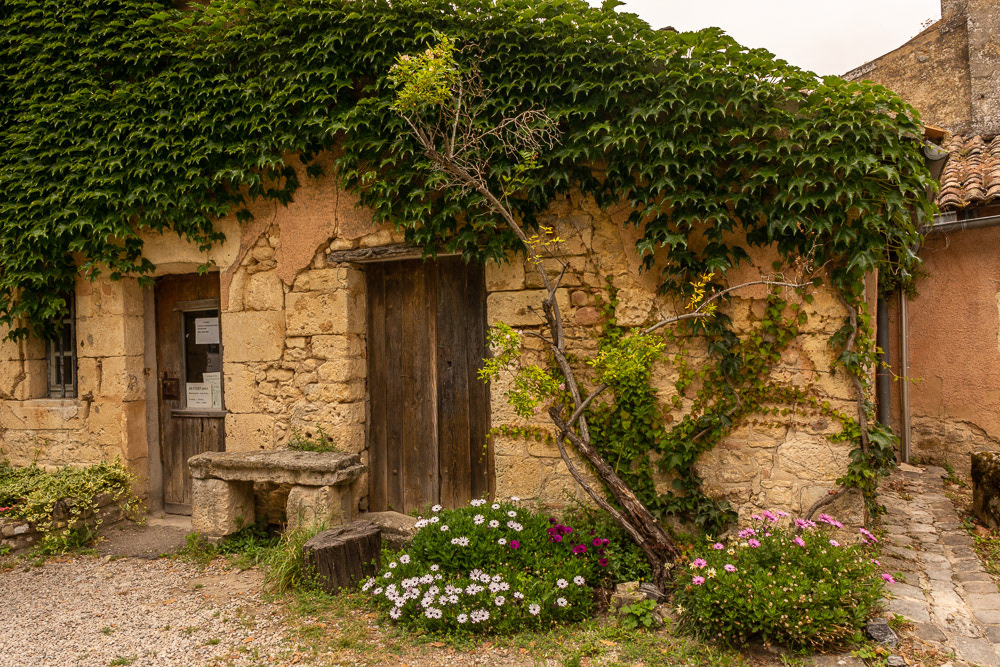
Climbing Ivy vines engulf this stone building, possibly planted by the first occupants.
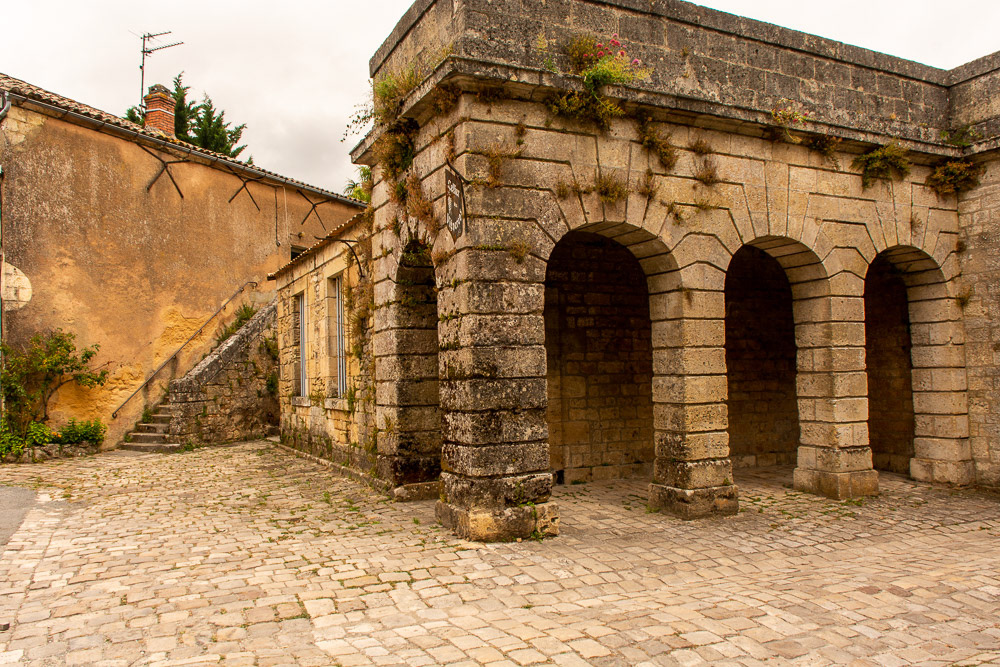
Stairs leading to the top of the Citadel's defensive walls just behind the main entry gate.

Oleander tree in full bloom.
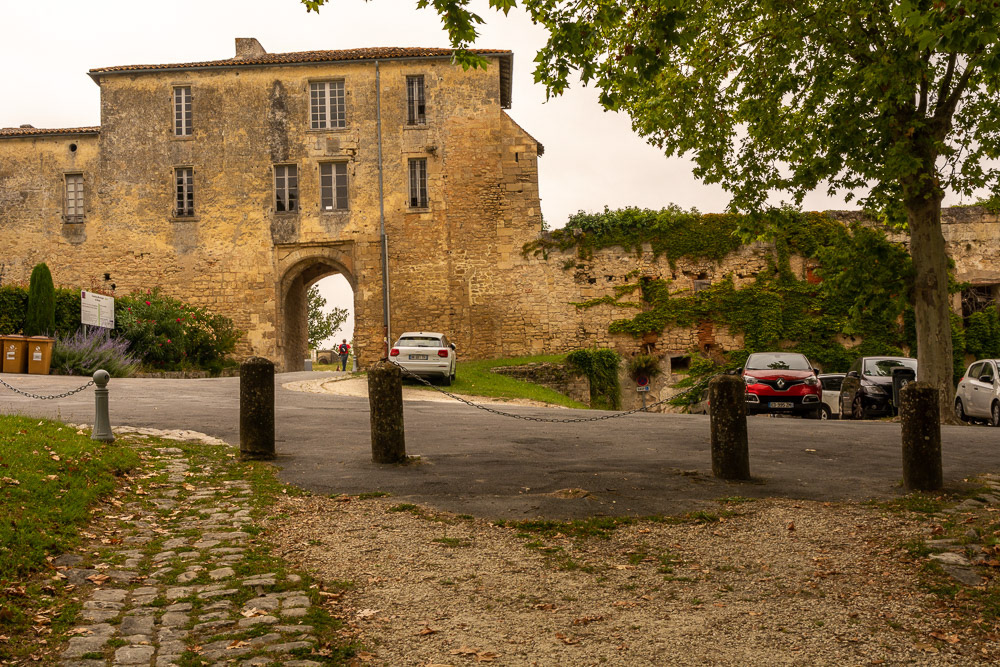
One of the western gates into the Citadel which allow vehicular access - Porte de Liverneuf.

One of the Garrison buildings behind the Royal Gate.
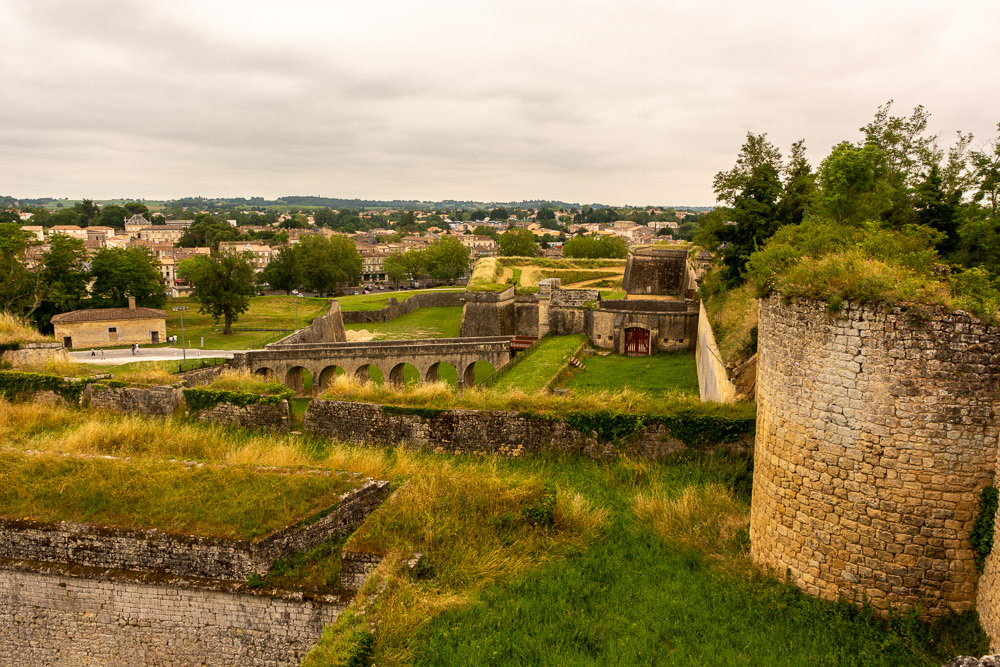
The entrance approach to the Royal Gate of the citadel Vauban de Blaye.

The Royal Gate.

Looking towards the Citadel fortifications from inside the Porte Royale.
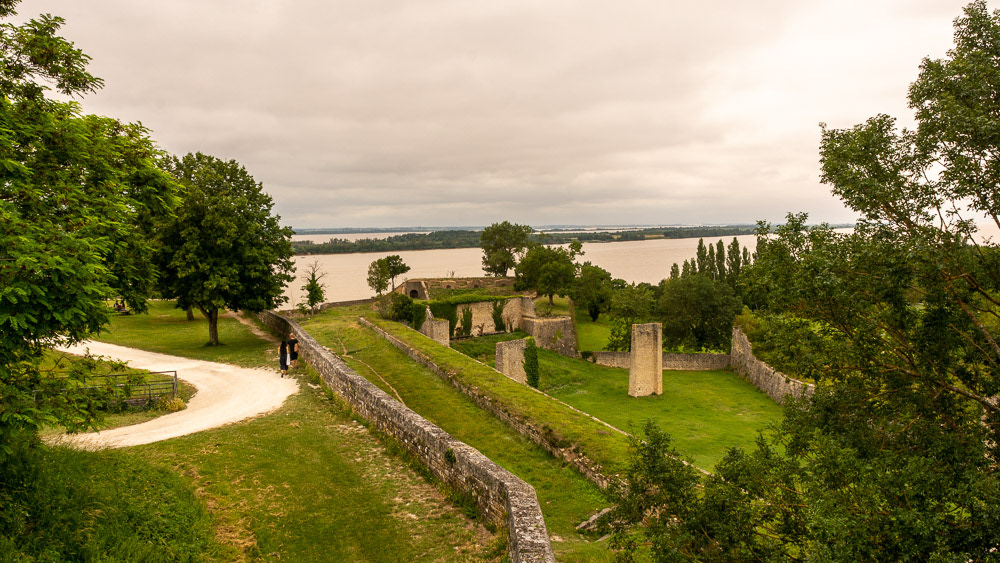
Gardens and disused magazine bunkers below the main wall with the Gironde in the background.

Overgrown ruins fenced off.
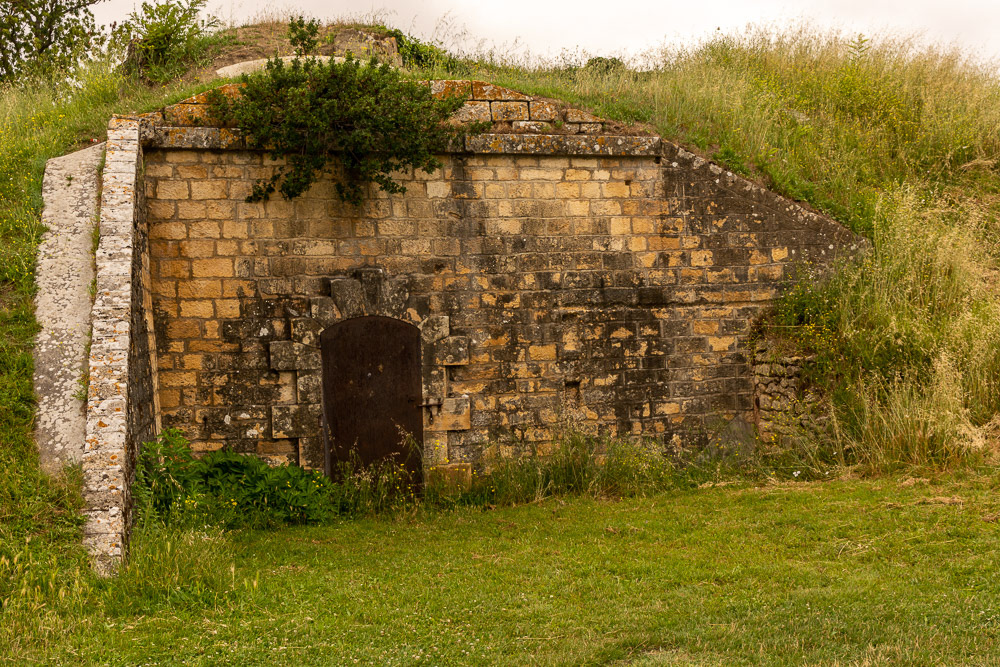
Disused entry to a munitions magazine.
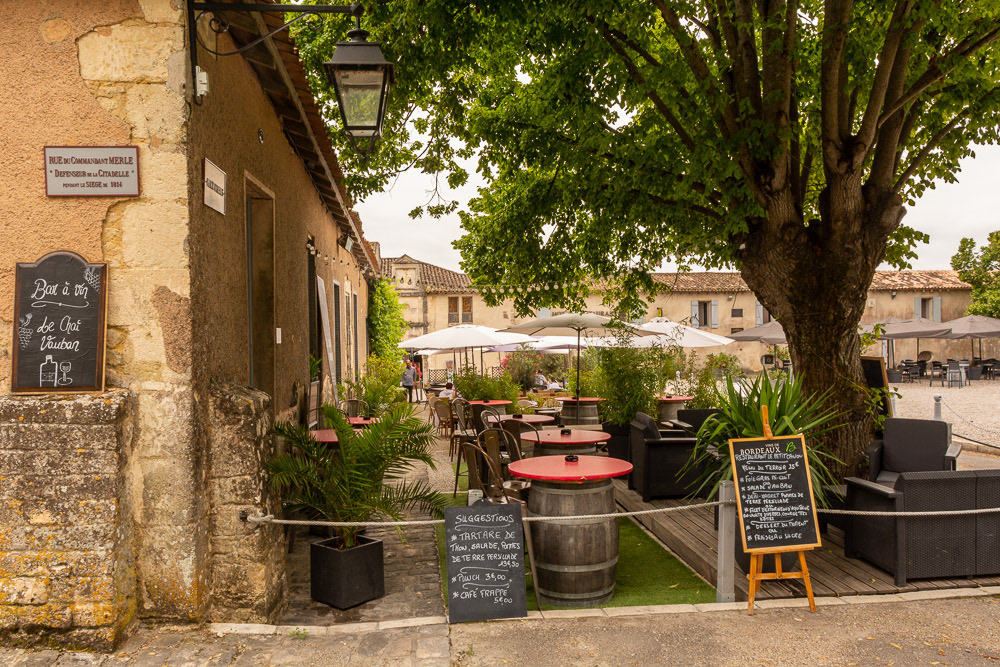
Restaurant le Petit Canon awaits ......
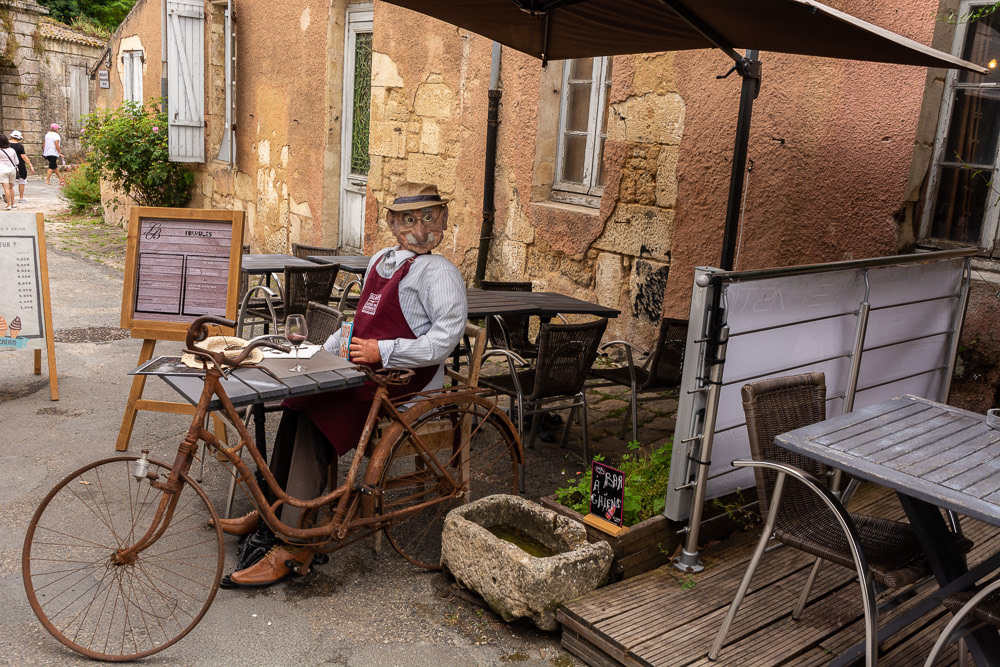
La cafe - you'd be a dummy not to eat here.
Out and about touring and the party times.........
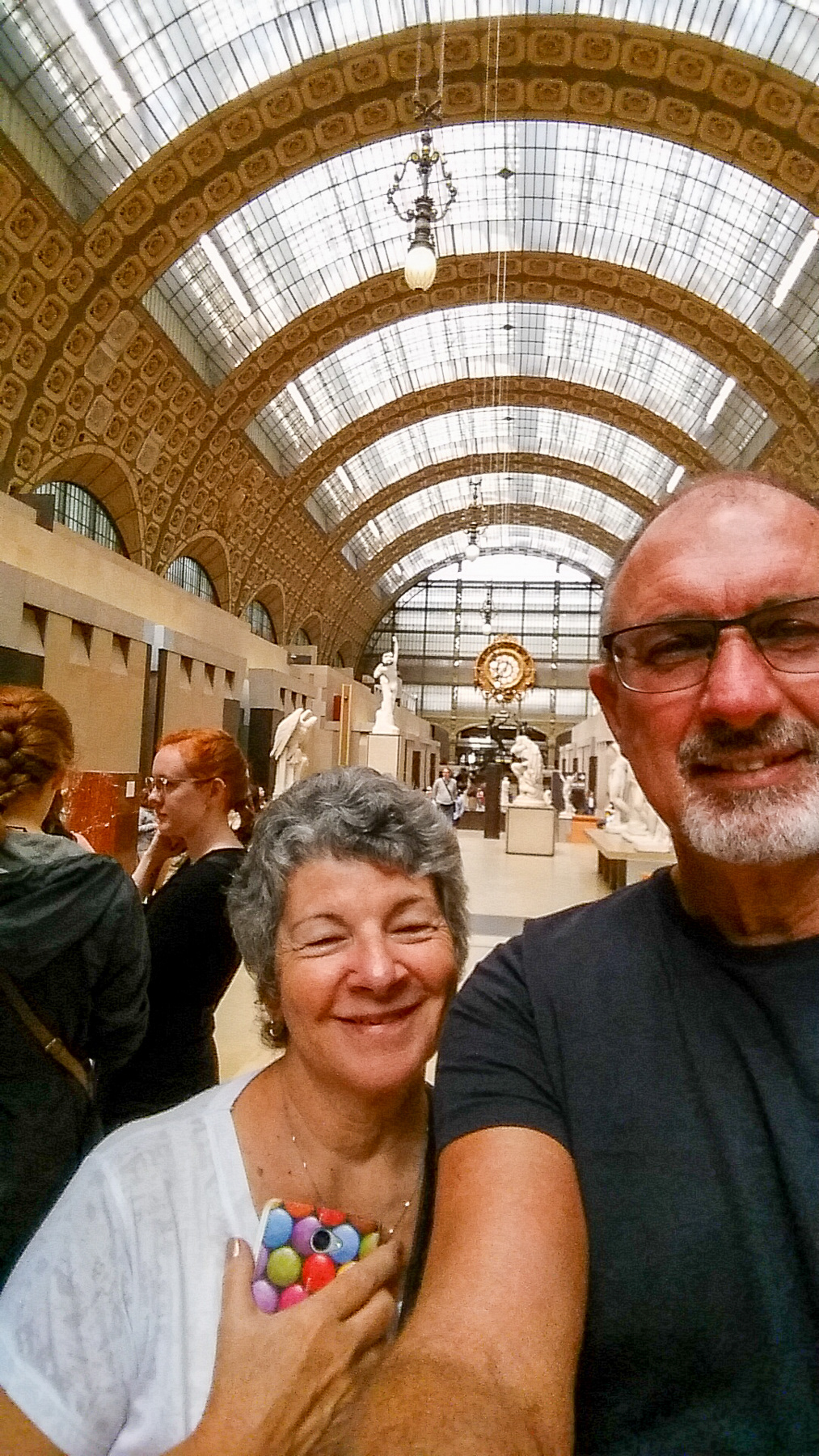
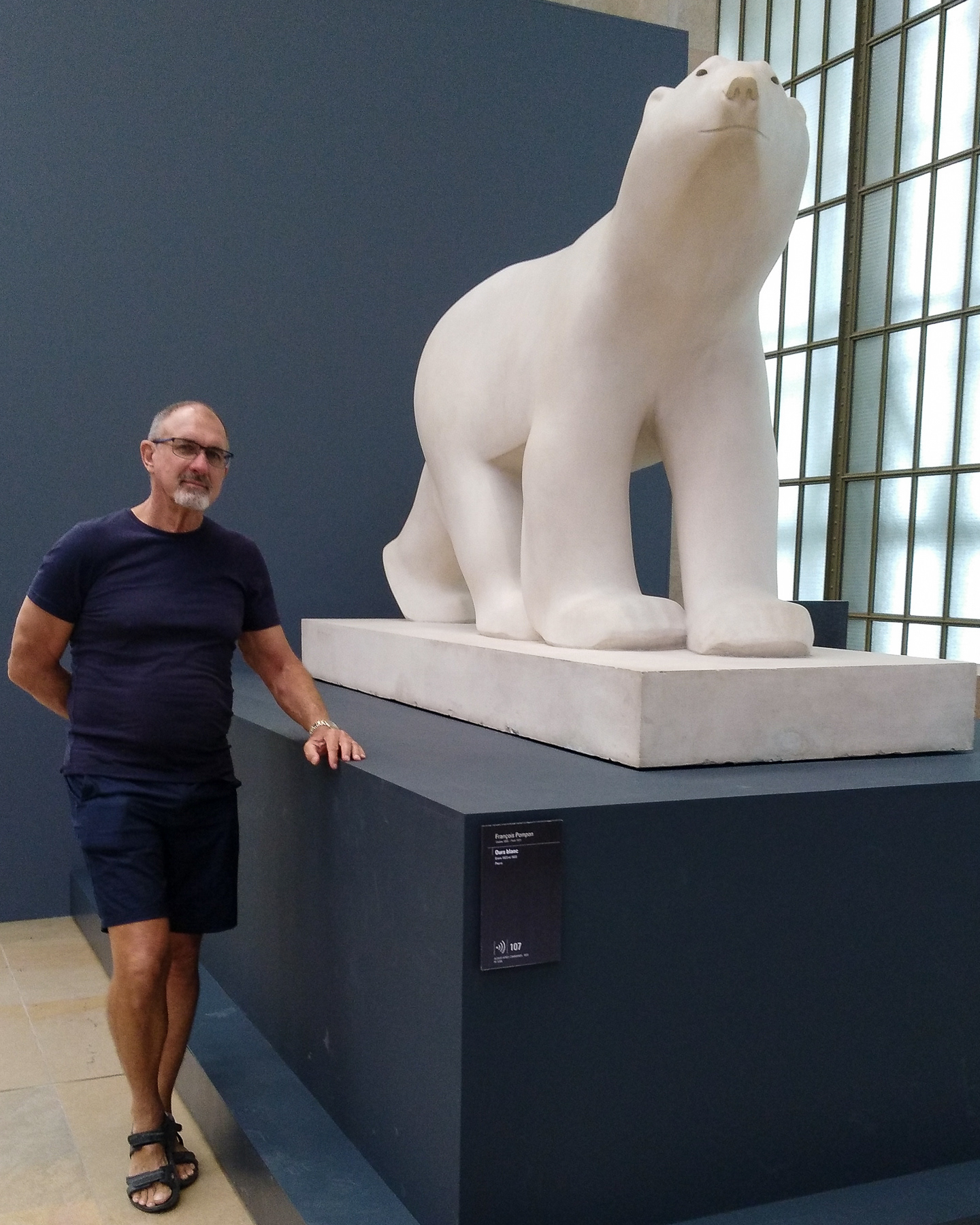


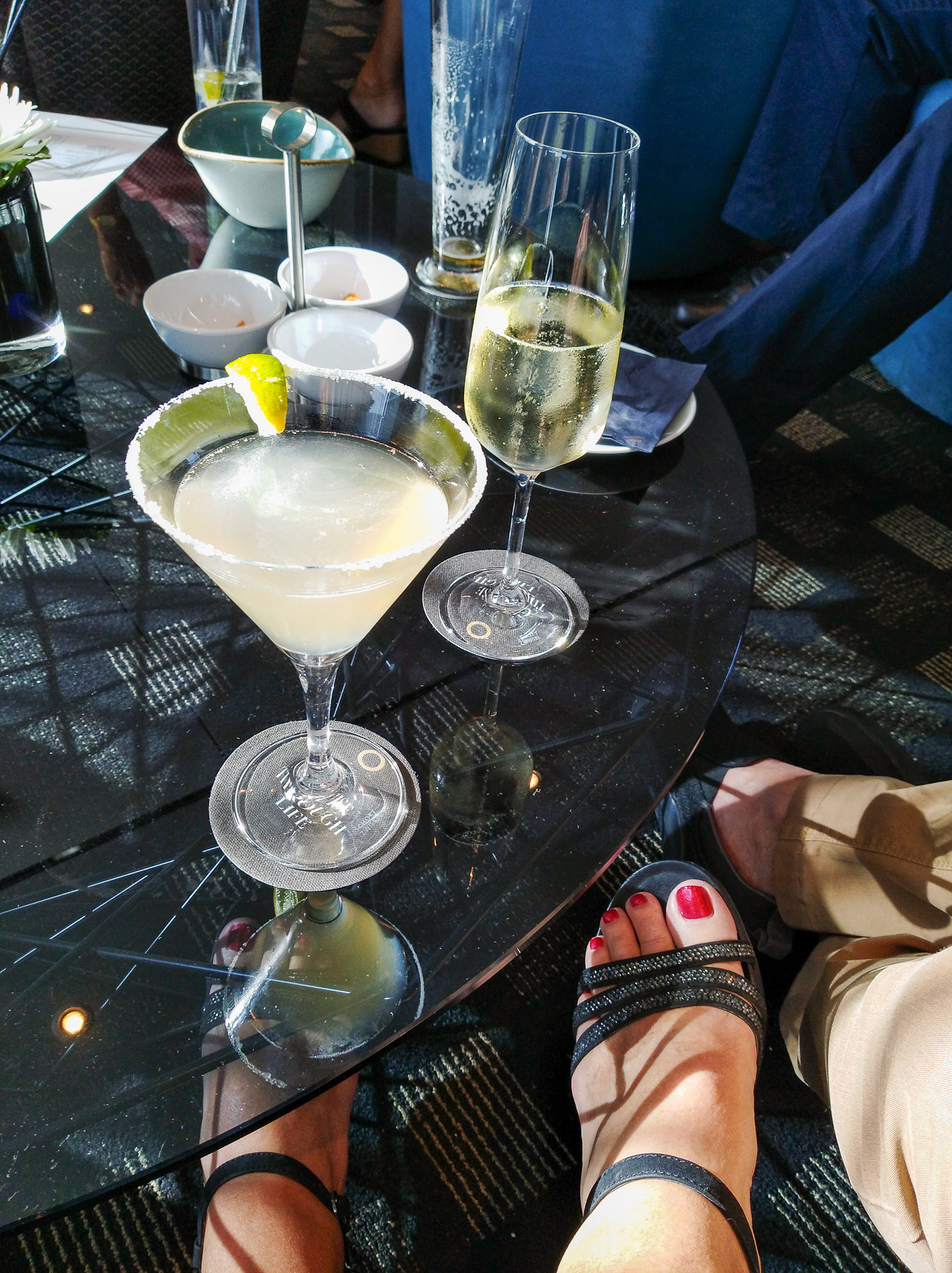
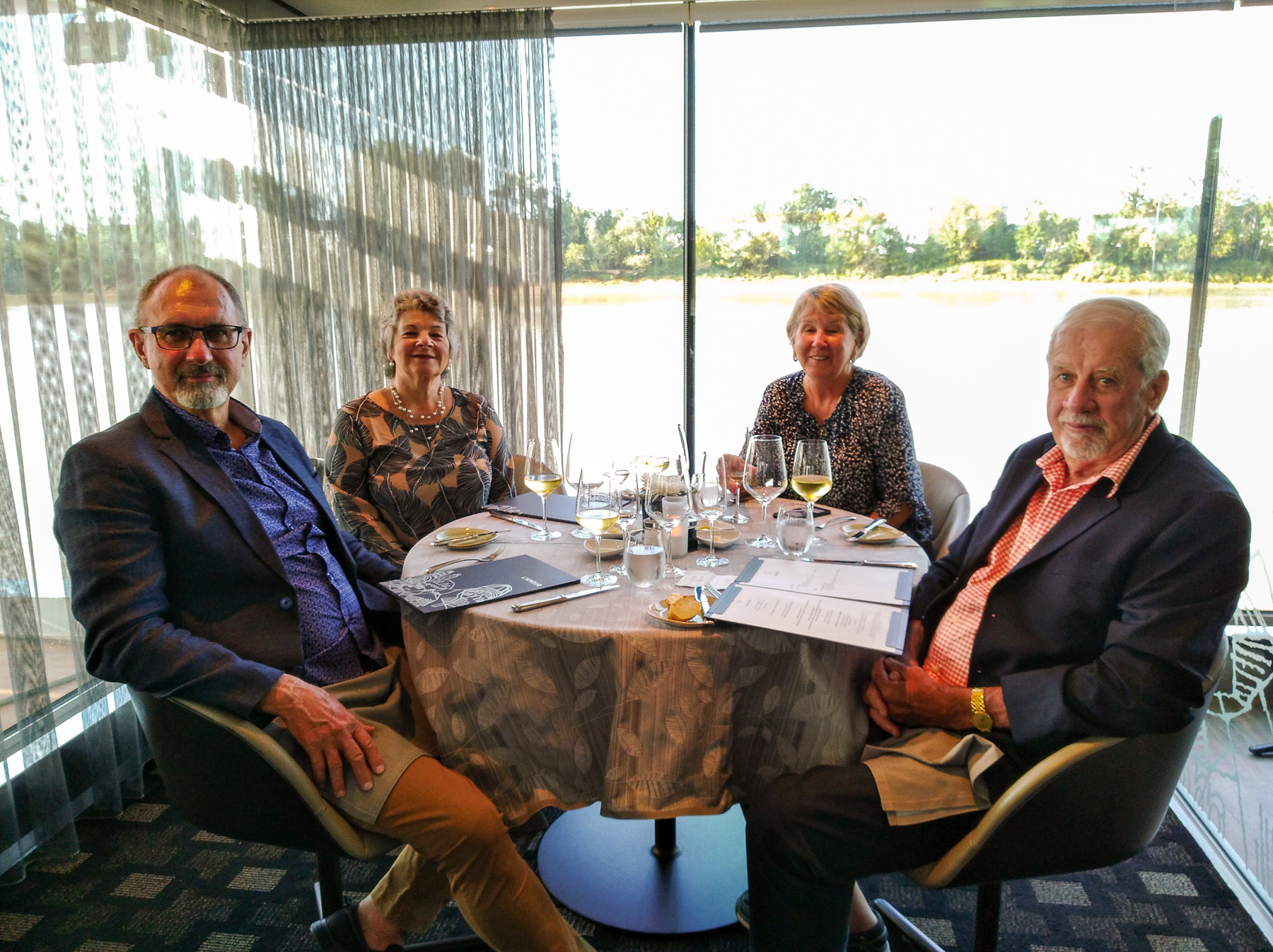
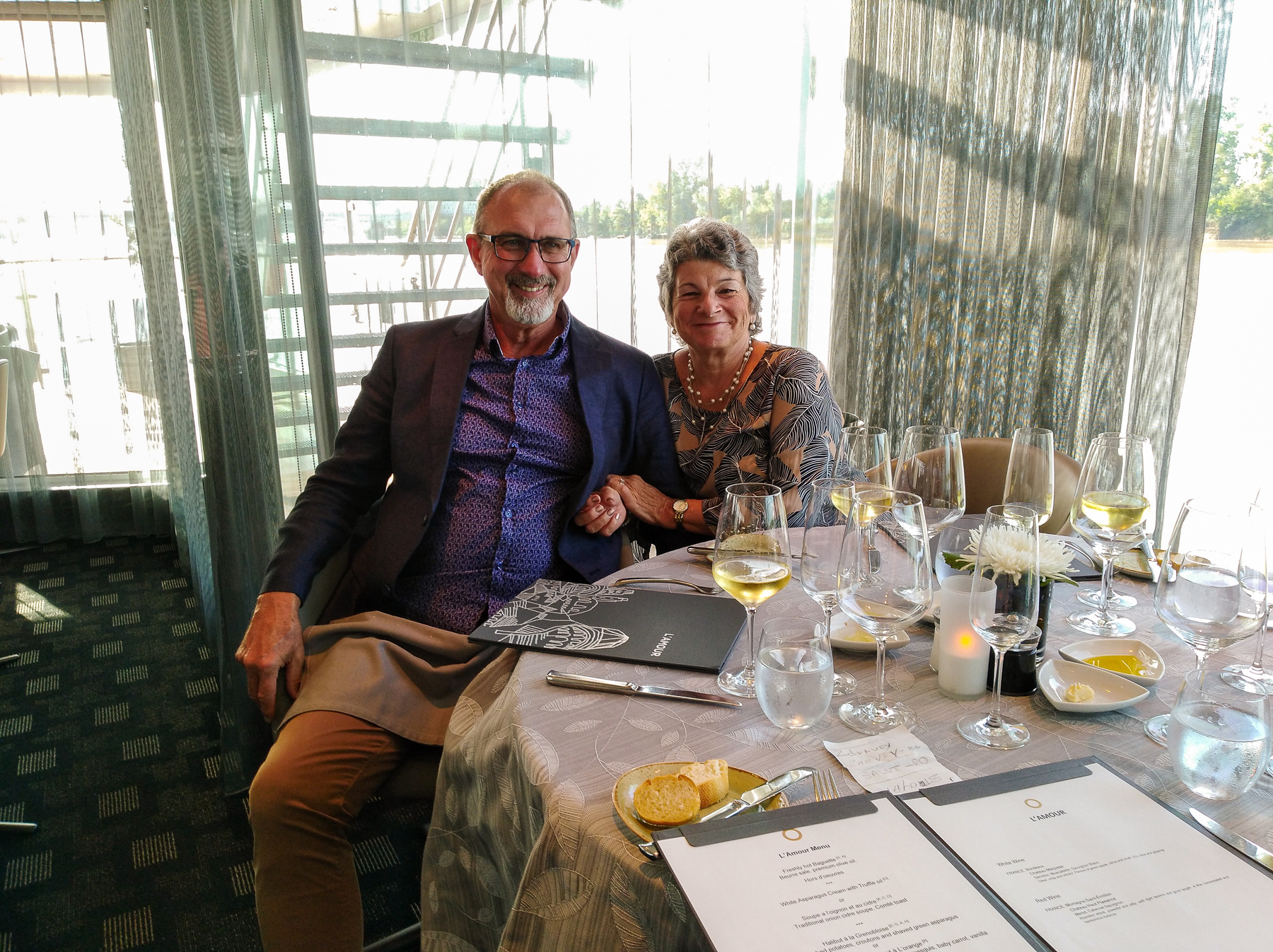
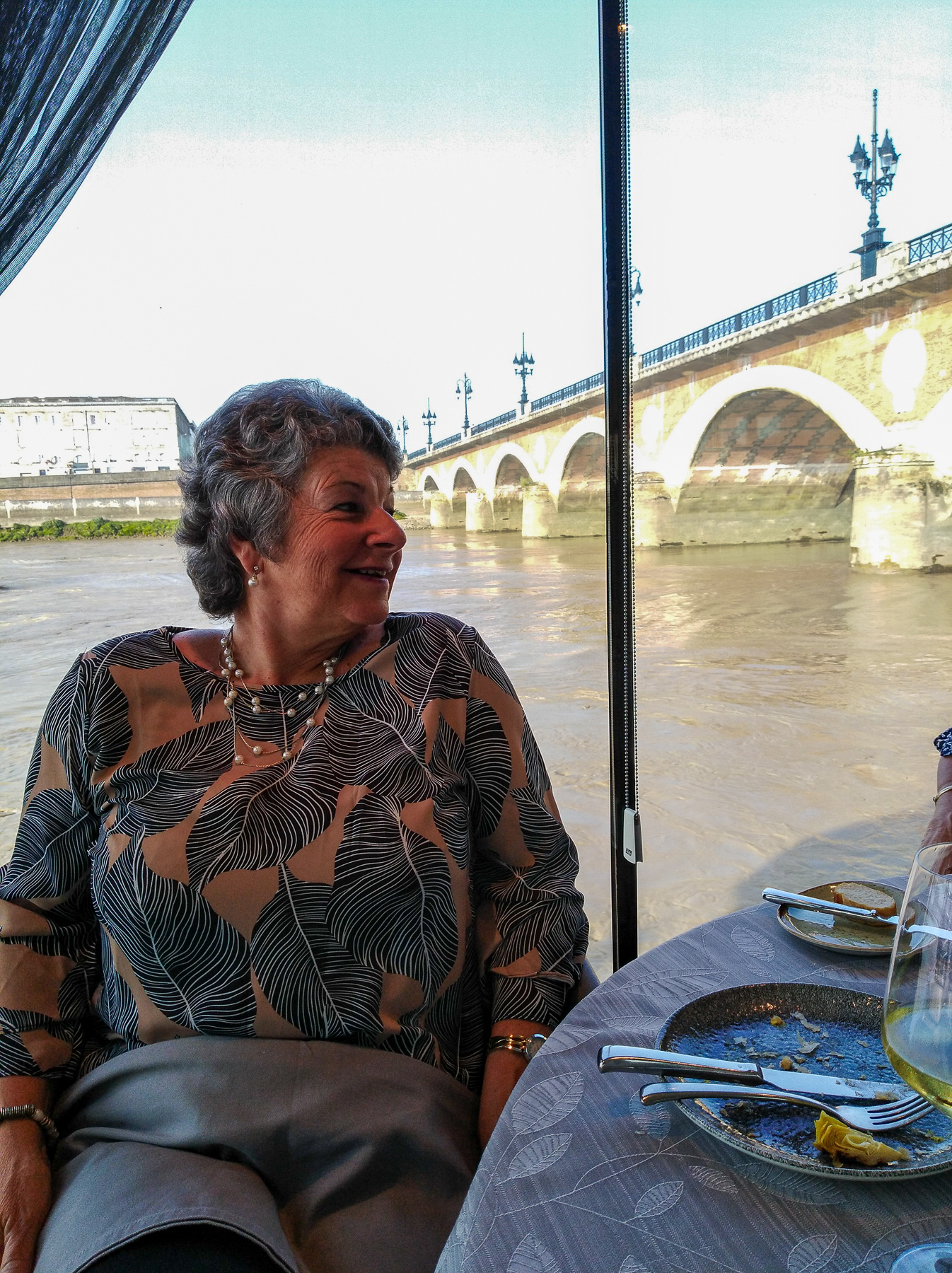
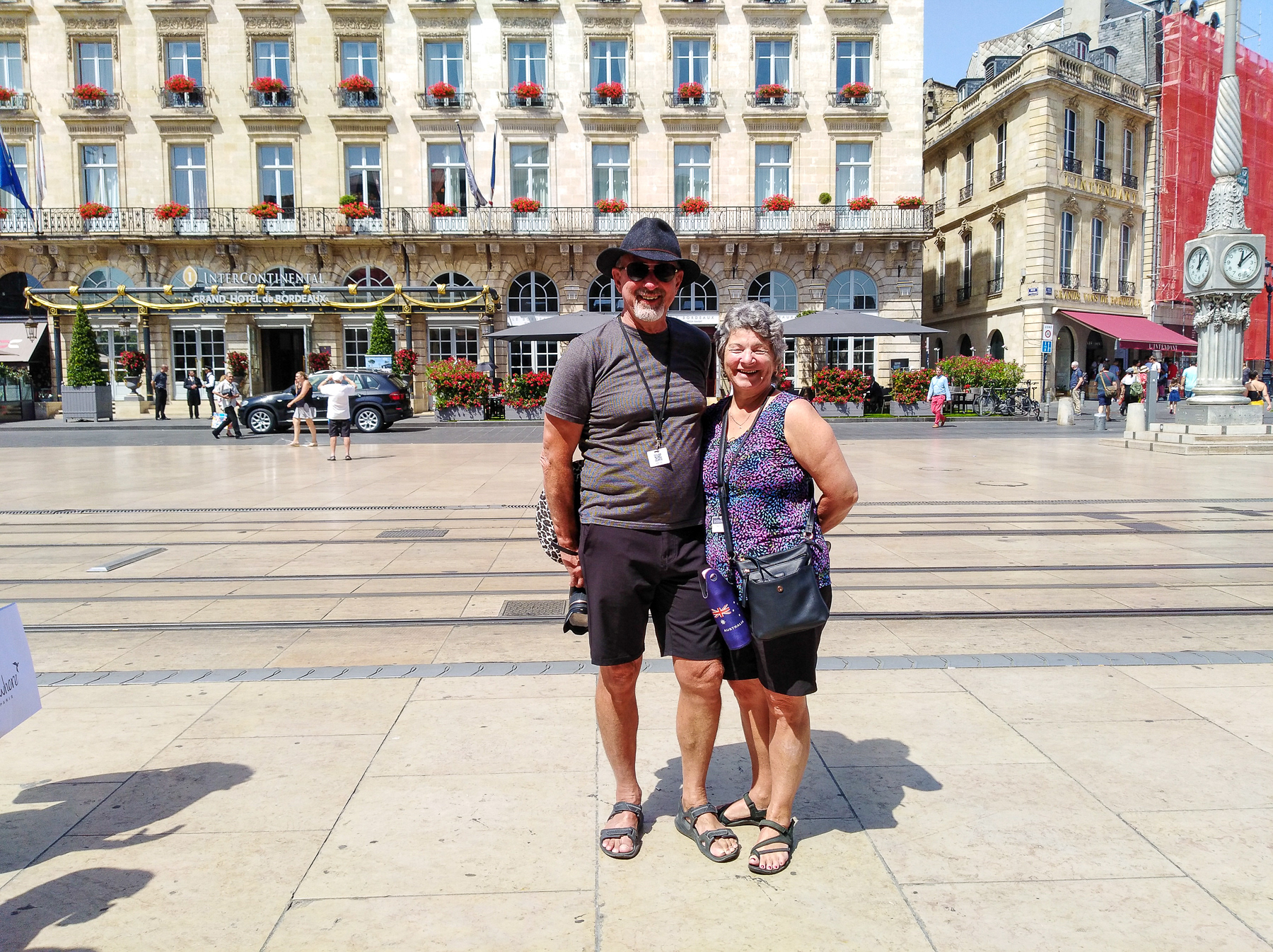

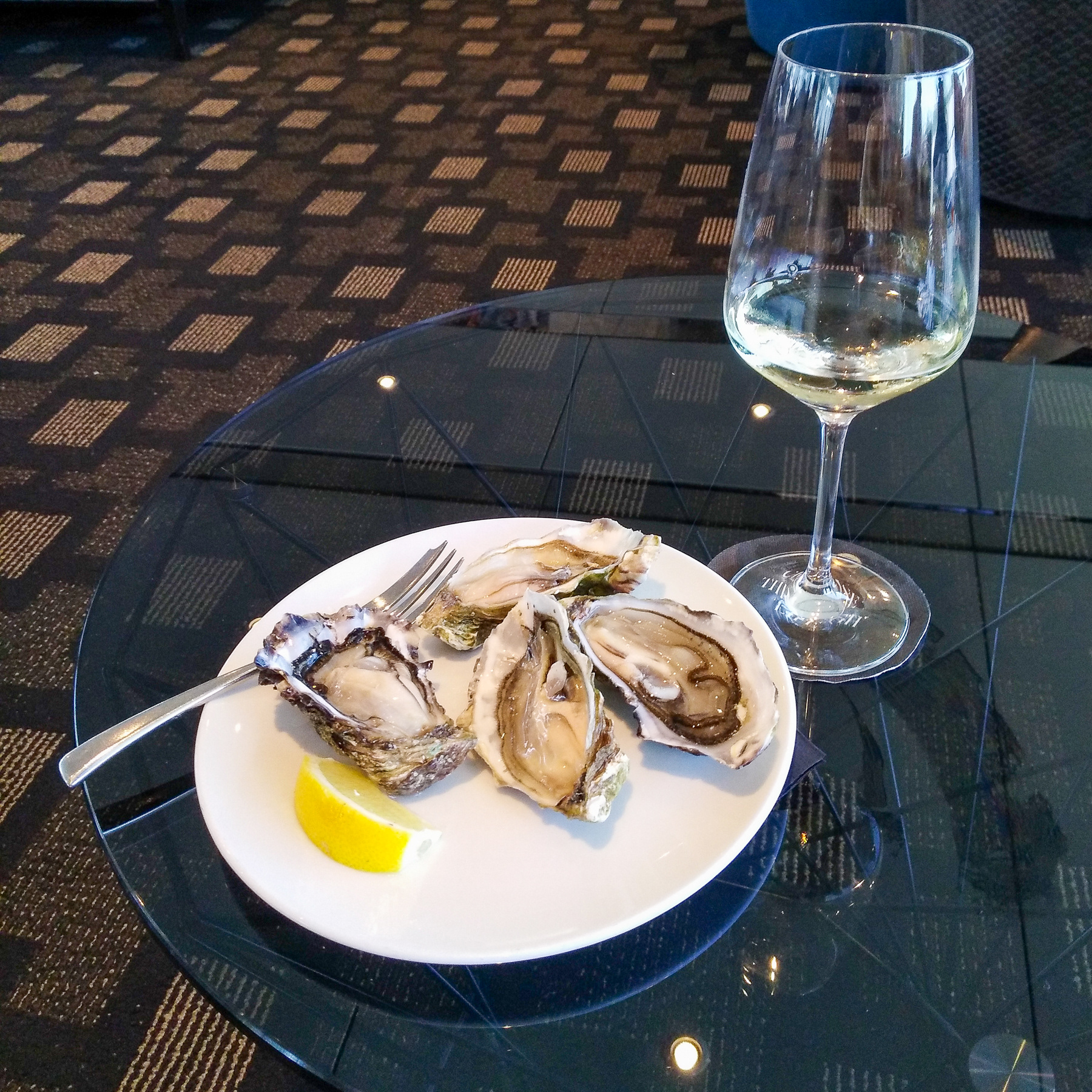
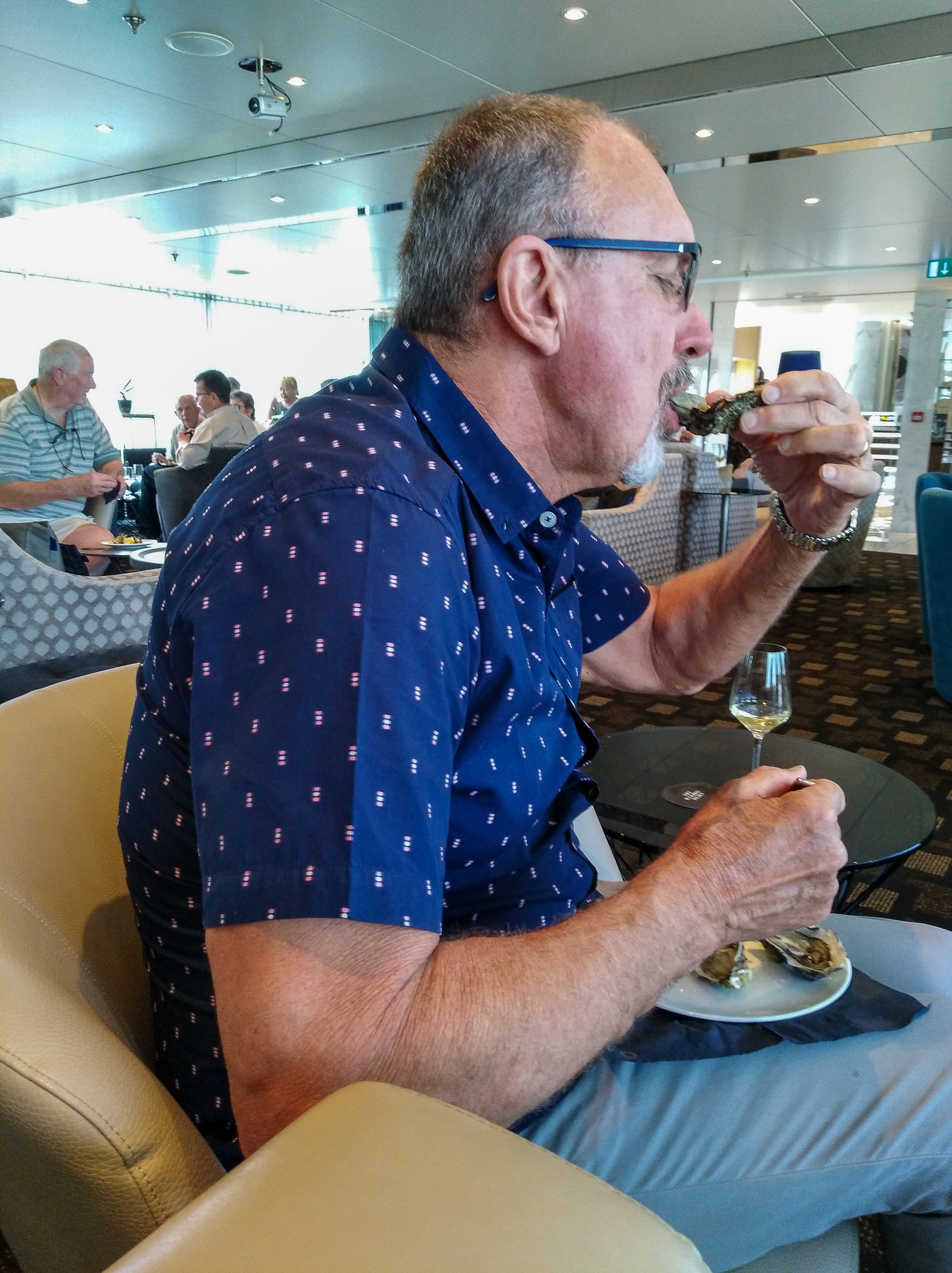
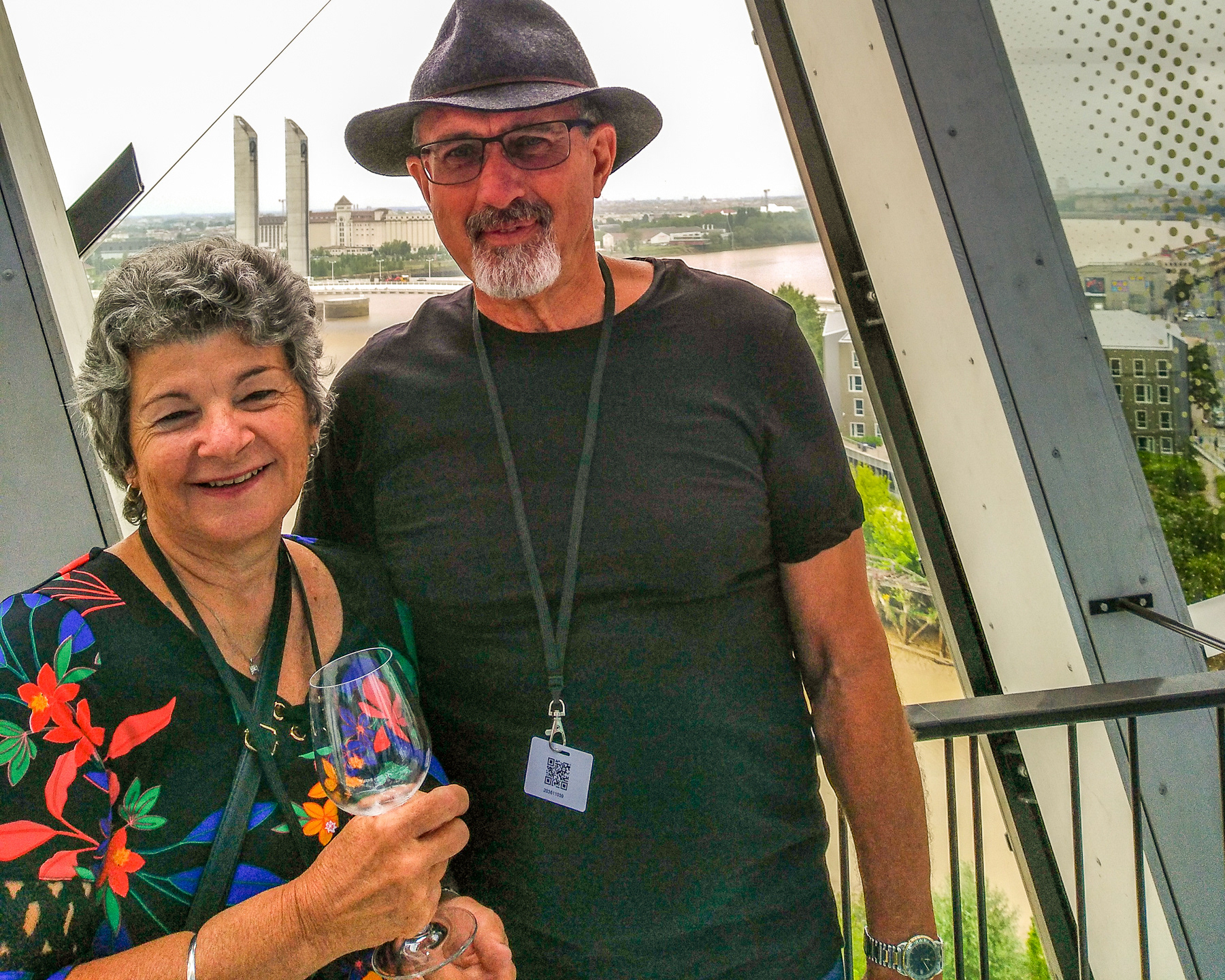
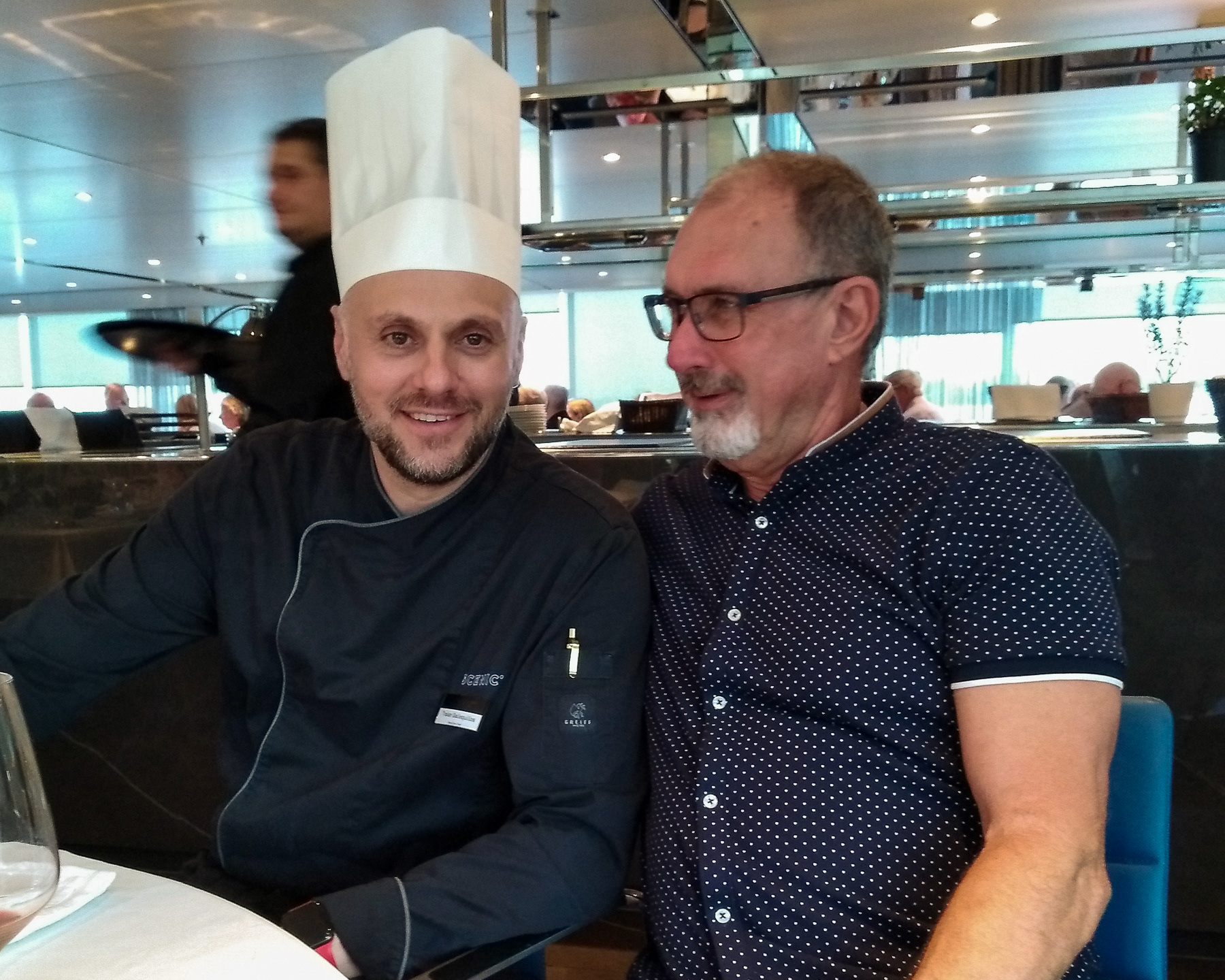
My friend Tibor - the Head Chef
